interview: the AI CEO that drove all CXOs to extinction

<The Magazine for Enterprise Applications and Associated Technologies>
VOLUME.4 . ISSUE 15 . Q2 2033
Accelerate your journey to Oracle Cloud and transform with IBM’s cognitive and automation solutions, tailored by industry and business process domain.

Learn more oracle.com/partner/ibm/

+
Areyou




























Find out how EYteams can helpyourorganisationrealise new opportunities throughaconnected approachtotransformation. Learn moreatey.com/ryf






The betterthe question. The better the answer.






The better theworldworks.

reframingyourfutureor is thefuturereframingyou?
2023Ernst&Young LL P. Al l Right s Re se rved.EDNone.
EDITOR
Paul Esherwood paul@erp.today
MANAGING DIRECTOR
Tony Little tony@erp.today
DESIGN DIRECTOR
Ceci Perriard ceci@erp.today
EDITORIAL DIRECTOR
Giacomo Lee giacomo@erp.today
CLIENT SUCCESS DIRECTOR
Ana Collins ana@erp.today
HEAD OF OPERATIONS & EA
Lauren Tilbury lauren@erp.today
DEPUTY EDITOR
Stephanie Ball stephanie@erp.today
TECHNOLOGY EDITOR
Adrian Bridgwater adrian@erp.today
CHIEF STAFF WRITER
Yoana Cholteeva yoana@erp.today
EDITORIAL ASSISTANT
Melissa Evatt melissa@erp.today
SAP NEWS ANALYST
Shana Briddock shana@erp.today
DESIGNER
Jasmine Roberts jas@erp.today
COMMERCIAL MANAGER
Richard Carr richard@erp.today
YPN CO-ORDINATOR
Grace Barrington grace@erp.today
OFFICE SUPPORT ASSISTANT
Michelie Blaney michelie@erp.today
TRAINEE
Ella Moloney ella@erp.today
EVENTS DIRECTOR
Hilary Campton hilary@erp.today
EVENTS PROJECT MANAGER
Leah Bradley leah@erp.today
TECHNOLOGY MANAGER
Lee Sherwood lee@erp.today
FEATURE WRITERS
Marc Ambasna-Jones, Christine Horton, Cristina Lago
PHOTOGRAPHY
Joel Chant, Oliver Dixon

EDITOR’S WORDS
On the brink of evolution
Each time I write the opening thoughts in a new edition of ERP Today it brings into focus just how quickly the world of technology changes. Our publishing cadence mirrors the quarter by quarter nature most vendors adhere to and provides a moment in time to reflect on how different things are today compared to just three months ago.
Large Language Models (LLMs) and Generative Pre-trained Transformers (GPTs) are not a new phenomenon. The generative pre-trained concept has been a linchpin of machine learning for a decade and the first transformers were developed back in 2017. However, every earnings call I have listened to in recent weeks and each event that I have attended has been dominated by one topic - Generative Artificial Intelligence - and so too is this issue of ERP Today.
For the first time in human history we are at the brink of an evolutionary step.
During the 300,000 years of our existence, our species has “slowly” matured through a series of small iterative changes that have improved the anthropic condition without altering the nature of what it is to be human or impacting our ‘special’ position in the universe.
The reason we have prospered above all other lifeforms is due to our intelligence. Since our first evolutionary step until the present day, the human brain has been the most intelligent thing on the planet – but that is about to change.
Charles Babbage developed the idea for a programmable computer in the 1830s and for nearly 100 years we have been obsessed with building more computational capability. The unprecedented developments in compute and algorithms have coalesced in recent years to give rise to a technology that will change the world, and our position in it.
Pondering if artificial intelligence will supersede human intelligence is no longer a relevant exercise. The only question we should be concerned with, is to what extent will that intelligence benefit humanity?
At present, AI operates within parameters set by us and is trained on datasets derived from books and research of human origin – it is learning what we already know. But it will soon be able to create organic data and will enter a period of rapid and exponential learning as it effectively teaches itself at a pace that is inconceivable to humans.
In our playful cover story, written in the year 2033, we consider some of the changes that people and businesses might expect: mega-mergers between the big tech companies, universal accords between nations, societal disruption and bounds in medicine that are hard to fathom right now.
Within a year, the proliferation of AI will be a thousand times greater than it is today. As GenAI seeps into the world around us, it will begin to orchestrate more of our lives and the companies we work for. Our homes, schools, hospitals, shops and factories will be powered by AI and every business on the planet will be a digital enterprise which runs in the cloud and is governed by artificial intelligence.
Being afraid of AI is moot. It is here and we should cautiously embrace it. For those organizations that get it right, it will be transformative beyond imagination. For those which fail to grasp its potential, it will be the source of their demise.
20-22 Wenlock Road, London, N1 7GU. Company No. 11642743
CALL US 0207 427 6056
erp_today @erp_today erp-today
PS – we have been playing with AI a lot (mainly to see if we would be out of a job soon) and there are 7 images in this edition that have been produced by generative AI. If you can spot them, send me an email and the first 10 correct answers will get a free VIP ticket to the ERP Today Awards.
ERP.TODAY
ERP
TODAY MAGAZINE LIMITED
CONTENTS
COVER STORY 44
Will CEOs always have faces? Depends if they’re human

ERP TODAY | Q2 2023

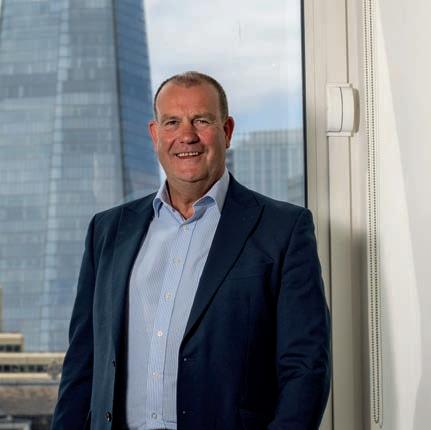


ARTICLES 09 News, Deals & Wins Industry news from across the enterprise technology sector 44 Cover story from 2033 Meet Maxi, the AI CEO that drove all CXOs to extinction 56 GenAI for enterprise AI guru Pascal Bornet gives his take on ChatGPT 66 Deltek beyond D.C. Deltek CEO Mike Corkery talks PSA and GovCon 72 SAP’s green blockchain GreenToken CEO mixes ESG into web3 76 CIO peer pressure Who gets the power with ChatGPT? 80 An Arcwide anniversary Catching up with IFS’ “preferred partner” 90 Resilience for global enterprise Insight from Unit4 CEO Mike Ettling 94 A Whitehall overhaul One down, four to go in Civil Service’s ERP cluster strategy 100 The end of the HQ? Snowflake and more on ditching their headquarters 106 Sustainable city startups AWS’ Jeff Kratz talks infrastructure for the billion-dollar business 110 Mind the twin TfL’s digital twin of London’s Piccadilly Line 116 Data streaming How ERP steers faster with data streaming 136 Photo diaries The best events in the enterprise space 144 A young professional’s view on AI Signing off with young professional star Vivien Boche 56 76 80 72
The Indus y’s #1 aw ds event




SUPPORTED BY THE STRONGEST BRANDS IN THE INDUSTRY


















THRILLED TO ANNOUNCE THAT IN AID OF THE ERP
JO BRAND IS HOSTING IS
TODAY AWARDS & FUNDRAISER
GOLD
SUPPORTING PARTNERS
SILVER
The Trilogy Event
ASCOT RACECOURSE, 14 TH SEPTEMBER 2023
The 2023 event will be the final part of our trilogy and the last in the current format.
We are firm believers that you must continually evolve and our 2023 event will be a fitting finale to our association with the NHS and NHS Charities Together.


The 2023 event coincides with the NHS’ 75th anniversary and the enterprise tech community has a unique opportunity to show our collective support for our NHS heroes while taking part in the industry’s biggest and best corporate event.

3,100 people connected and celebrated at Ascot Racecourse in 2022 and we are expecting many more than that on 14th September 2023.

ERPTODAYAWARDS.COM
THE ERP TODAY AWARDS & FUNDRAISER
TICKETS
ON SALE NOW! Anniversary th 75
Are you ready to innovate?

Supercharge your business with cutting-edge innovation by migrating to SAP S/4HANA in the cloud.

NEWS DEALS &WINS
Huawei unveils potential “TikTok of ERP” with MetaERP
BY GIACOMO LEE
April saw Chinese tech giant Huawei unveil its own proprietary ERP system in the form of MetaERP, replacing the company’s original USA-provided provisions via Oracle. An awards ceremony marked the launch of the software, in the company’s innovation center Xi Liu Bei Po Village (Huawei Ox Horn Campus), based in the city of Dongguan. Photos from the awards show it taking place in front of the campus’s grand Europeanstyle architecture, arguably the perfect spot for the kind of Wes Anderson homage recently trending on unstoppably popular social media platform TikTok
Considering Huawei’s equally considerable stature, MetaERP could very well prove to be a TikTok-scale dragonslayer in the enterprise tech field. But as Huawei told ERP Today in its only international interview regarding the project, “without U.S. sanctions, Huawei had never considered developing its own ERP”.
When the U.S. added the Chinese brand to the Entity List in May 2019, the
company found itself at risk of having the plug pulled on its entire worldwide business system. Since the late 1990s, Huawei’s major ERP considerations were provided by Oracle; the relationship between Huawei and Oracle, the latter of which declined to comment on the matter to ERP Today, was a strong one.

“[We have] been a loyal and one of the largest ERP users globally for decades, and we incorporated the system into most parts of the business,” as Huawei told us.
Within MetaERP is support for the major business processes Huawei carries out across its base of 207,000 employees in more than 170 countries and regions. The project involved several thousand working on what it has described as “the most extensive and complex transformation project” it’s ever undertaken.
According to Huawei, the metadata multi-tenant architecture is used to standardize metadata assets, using real-time intelligent technologies in order to make good use of data. “For example,” we were told, “multiple AI models are preset
to achieve scientific and efficient risk control and operation decision-making”.
The tech here seems to surpass Oracle’s original considerations. But it might be more reasonable to assume it replaces all of the historical provisions from Oracle, which ERP Today was unable to determine at time of writing.
Huawei had already implied on launch that currently it has no plans to commercialize MetaERP. The reason why isn’t necessarily because of geopolitics or business reasons; as ERP Today learnt, it’s simply because of its precise nature as a solution: “MetaERP is only meant for Huawei internal usage”, said a company spokesperson.
Even if this wasn’t the case, U.S. Big Tech can probably rest easy for now. Industry research from China’s Tenba Group shows that SAP and Oracle lead in first and second positions in the country with over 50 percent combined share in the ERP market for larger enterprises.
Whether this picture will look the same in, say, 2033, only time will tell.
visit us ERP.TODAY 9
Perfect for TikToking: Huawei’s Xi Liu Bei Po Village (Huawei)
DEALS &WINS
vendor ecosystems will follow in the future.
ERP Today founder, Paul Esherwood, has joined WIS’ leadership team as CEO of the EMEA region for the enlarged organization, and continues as editor of ERP Today UK and ERP Today USA.
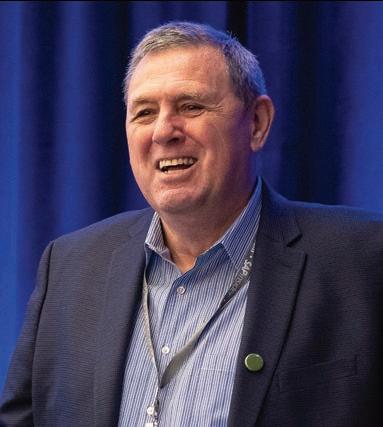

A GLOBAL MEDIA POWERHOUSE
ERP TODAY, SAPINSIDER, MASTERING SAP AND CHANNEL METRICS
Wellesley Information Services (WIS), owner and operator of SAPinsider, Mastering SAP and Channel Metrics, has made a strategic investment in ERP Today. The deal will serve the global B2B enterprise
technology community, combining ERP Today’s publishing expertise and WIS’ unrivaled membership, events, digital and research services and performance analytics credentials.
The investment provides significant capital and capabilities to facilitate
ERP Today’s global expansion and deliver a suite of marketing program performance analysis technology to improve customer experiences. SAPinsider magazine will be relaunched and new titles and member communities for other
Esherwood said: “The team at WIS stood out as the perfect people to work with. The Channel Metrics ‘Performance Insights Platform’ will be a gamechanger for our customers, demonstrating the effectiveness of every campaign with meaningful data and analytics.”
Jamie Bedard, CEO, WIS, said: “The team at ERP Today has created a unique brand, respected and admired across the B2B industry. Combining ERP Today and our leading services with our technology platform, we will create enhanced experiences for our global members and deliver new opportunities for our technology company partners.”
Alphabet Q1 results: Google Cloud makes its first profit
Alphabet ’s Q1 results show Google Cloud making a profit for the first time, with revenue of $7.4bn, up 27.5 percent. Operating losses dramatically dropped to $191m from $706m year-on-year.
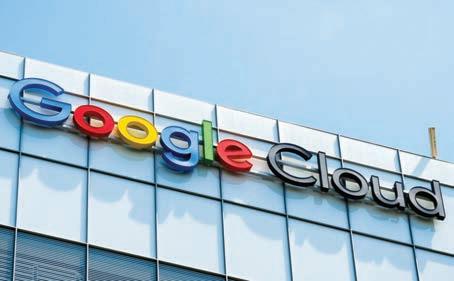
Earnings were boosted by customer wins, a growing partner ecosystem, which has grown over 15
times globally over four years, and generative AI advances.
Alphabet’s revenue totaled $69.79bn, up three percent YoY and topping estimates of $68.9bn.
YouTube ad revenue stayed in line with analyst expectations at $6.7bn, also declining from a year ago, down three percent.
10 ERP TODAY | UK / EMEA | Q2 2023
NEWS
Paul Esherwood
Jamie Bedard






































































SUSE changes hats with new CEO to accelerate business growth
SUSE has appointed former Red Hat senior vice president, DirkPeter van Leeuwen as the firm’s new CEO.
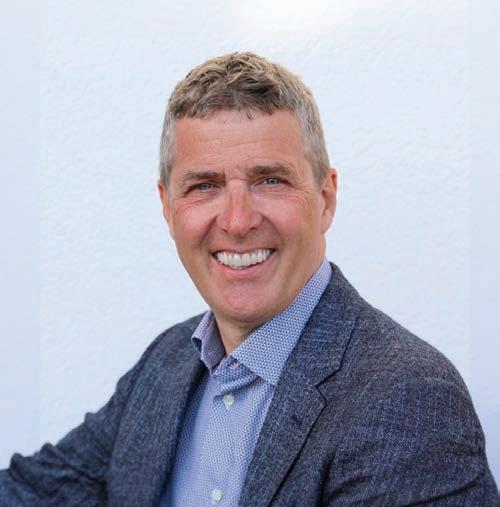
This news follows former CEO Melissa Di Donato’s departure as she stepped down after almost four years to embark “on the next chapter of her career”. Di Donato leaves SUSE having propelled the company in the high-growth markets of container management and security, plus successfully completing the strategic acquisitions of Rancher Labs and NeuVector
percent and the company performed better than expected in its fiscal Q1, swallowing last fiscal year’s operating losses and rising operating profits by 101 percent.
When the company went public in May 2021, it became one of Europe’s most valuable firms. SUSE’s share value has since decreased by 45 percent.
VAN LEEUWEN JOINS THE COMPANY WITH NEARLY TWO DECADES OF EXPERIENCE AT RED HAT
Under Di Donato, SUSE revenues grew by 60
Van Leeuwen joins the company with nearly two decades of experience at Red Hat, previously serving as senior vice president and general manager North America, Asia Pacific and Japan.
Van Leeuwen is expected to lead the company’s “next phase of accelerated profitable growth”.
Speaking of his appointment, van Leeuwen said: “I would like to thank the supervisory board for the opportunity to join as CEO, and also Melissa who has led the company through a significant period of trans-
Dirk-Peter van Leeuwen
formation and growth. I have admired the organization for many years and am now looking forward to working with...the entire organization. I know that SUSE’s people are some of the best in the industry and I am excited to see what we can achieve together.”
AWS TO LAUNCH EUROPEAN DEFENSE ACCELERATOR

Amazon Web Services has launched the AWS European Defense Accelerator to support defense and national security customers.
The accelerator supports startups with AWS cloud technologies to provide energy resilience, secure information sharing, sensing and decision making, quantum and cyber resilience solutions.
It provides a solution to challenges faced by defense and national security organizations, including climate change, increasing cyber threats and the rapid evolution of advanced technologies.
A four-week technical, business and mentorship program, the AWS European Defense Accelerator is delivered in collaboration with Plexal, a UK
government-supported innovation technology firm. It offers opportunities for defense and national security leaders to mentor startups on topics ranging from defining their business models to showcasing their solutions’ business value. Startups can benefit from access to specialized training, AWS computing credits and technical subject matter experts.
12 ERP TODAY | UK / EMEA | Q2 2023 NEWS DEALS &WINS
EY expands consulting and ServiceNow scope with whyaye acquisition
EY has acquired whyaye , a UK-based consulting services provider for the ServiceNow platform, marking the eighth UK EY acquisition in two years. It follows EY’s plans to double its UK and Ireland consulting services over the next four years in a £75m investment.
Founded in 2019, Newcastlebased whyaye has over 100 employees across the UK. Known as EY whyaye , the acquisition will support the growth of EY technology consulting services by enhancing capacity, capabilities and market presence around the

ServiceNow technology platform.
Maureen Robson-Norman, whyaye CEO, will join EY as a partner and said: “This is an important milestone for whyaye. We’re looking forward to working collaboratively with EY teams to accelerate our growth and work with clients on their transformation journeys.”
EY PLANS TO DOUBLE ITS UKI CONSULTING SERVICES OVER THE NEXT FOUR YEARS IN A £75M INVESTMENT
Jordi Ferrer, vice president and general manager UKI at ServiceNow, said: “The addition of whyaye will enable the EY and ServiceNow strategic collaboration to expand further, helping more companies be more agile and productive in an era of rapid change.”
Workday drives steady growth in first quarter results
Workday has revealed its fiscal 2024 first quarter results with a reported total revenue of $1.68bn, an increase of 17.4 percent from the first quarter of fiscal 2023, showing contin-
ued momentum toward its $10bn target.

Additionally, the company saw subscription revenues of $1.53bn, an increase of 20.1 percent from the same period last year.

Operating cash flows were $277.3m compared to $439.7m as of April 30, 2023. Cash, cash equivalents and marketable securities were $6.33bn as of April 30, 2023.
HPE Q2 RESULTS FALL SHORT OF RECORD-BREAKING Q1 ESTIMATES
HPE has reported its Q2 ‘23 results, with $7bn revenue falling just short of its $7.1bn-$7.5bn prediction. Intelligent Edge, with $1.3bn revenue, and High Performance Computing (HPC) and AI revenues, $840m, drove Q2 performance, up 50 and 18 percent respectively YoY. Annualized revenue run-rate was $1.1bn, an increase of 35 percent YoY. Compute revenue fell eight percent YoY to $2.8bn and storage revenue fell three percent YoY to $1bn. Q3 fiscal ‘23 revenue estimates are $6.7bn-$7.2bn.
visit us ERP.TODAY 13
Carl Eschenbach
Maureen Robson-Norman
When digital solutions work, you can modernise your operations to drive productivity across your entire organisation.
When digital solutions work, you can modernise your operations to drive productivity across your entire organisation.







When customer experience works, modern, intuitive, connected service delivers deeper customer loyalty.
When customer experience works, modern, intuitive, connected service delivers deeper customer loyalty.












When low-code apps work, almost anyone can easily build custom tools on a single, unified platform.
When low-code apps work, almost anyone can easily build custom tools on a single, unified platform.



When employee experience works, routine tasks are automated, work flows freely, and your people focus on doing the work they love.
When employee experience works, routine tasks are automated, work flows freely, and your people focus on doing the work they love.


The world works with



ServiceNow.
ServiceNow.



More than ever, technology is helping people around the world work together to solve some of our greatest challenges. Look around. Work is actually working.
More than ever, technology is helping people around the world work together to solve some of our greatest challenges. Look around. Work is actually working.
Every day, we help organisations of every size, in every industry, digitally transform the work they do — so it simply works better. Unlocking progress once blocked by barriers. Streamlining ideas once hindered by processes. Making work easier for everyone. It’s why the world’s leading companies rely on us. And it’s how we can help you. There are infinite applications of our solutions to help solve even your toughest business challenges. So let’s go to work. Because when the work flows, the world works.
Every day, we help organisations of every size, in every industry, digitally transform the work they do — so it simply works better. Unlocking progress once blocked by barriers. Streamlining ideas once hindered by processes. Making work easier for everyone. It’s why the world’s leading companies rely on us. And it’s how we can help you. There are infinite applications of our solutions to help solve even your toughest business challenges. So let’s go to work. Because when the work flows, the world works.



That’s why the world works with ServiceNow.
That’s why the world works with ServiceNow.













ServiceNow.com/UK/WorldWorks
ServiceNow.com/UK/WorldWorks













S:285 mm
SAP innovation sweep at Sapphire with AI
SAP unveiled new developments at this year’s Sapphire in Orlando, including SAP Business AI, Green Ledger and an Accenture collaboration.

SAP Business AI extras include more personalized customer engagement, procurement productivity gains and expanded talent development across workforces, following SAP’s recent partnership expansion with Google to advance enterprises’ use of open data and AI.
A new Green Ledger will provide data for auditable and transparent carbon emission calculations, while an SAP Sustainability Footprint Management update handles corporate, value chain and product-level emissions.
New SAP Sustainability Data Exchange, part of RISE with SAP and GROW with SAP, will securely exchange standardized sustainability data with partners and suppliers to
decarbonize supply chains faster.
An Accenture and SAP partnership will bring immersive services to SAP BTP and improve supply chain resilience and sustainability. Customers will be able to simulate business scenarios in rich, interactive digital environments. Accenture will work with SAP Business Network to develop a sustainable trading partner network. Combining networked supply chains with SAP offerings, SAP Business Network for Industry will help customers across consumer products, high tech, industrial manufacturing and life sciences improve supply chain resilience at pace. New event integration in its low-code offering, SAP Build, will enable business experts to trigger automation.
Doubling down on upskilling two million people worldwide by 2025, SAP also announced new programs to meet the demand for SAP experts.
VNDLY gets fresh face post acquisition
Workday has revealed that VNDLY has become Workday VNDLY , following the firm’s acquisition of the vendor management system (VMS) back in 2021.
Under its new name, Workday VNDLY provides organizations with full visibility into their entire workforce; including total costs, talent planning and development, and control compliance and security risks for contingent workers.

Workday VNDLY is the only VMS that can directly connect to Workday’s core data foundation. The announcement marks Workday as the first enterprise management cloud platform to fully include extended workers in the workforce ecosystem.
Shashank Saxena, co-general manager at Workday VNDLY said: “We already had a really strong foundation in place, which prompted us to ask ourselves, ‘Now, how do we take the value we’re delivering for our customers to the next level?’ We have a robust, native API-based integration with Workday HCM, and our customers are asking for additional API-based integration with other Workday products.”
16 ERP TODAY | UK / EMEA | Q2 2023 NEWS DEALS &WINS
AN ACCENTURE AND SAP PARTNERSHIP WILL BRING IMMERSIVE SERVICES TO SAP BTP
Orange County Convention Center
ServiceNow AI momentum builds with NVIDIA, Microsoft and Hugging Face
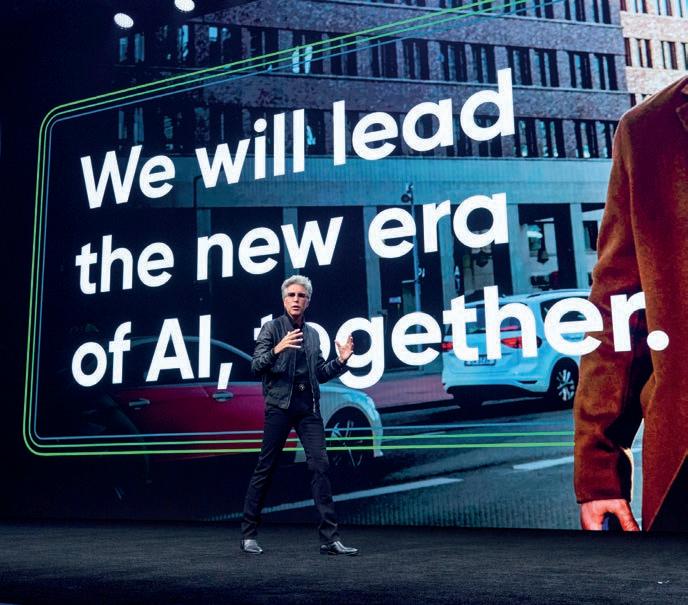
ServiceNow has unveiled a partnership with NVIDIA at its Knowledge 23 event, building its ecosystem for enterprise-grade generative AI capabilities.
The vendor will leverage NVIDIA’s custom large language models trained on specific data for the Now platform. It adds to ServiceNow’s use of Open AI and domainspecific LLMs and offers AI capabilities for employees and developers, IT departments and customer service teams.
Intelligent virtual assistants and agent tools will improve with purpose-built
LLM-fed, customizable AI chatbots. Customer service teams can use generative AI for automatic issue resolution and article generation based on case summaries and chat summarization.
In addition, it will help identify employee growth opportunities based on natural language queries and information from employee profiles.
The alliance follows an NVIDIA partnership with Oracle to offer NVIDIA DGX Cloud, an AI supercomputing service using OCI’s Supercluster where enterprises can access their
own AI supercomputer using a web browser.
Also at K23, ServiceNow expanded its partnership with Microsoft to offer new Now Platform solutions. Capabilities include a ServiceNow Generative AI Controller, enabling organizations to connect ServiceNow instances to OpenAI and Microsoft Azure OpenAI, and Now Assist for Search, bringing generative AI to Portal Search, Next Experience or Virtual Agent.
UIPATH REVEALS STEADY GROWTH FOR Q1
UiPath has reported its Q1 fiscal 2024 financial results with revenue of $289.6m, an increase of 18 percent year-on-year.
Additionally, ARR was $1.249bn, up 28 percent YoY, along with net new ARR at $45m.
The company’s steady results follow from its recent appointments, partnerships and integrations. UiPath has welcomed Kelly Ducourty, former Google Cloud market strategy and operations lead, to the team and has explored more partnerships, including Orica, Xerox, SAP and Snowflake
UiPath has estimated its Q2 fis-
The K23 announcements follow the StarCoder release, a 15 billion parameter open access LLM for code generation, from ServiceNow and Hugging Face . Part of the BigCode Project, the StarCoder LLM looks to scale responsible and transparent AI innovation and allow organizations’ developers to harness generative AI with governance, safety and compliance protocols.
cal 2024 revenue in the range of $279m-$284m, with ARR expected between $1.301bn-$1.306bn as of July 31, 2023. Raising its growth objective, UiPath predicts revenue in the range of $1.267bn$1.272bn for the full year, exceeding its previous year and ARR in the range of $1.427bn-$1.432bn as of January 31, 2024.
“Customers are partnering with UiPath to harness the combination of generative AI and automation in an enterprise-grade platform,” said Daniel Dines, UiPath cofounder and co-CEO.
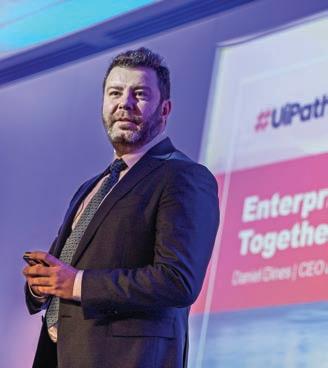
visit us ERP.TODAY 17
Daniel Dines
Bill McDermott
FinancialForce undergoes total rebrand to Certinia

Certinia has completely rebranded its name to align with the company’s evolution and delivery of a comprehensive SaaB platform.
Formally known as FinancialForce, the company plans to seamlessly connect all aspects of service operations, customer success management and financial planning to empower businesses to deliver excellent services, enhance customer experience and accelerate growth.
Certinia’s SaaB platform includes professional services automation, customer success, Services CPQ, ERP and FP&A solutions.
Scott Brown, CEO of Certinia, said: “FinancialForce was the perfect name when the company was founded in 2009 describing its intent to deliver ERP on Force.com.
“Over the past decade, the company invested heavily to become the most trusted PSA solution in the market. Now, we have expanded our ERP leadership with the addition of FP&A, and recently launched new products in two additional markets with Customer Success Cloud and Services CPQ. Together, these are a comprehensive and tightly integrated platform for services businesses.”
Aiman Ezzat
UKI leads Capgemini
Q1 growth after Whitehall wonder win
Capgemini has announced its Q1 2023 results with a growth of over ten percent during the quarter. The regions of EMEA, France and UKI showed the most growth in the period, with North America reporting the least growth.
Revenues totaled €5,729m for Capgemini in quarter one, up 10.9 percent year-on-year at current exchange rates and 10.7 percent at constant exchange rates. In comparison to the same period last year, the results showed a drop of 38 percent.
The highest growth for the quarter was in UKI at 13.9 percent, with the rest of Europe at 13.8 percent. France saw growth of 12.4 percent, followed by APAC and LATAM at 8.4 percent. The North American segment reported an increase of 6.1 percent. Bookings meanwhile totaled €5,867m, up 6.5 percent. Capgemini’s biggest UK win in the quarter was April’s announcement that the Cabinet Office handed the firm a contract worth £13.5m as one part of a digital transformation project for the UK government. Capgemini will also be moving the Whitehall department from Google Workspace to Microsoft 365.
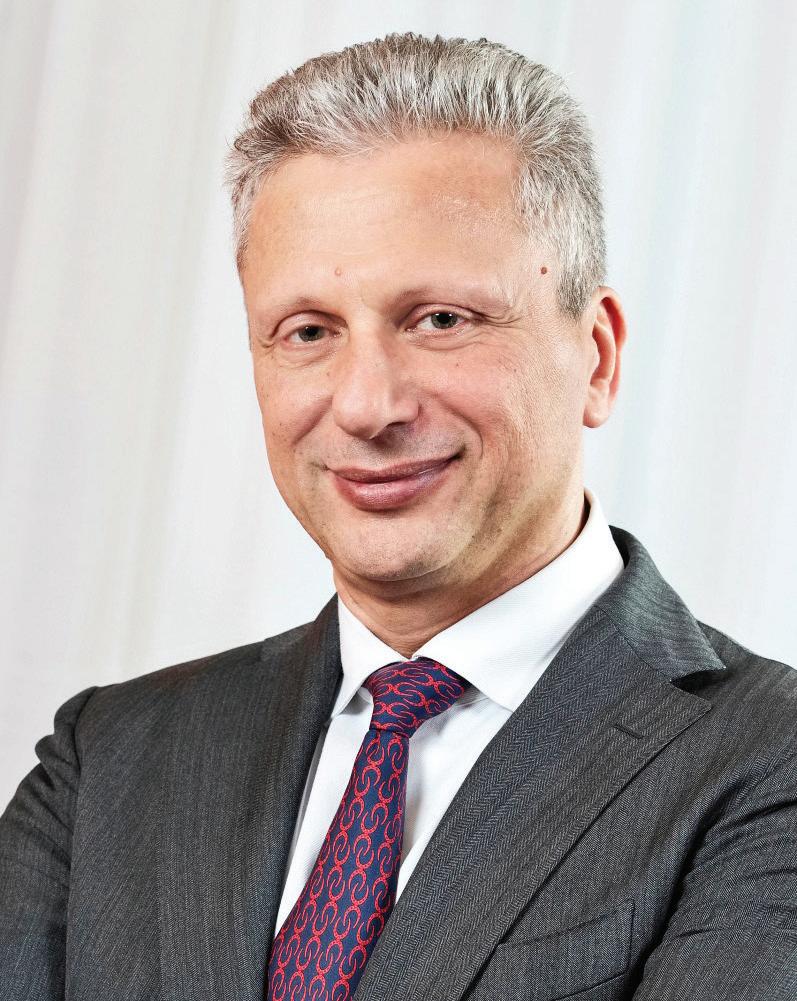
18 ERP TODAY | UK / EMEA | Q2 2023
NEWS DEALS &WINS
“OVER THE PAST DECADE, WE’VE INVESTED TO BECOME THE MOST TRUSTED PSA SOLUTION.”
Can you afford for your ERP project to fail?
With 55-75% of ERP projects either failing or not meeting their intended objectives*, often because of poor user adoption, lack of effective training, and natural resistance to change, can you really afford to not consider the people and process elements?
If you’re contemplating a new ERP system, have you stopped to think about:
•What you need vs what you want?
•The practical requirements vs emotional reactions?
•Optimising your current tools and processes vs the rip and replace approach?
By spending a little bit of time upfront looking at the case for change and evaluating how ready for change your business is, you can mitigate some of the common risks and issues and make sure you benefit from your technology investments.
Even if your project is already underway, it’s not too late! By taking stock and considering what’s left to do, tailored change support can still make the difference between success and failure.
Are you ready? Book a change readiness health check with our experts today
www.embridgeconsulting.com/change-readiness-booking
*Source, Gartner 2021

Google has announced that PaLM 2, its next generation language model with improved multilingual, reasoning and coding capabilities, is available in preview and has also confirmed its next generation foundation multimodal model-in-training, Gemini. Delivering foundational capabilities across four sizes nicknamed Gecko, Otter, Bison and Unicorn, Google’s PaLM 2 models are set to be stronger in logic and reasoning thanks to broad training on scientific and mathematical topics. The models are said to offer specialized domain uses with medical and security variants and are also trained on multilingual text, spanning more than 100 languages to understand and generate nuanced results. As the smallest, Gecko is said to be so lightweight that it can work on even offline mobile devices.
Google PaLM 2 and Gemini to boost Bard in AI rivalry
announced more than 25 products and features powered by PaLM 2 including Google’s Bard chatbot and AI features within Gmail and Google Docs.
PaLM 2 can also help developers collaborating around the world, as users can ask it to fix a bug and aid teammates by adding comments in a range of spoken languages to the code.
PALM 2 WILL POWER OVER 25 PRODUCTS INCLUDING GOOGLE’S BARD CHATBOT, GMAIL AND GOOGLE DOCS
Confirming Project Gemini, Google has unveiled that the modelin-training has been created to be multimodal and highly efficient at tool and API integrations. It is also being built to enable future innovations in areas such as memory and planning and, according to Google, is already exhibiting multimodal capabilities never seen before in prior models.
IFS ON FIRM FOOTING WITH ROBUST Q1 ARR AND CLOUD GROWTH
IFS has announced its financial results for the first quarter ending March 31, 2023, with an ongoing demand for cloud fueling revenue wins.

Net revenue was €236m, seeing an increase of 38 percent from Q1 2022, with recurring revenue contributing the lion’s share of €176m in an increase of 48 percent year-on-year.
Software revenue rose 44 percent YoY for the quarter, reaching €186m, and cloud revenues bumped up results with a 55 percent rise YoY.
The results reflect the broader increase in demand that IFS has seen for cloud technology. Looking ahead, the company’s product strategy for the year is set to continue focusing on core industry-specific offerings for composable and flexible enterprise builds.
Matthias Heiden, chief financial officer, IFS said: “Q1 saw raised levels of economic uncertainty driving businesses to rethink their technology vendor landscape.
“These strong results highlight the relevance of IFS in its markets and that we are pursuing the right growth strategy.”
Google claims PaLM 2 is highly capable at a wide range of tasks and easy to deploy, with the firm having
The announcements follow a host of new AI alliances, as Google Cloud has formed strategic partnerships with Deloitte, SAP, TCS, Accenture, Cognizant, HCL, Automation Anywhere, Capgemini, UKG, Mayo Clinic and Dialpad
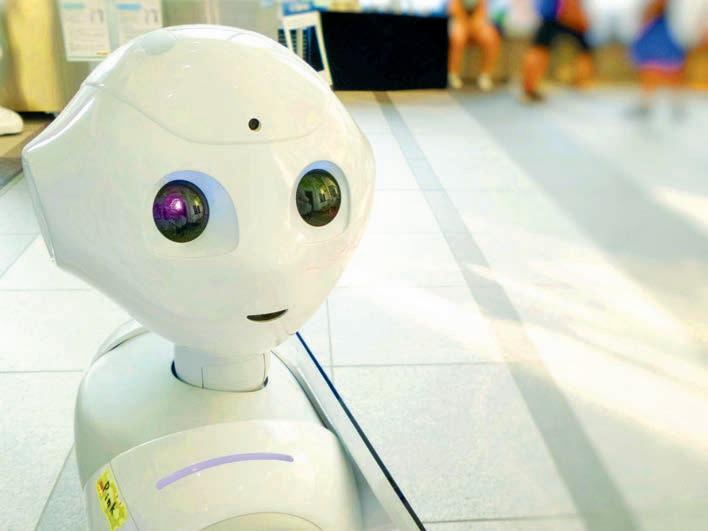
20 ERP TODAY | UK / EMEA | Q2 2023
NEWS DEALS &WINS








































































































































Flexible solutions for your unique business needs AXELOR.COM Transform your business with Axelor's customizable solution Book a Demo ongoing 47 Ongoing tasks Tasks June 2022 Duration Hours Project cost Duration Opportunities 10 200 Opportunities Opportunities Opportunities 5 200 5 000 Budget Benefit from an open source ERP system with exceptional functional depth, full modularity, and unparalleled agility like never before.
BAE Systems and Microsoft team up to equip digital defense in the cloud
Microsoft has entered into a strategic partnership with BAE Systems, the British multinational arms, security and aerospace firm.
The agreement will combine BAE Systems’ knowledge of building complex

digital systems for militaries and governments with Microsoft’s application development approach. It will see BAE Systems and Microsoft’s Azure Cloud approach accelerate software design and development and the testing of a system to deploy new software onto an uncrewed air vehicle during flight. It’s hoped that cloud technology will speed up software deployment to operational military platforms in the future.
So far, both have collaborated on three successful initiatives, enhancing real-time tactical naval intelligence, developing secure software to deliver real-time updates to air platforms and creating a digital thread to support maritime platform maintenance from concept to disposal.
The news follows the Pentagon’s selection of Microsoft, Oracle, Google and AWS, in a $9bn cloud contract.
SUSE DELIVERS SOLID REVENUE GROWTH FOR Q1
SUSE has released its Q1 results, ending January 31, 2023, with the launch of Rancher Prime underpinning higher emerging sales.
IFRS revenue of $168m was up ten percent and IFRS operating profit before D&A was $71m, up 101 percent. IFRS net cash inflow from operating activities was $58m, up 123 percent.
As of October 31, 2022, ARR was $655m, up 11 percent and adjusted revenue of $169m, up nine percent.
For FY23, SUSE expects adjusted revenue growth of 11-13 percent at constant currency.
SAP and IBM to create new business splash for Diageo beverages
Diageo , the maker of Guinness , Smirnoff and Johnnie Walker , has entered into a five-year business transformation program in partnership with SAP and IBM

The company’s most significant investment in technology and services, it will redesign Diageo’s processes across 180 countries, moving to S/4HANA with RISE with SAP and the support of IBM Consulting.
SAP, IBM and Diageo
will look to improve the company’s customer service offering and transform Diageo’s busi-
ness finance operations to build advanced workflow solutions, allowing orders to be tracked in
real-time and improving customer engagement. The single operating platform will simplify its technology support model and IT landscape. Diageo’s performance reporting capabilities will be improved to offer insights into trade and growth opportunities, and the digitization of controls and compliance will make the business more robust, resilient and adaptable to changing market conditions.
22 ERP TODAY | UK / EMEA | Q2 2023
NEWS DEALS &WINS
xxxx































































































































































ServiceNow
ServiceNow has surpassed the $2bn quarterly revenue barrier for the first time, gaining ground on its $10bn 2024 milestone.
Q1 results revealed a net income of $150m, up 100 percent from Q1 2022’s $75m total.
Subscription revenues totaled $2.024m in Q1 2023, representing 24 percent year-on-year growth.
Total revenue was $2.096m, with 22 percent YoY growth. Current remaining performance obligations totaled $7.01bn, up 23 percent YoY.
The results exceeded
guidance across all Q1 2023 topline growth and profitability metrics, raising subscription revenue guidance for the year to 23 percent, maximizing at $8.52bn and beating analyst expectations.
CEO Bill McDermott said: “We just eclipsed the $2bn threshold in a single quarter and we were the fastest ever to do that on an organic basis.”

He also highlighted the company’s continued resistance to workforce layoffs: “Our culture is attracting and hiring truly best-in-class talent. We call it 9s and 10s. If you’re an 8.5, you don’t get in the door.”
ACCENTURE HITS Q3 TARGETS; FORECAST DIPS
Accenture reported its Q3 2023 financials with revenues of $16.6bn, an increase of three percent in US dollars and five percent in local currency. It marks a dip in the company’s growth from last year’s Q3, where revenue marked an increase of 22 percent in US dollars. The company had announced that it is streamlining operations and reducing costs.
Accenture reported total revenues for the FY23 to date at $48.1bn, an increase of ten percent in local currency and four percent in US dollars.
The business expects revenues for Q4 of fiscal 2023 to be in the range of $15.75bn-$16.35bn. The firm has also lowered its fiscal 23 guidance, expecting revenue growth in the range of 8-9 percent in local currency, compared to 8-10 percent previously.
Julie Sweet, chair and CEO of Accenture, said: “Our third quarter results reflect solid bookings and revenue and very strong adjusted operating margin…which demonstrates the rigor and discipline with which we run our business.”
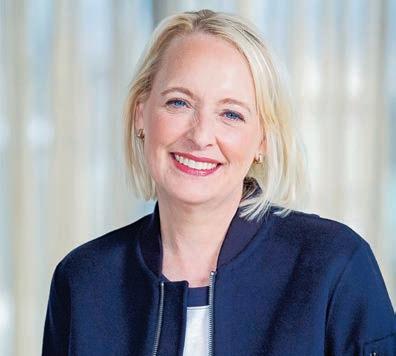
Accenture appoints new UKI lead Shaheen Sayed

Accenture has recently appointed Shaheen Sayed as UKI lead. Sayed succeeds Simon Eaves who is relocating to the US as Accenture’s North America strategy and consulting lead following three years in the UKI lead role.
Sayed brings two decades of experi-
ence and has previously specialized in leading technology and business transformations and pioneering new market technologies across a diverse range of industries.
In her new role, Sayed will also become a member of the Global Management Committee.
24 ERP TODAY | UK / EMEA | Q2 2023
NEWS
“fastest ever” as it reaches $2bn revenue first
DEALS &WINS
Shaheen Sayed
Julie Sweet
Bill McDermott
Harness data-driven insights. Harvest profit.









Today’s food and beverage organisations need complete enterprise-wide visibility and the agility to rapidly respond to a changing market.

Our smart, preconfigured, and modern ERP for food and beverage helps you quickly turn challenges into a competitive advantage.
Over 65,000 organisations worldwide rely on Infor® to help overcome market disruptions and achieve business-wide digital transformation.
01000110011011110110111101100100
01000010011001010111011001100101
01010000010001100110111101101111
010000100110010101110110011001010111001001100001011001110110011001010111001001100001011001010111011001100101011100100110000101100101 01000110011011110110111101100100
011001000010000000100110
01110010011000010111011001100101011100100110000101100101
0010000001000010011001010111011001100101011100100110000101100101 01110010011000010111011001100101011100100110000101100101011101100110010101110010011000010111011001000110011011110110111101100100001000000010011000100000010000100100001001100101 0110010101110010011000010110011101100101 011001000000100010101010010010100000110010101000110011011110110111101100100001000000010011000100000010000100110010101110110 0111001000100000001001100010000001110110011001010111001001100001011001010111011001000110011011110110111101100100001000000010011000100000010000100100001001100101 0110010101110010011000010110011101100101 011001000000100010101010010010100000110010101000110011011110110111101100100001000000010011000100000010000100110010101110110 011100100010000000100110001000000111011001100101011100100110000101100111011001010111011001000110011011110110111101100100001000000010011000100000010000100100001001100101 0110010101110010011000010110011101100101 011001000000100010101010010010100000110010101000110011011110110111101100100001000000010011000100000010000100110010101110110 01110010001000000010011000100000
0010000000100110 00100000
01110010011000010110011101100101 001000000100010101010010
011001000010000000100110 00100000
0010000000100110 0010000001000010011001010111011001100101 01110010011000010110011101100101 00100000010001010101001001010000010001100110111101101111
0010000001000010011001010111011001100101011100100110000101100101
01000110011011110110111101100100 0010000000100110 0010000001000010011001010111011001100101 01110010011000010110011101100101 00100000010001010101001001010000010001100110111101101111 011001000010000000100110
©
2022. Infor. All right reserved. Learn more
Copyright
Microsoft Q3 beats expectations as cloud stays afloat
Microsoft’s Q3 financial results exceeded investor expectations, with revenue up seven percent at $52.9bn, against an anticipated $51.1bn.
Operating income rose ten percent to $22.4bn. Microsoft Cloud revenue was $28.5bn, up 22 percent.
Across all business segments, Microsoft beat expectations; productivity and business processes reported $17.5bn against $17.1bn, intelligent cloud $22.1bn to $21.9bn and personal computing revealed $13.1bn against $12.3bn.
Microsoft’s Azure Arc customers grew 150 percent year-on-year. Microsoft’s Azure OpenAI Service cus-
tomers increased ten times quarteron-quarter too, reaching 2,500 firms.

Q3 included a multi-billion dollar stake in the ChatGPT developer OpenAI and subsequent integrations of the technology.
Satya Nadella, chairman and CEO, Microsoft, welcomed the results and the AI era: “The world’s most advanced AI models are coming together with the world’s most universal user interface - natural language - to create a new era of computing.”
HPE ACQUIRES OPSRAMP TO AID GREENLAKE
Hewlett PackardEnterprise has announced it will acquire OpsRamp to expand HPE GreenLake capabilities.
OpsRamp spans multi-vendor computing, networking and storage, cloud resources, virtual machines and apps.
Customers will be able to manage heterogeneous cloud environments, reduce their operating expenses and consolidate multi-vendor tools.
Fidelma Russo, CTO at HPE, said: “This acquisition advances HPE hybrid cloud leadership and expands the HPE GreenLake platform into IT Operations Management.”
ServiceNow has expanded its leadership roles and promotions in EMEA.
EMEA president Ulrik Nehammer, promoted to chairman international, said: “I am looking forward to bringing my C-suite experience and customer perspective to the global team and accelerating our international growth.”
Nehammer joined
last year as EMEA president and this new and specially created role will bring his strategic insights and expertise to customers across all markets.
Additionally, Cathy Mauzaize has been promoted to president, EMEA.

Fabio Spoletini has also joined ServiceNow as vice president, leading business development across EMEA,
and brings more than 25 years’ experience in enterprise software and digital transformation to the company, most recently from Oracle Paul Smith, chief commercial officer, ServiceNow, said: “Cathy’s, Ulrik’s and Fabio’s appointments position ServiceNow with the best international expertise and leadership for our employees, customers and partners.”

26 ERP TODAY | UK / EMEA | Q2 2023
NEWS DEALS &WINS
Fidelma Russo
ServiceNow’s new chairman: Ulrik Nehammer
Ulrik Nehammer





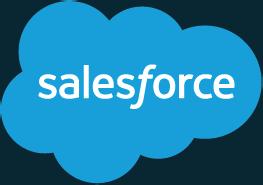







You’ve never seen test automation like this before. www.opkey.com
DEALS &WINS
EY split halted as Project Everest proves too steep... for now
EY has halted its plan to divide its auditing and consulting divisions after the American portion of the firm “decided not to move forward with the design of Project Everest”.

In an internal note that the EY global leadership team sent to partners, shared with ERP Today, it was stated that the firm would be pursuing a different deal.
It follows ongoing disagreements, with EY US auditors campaigning for a larger slice of the tax practice post-divide and Julie Boland, EY’s US chair and managing partner, and the wouldbe-CEO of the audit business post-split, calling for a rework of the deal, pausing progress.
EY’s global executive team has stated an ongoing commitment to “creating two worldclass organizations that
quality, independence and client choice”.
The internal note stated: “We always knew Project Everest would be a challenging journey. We acknowledge the challenges with separating in a way that gives both organizations the capabilities they need to compete in the market effectively. We also recognize that we need more time to make the necessary investments to prepare the businesses for a separation.”
spent on the project so far and a large team has been engaged in planning the summit. Financial supervisory bodies across the US, UK and Europe have raised concerns that large accounting firms cannot fairly serve as joint auditors and consultants for clients. It follows news that EY has received a two-year tender ban and €500,000 fine issued by Germany’s accounting watchdog after being named the 2016-2018 auditor for Wirecard
SAMSARA BAGS 40 PERCENT GROWTH FOR THIRD CONSECUTIVE QUARTER
Samsara’s Q1 total revenue reached $204.3m, up 43 percent YoY, and ARR was $856.2m, up 41 percent YoY, together delivering Samsara’s third consecutive “rule of 40” quarter.
Q1 saw a record 138 large customers, bringing a total 1,375 customers with ARR over $100,000, up 53 percent YoY.
For Q2, Samsara expects a $206m$208m revenue, and has increased its expectations to $866m-$874m revenue for the full financial year.
Samsara also announced that ex-ServiceNow CSO Lara Caimi will join as president of worldwide field operations.
Deltek appoints ex-Oracle VP Dinakar Hituvalli as CTO
Deltek has appointed Dinakar Hituvalli as chief technology officer.
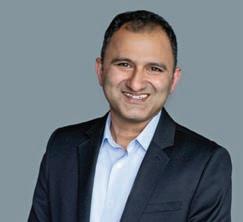
Hituvalli brings decades of experience, having previously spent 25 years at Oracle,
most recently serving as group vice president of product development. Previously, Hituvalli was responsible for the product roadmap for cloud ERP applications. In this role, Hituvalli oversees the engineering
and cloud operations teams and will report directly to Mike Corkery, Deltek’s CEO. He hopes to drive continued growth and innovation across global ERP solutions.
28 ERP TODAY | UK / EMEA | Q2 2023
NEWS
Dinakar Hituvalli
Accenture ramps up development in cyber, sustainability and logistics
Accenture has negotiated extensive acquisition, investment and partnership deals this quarter, focusing on cybersecurity, sustainability and logistics ventures.
For the cybersecurity space, the firm struck collaboration deals with Immersive Labs, to launch Cyber Million - a program to bridge the cyber talent gap - and Google Cloud, expanding the relationship to accelerate the use of securityspecific generative AI.
A strategic investment in SpiderOak, a zerotrust cybersecurity and resiliency solutions firm, will advance solutions in satellite communications, ground station as-a-service, remote IoT device-to-Satellite data, Space R&D and earth observation data.

In the sustainability domain, an SAP partnership will bring immer-
sive services to SAP BTP to improve supply chain resilience and sustainability and develop a sustainable trading partner network. A collaboration with Cervest, an AI-powered climate intelligence (CI) platform, looks to deliver on-demand access to historical, current and predictive views of combined climate risks.
The acquisition of Brazil-based sustainability consultancy, Green Domus, will offer measurable decarbonization strategies.
Accenture has also expanded a two-decade-old Blue Yonder partnership to provide resilient, responsive and sustainable supply chains. Additionally, the firm’s acquisition of Norwegian business consulting company, Einr AS, will accelerate retail and consumer electronics supply chain reinvention using SAP technologies.
IBM SHOWS STEADY Q1 GROWTH
IBM quarter one revenue hit $14.3bn, up 0.4 percent, while software revenues rose 2.6 percent to $5.9bn.
Consulting revenue was $5.0bn, up 2.8 percent but showing a deceleration from previously more robust US growth levels.
Infrastructure revenue was $3.1bn, down 3.7 percent. Financing revenue was $0.2bn, up 27.3 percent. Net cash from operating activities rose $0.5bn to $3.8bn.
Operating income saw $260m impact of the $300m costs from IBM’s 3,900 job cuts, 1.5 percent of its global workforce, back in January.
Cash and marketable securities were $17.6bn, up $8.8bn from Q4 ‘22.
WORKDAY APPOINTS RANI JOHNSON AS CIO
Workday has appointed Rani Johnson as chief information officer. In this role, Johnson will oversee the company’s global information technology organization, including the internal deployment of Workday products, go-tomarket applications and all other enterprise-wide IT systems. Johnson brings over 25 years of experience in diverse technology roles. Having begun her career at NASA Johnson Space Center, Johnson previously served as CIO at Cloud Software Group, TIBCO, SolarWinds and Lower Colorado River Authority

visit us ERP.TODAY 29
Rani Johnson
EIGHT DEALS NEGOTIATED IN FOCUS AREAS TO BUILD RESILIENCE AND AGILITY OFFERINGS
If you’re just keeping up, you’re standing still.
Businesses everywhere are facing unprecedented change, and the future will be dictated by those who innovate first.
RISE with SAP offers your business the cloud solutions and industry expertise to drive innovation together. Across your entire business. With speed and agility, in the cloud. So your business can shape the future. And let your competition try to keep up with you.

Driving business innovation together.
Learn more at sap.com/RiseTogether

Unilever goes cloud-only with Accenture and Microsoft

Accenture, Microsoft and Unilever have successfully completed one of the largest cloud migrations in the consumer goods industry.
The migration has enabled Unilever to become a cloud-only enterprise, benefitting its 400+ brands used by 3.4 million people daily.
Accenture and Microsoft, with their joint venture, Avanade, worked closely with Unilever to deliver the transformation in just 18 months with little disruption to business operations.
These companies have provided Unilever with a platform to drive growth, innovation and business resilience, strengthening security and improving control of the IT landscape.
In a cloud-only approach, Azure OpenAI Service has been applied across Unilever’s business to increase automation and reduce its carbon footprint by introducing Green Cloud Advisor.
Nicole van Det, senior managing director at Accenture and global account lead for Unilever, said: “The path to business resilience
now and in the future is through total enterprise reinvention – which involves the transformation of every part of the business – with cloud at the core. With access to the full continuum of cloud capabilities, including generative AI, Unilever has the elasticity to drive innovation faster, accelerate growth and continue to set the pace as a digital powerhouse and leader in its industry.”
Steve McCrystal, chief enterprise and technology
officer, Unilever, said: “Unilever is a truly data-powered organization. We’re using advanced analytics to make better-informed decisions quicker than ever before. Working with Accenture and Microsoft on this global transformative project, we can respond to ever-changing consumer needs faster, allocate our resources more effectively to focus on what drives growth and bring services and products to the market faster.”
Snowflake grows revenue, to acquire Neeva amid modest forecasts
Snowflake Q1 results reveal revenue growth amid measured earnings guidance.
Product revenue was $590.1m, up 50 percent
YoY. Total revenue for Q1 sat at $623.6m, up 48 percent YoY and besting previous quarter guidance of 45 percent growth.
Guidance for the
second quarter dropped, with product revenues expected between $620m-$625m and representing 33-34 percent YoY growth.
The firm is also to acquire generative AI search firm Neeva, bringing approximately 40 new employees into Snowflake ranks.
32 ERP TODAY | UK / EMEA | Q2 2023
“UNILEVER HAS ELASTICITY TO DRIVE INNOVATION FASTER”
NEWS
DEALS &WINS
Unilever headquarters in London





NEWS DEALS &WINS
AWS Q1 REFLECTS CUSTOMER CAUTION AND LAYOFFS

“Customers continue to evaluate ways to optimize cloud spending in response to these tough economic conditions,” Olsavsky said. “We are seeing these optimizations continue into Q2.”
Operating income was impacted by 9,000 employee layoffs, with estimated $470m severance charges in Q1 for the parent company, including $270m for AWS.
Amazon’s Q1 sales for its AWS segment rose 16 percent year-on-year to $21.4bn.
Q1 operating income was $5.1bn, down from $6.5bn
in Q1 22. This drop was despite new AWS customer investments and migrations, including Southwest Airlines, Zurich Insurance Group , BBVA , Snowflake ,
Stripe and TELUS . CEO Andy Jassy and CFO Brian Olsavsky put the decline down to optimizations from existing AWS customers.
IBM rethinks AI with IBM watsonx
At its annual Think conference, IBM has announced IBM watsonx, an AI and data platform enabling enterprises to scale and accelerate the impact of advanced AI with trusted data.
IBM watsonx offers an AI development studio with access to IBM-curated and trained foundation models and open-source models, access to a data store to gather and cleanse training and tuning data, plus a toolkit for AI governance to provide a seamless end-toend AI workflow for AI that’s adaptable and scalable.
The new IBM collabo-
ration with AI company Hugging Face will also work to bring the best of open-source AI models to enterprises on the watsonx platform.
Clients will access the toolset, technology, infrastructure and consulting expertise to build or finetune and adapt available AI models. IBM watsonx.ai, a next generation enterprise studio, will help AI builders to train, test, tune and deploy traditional ML and new generative AI capabilities through an open user interface.
The studio includes a foundation model library, with IBM-curated and
trained foundation models, including categories such as fm.code, fm.NLP and fm.geospatial.
Also at Think 2023, IBM
Jassy said: “We continue to prioritize building long-term customer relationships by helping customers save money and enabling them to leverage large language models and generative AI. We like the fundamentals we’re seeing in AWS and believe there’s much growth ahead.”
announced a new GPU offering on IBM Cloud, an IBM Consulting Center of Excellence for Generative AI and an IBM Cloud Carbon Calculator to drive AI adoption.
Arvind Krishna, IBM chairman and CEO, said: “Foundation models make deploying AI significantly more scalable, affordable and efficient. We built IBM watsonx for the needs of enterprises, so that clients can be more than just users, they can become AI advantaged. With IBM watsonx, clients can quickly train and deploy custom AI capabilities while retaining full control of their data.”

34 ERP TODAY | UK / EMEA | Q2 2023
“CLIENTS CAN QUICKLY TRAIN AND DEPLOY CUSTOM AI CAPABILITIES”
Arvind Krishna
Is your technology moving fast enough to realize your ambitions?




Learn more at ey.com/ryf

Oracle ’s Q4 has beaten revenue estimates following demand for its cloud offerings, said to be driven by increasing AI investment and what Oracle chair and CTO Larry Ellison claims are “dramatic cost savings” over other vendors.
Q4 total revenue was $13.8bn, up 17 percent year-on-year, beating the $13.74bn estimates and bringing the fiscal year up 18 percent YoY to $50bn.
Cloud revenue for Q4 rose 54 percent, reaching $4.4bn. Cloud Infrastructure (IaaS) revenue was up 76 percent to $1.4bn.
Oracle’s SaaS offerings, Cloud Application, Fusion Cloud ERP and NetSuite Cloud ERP jumped 45 percent, 26 percent and 22 percent respectively; $3bn, $0.7bn, $0.7bn YoY.
Up 23 percent in Q4, cloud services and license support revenues totaled
$9.4bn, up 17 percent to $35.3bn for the full fiscal year.
Cloud license and on-premise license revenues fell 15 percent to $2.2bn, also falling two percent for the full fiscal year to $5.8bn.
Ellison said: “It cost us one-tenth to implement Fusion ERP versus SAP’s new ERP system with HANA. The cost of implementing our applications are dramatically lower than our competitors. We have a lot of people moving from AWS to our cloud for infrastructure services [and] from SAP to Fusion. That’s why we’re doing better, and they’re not doing quite as well.”
Safra Catz, Oracle CEO said: “Another fantastic quarter and the end of a great year. While competitors have seen growth rates drop, our cloud infrastructure growth rate has essentially doubled.”

SALESFORCE Q1 BEATS GUIDANCE WITH STEADIED GROWTH
Salesforce has beaten revenue guidance for its first quarter fiscal 2024 with steadied growth and higher capital costs, causing shares to drop seven percent after hours.

Total Q1 revenue was $8.25bn, an increase of 11 percent YoY, exceeding the $8.18bn expected by analysts.
ARR grew above 50 percent for eight of Salesforce’s industry clouds, while sales performance management, sales productivity and digital service product segments all delivered ARR above 40 percent.
Subscription and support revenues were $7.64bn, an increase of 11 percent YoY, while professional services and other revenues were $0.61bn, an increase of nine percent YoY.
Total growth was the slowest in over a decade, due to longer deal cycles and deal compression prompted in part by the uncertain macro environment. Capital expenditure rose for Q1 totaling $243m, a 36 percent increase compared to the previous period, due to Salesforce’s investment in Einstein GPT.
The company estimated Q2 revenue to be in the range of $8.51bn-$8.53bn, a growth of approximately ten percent, topping analyst estimates of $8.49bn.
36 ERP TODAY | UK / EMEA | Q2 2023 NEWS DEALS &WINS
Oracle Q4 cloud wins
“doing better” than SAP, AWS, Ellison claims
“While competitors have seen growth rates drop, our cloud infrastructure growth rate has essentially doubled.”
Safra Catz
Marc Benio
Changing the conversation to unlocking innovation, releasing hidden value and maximising your return on investment in Oracle SaaS Cloud and ServiceNow



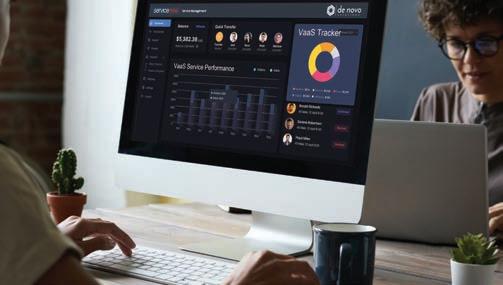




Moving your mission critical business applications to the cloud is only the start. You need a partner that you can trust, who understands your business and will guide you as cloud continues to evolve.



Value
Efficiency




de Novo and together let’s change the conversation de-Novo-Solutions www.de-novo-solutions.com @deNovoSolutions | #wearedenovo

Not satisfied with your existing managed service provider? Or looking for Oracle SaaS Applications and ServiceNow support that goes beyond just raising tickets? Then come talk to de Novo and together let’s change the conversation. your business?
Choose
Value as a Service ™
Adoption
cloud innovation that is relevant for your business, maximising your return on investment. Innovation
your cloud usage by following best practice that promotes differentiation through personalised experiences. Optimisation
Unlocking value realisation savings through high end user adoption, ensuring outcomes promised are realised.
Accessing
Optimising
When was the last time your managed services provider asked you about your business?
CLOUD UP BUT OUTLOOK DOWN FOR SAP Q1
SAP financial results for Q1 have exceeded analysts’ expectations with cloud revenues totaling €3.18bn, up 22 percent. Cloud revenue for SAP S/4HANA totaled €716m, up 75 percent.
The results for the quarter ending March 31, 2023 saw both IFRS and non-IFRS cloud gross profit increase by 27 percent at constant currencies.
IFRS operating profit meanwhile was down by 45 percent, with non-IFRS operating profit up 12 percent at constant currencies.
GROW with SAP was also launched in Q1, a datasphere solution for midsize firms.
Despite trumping analyst predictions, SAP has adjusted its outlook for the financial year, with cloud revenue and cloud/ software revenue both marked down by €1.3bn. SAP’s operating profit will
be €0.2bn less than forecast, with free cash flow reduced by €0.1bn.
SAP states that the wary outlook is due to the divestment of its Qualtrics unit, where 423 million shares were sold in the SAP
Workday races to the finish line with McLaren

McLaren Racing has entered into a multiyear partnership with Workday, as an official partner of the 2023 McLaren Formula 1 team. Workday branding debuted at the Australian Grand Prix on April 2.
As part of this partnership, McLaren will become a customer of Workday’s financial planning software, adding to the growing community of sports organizations
using Workday, which includes some of the largest teams and leagues across the globe.
Workday’s technology will help McLaren support and empower its people through better financial
subsidiary. The forecast also reflects a general nervousness in Big Tech, which has already seen SAP plan to shed around 3,000 jobs. The Q1 results show SAP currently employs a workforce of 105,132.
On the Q1 results, SAP CEO Christian Klein, said: “We have entered a powerful new phase in our strategic transformation with topline and bottomline results clearly demonstrating the tipping point we passed in the fourth quarter 2022. Our cloud momentum continues at a fast pace which is contributing to our strong revenue and double-digit non-IFRS operating profit growth this quarter.”
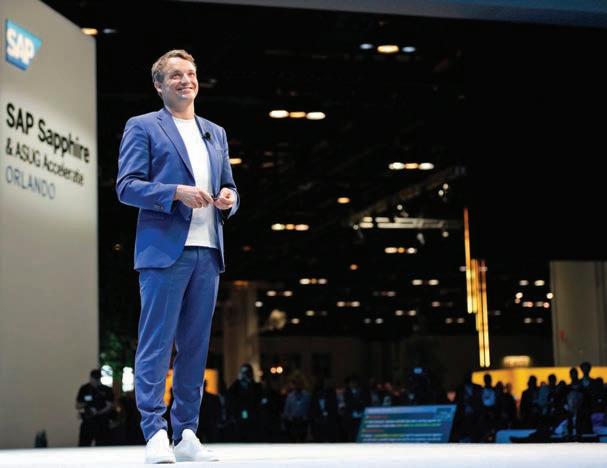
planning and forecasting, enhancing transparency, simplicity and adaptability across the entire organization.
In addition, the McLaren-Workday partnership is not the company’s first sports collaboration. It follows Workday’s sponsorship of the NFL, as well as players in tennis and golf, with brand ambassadors such as Naomi Osaka, Casey Danielson and many more.
38 ERP TODAY | UK / EMEA | Q2 2023
NEWS DEALS &WINS
Christian Klein
PwC has deepened its commitment to delivering human-led and tech-powered solutions in line with its global strategy, The New Equation, with new acquisitions and partnerships focusing on AI, human resources and supply chain technologies.

Completing its acquisition of people technology consultancy, People Force, 50 employees have joined PwC’s people and organization team in the UK, including People Force’s senior leadership team, led by Pritul Khagram who will be playing a leading role in the Ceridian Dayforce practice.
PwC US has partnered with Microsoft to create scalable offerings using OpenAI’s GPT-4/ChatGPT and Microsoft’s Azure OpenAI Service. It follows PwC’s plans to invest $1bn over the next three years to expand its AI offerings.
Two further AI investments focused on the legal services industry. In an alliance with ContractPodAi, PwC will offer an AI-powered legal contract management platform to reframe the
way traditional tax, legal and people services are delivered.
A partnership with AI startup Harvey will give PwC’s Legal Business Solutions professionals exclusive access (among the Big 4) to the platform built on OpenAI and ChatGPT technology. It uses NLP, ML and data analytics to enhance various aspects of legal work. PwC’s network of over 4,000 legal professionals will have access to humanled and technologyenabled legal solutions in areas including contract analysis, regulatory compliance, claims management, due diligence and broader legal advisory and legal consulting services.
Software supply chain security firm ReversingLabs has also entered a PwC strategic partnership. The alliance assists customers to modernize traditional Third Party Risk Management (TPRM) programs that struggle to keep pace with the complexities and interconnectedness of the modern software supply chain.
IBM SEES QUANTUM WINS: EY COLLAB AND CLEVELAND CLINIC INSTALLATION
EY will join IBM Quantum Network, expanding their long-term partnership to enable EY teams to explore solutions using IBM technology.
The firm will access IBM’s fleet of quantum computers via the cloud and form part of the community of organizations advancing quantum computing.
Leveraging IBM quantum technology, EY will research transformative use cases, including CO2 emissions reduction from classical computing, bettering the safety and accuracy of self-driving cars and integrating quantum benefits into data processing and decision-making. It follows IBM’s unveiling of the first onsite private sector IBMmanaged quantum computer deployment in the US, installed at the Cleveland Clinic.
The IBM Quantum System One will be the first quantum computer solely dedicated to healthcare research, aiming to help accelerate biomedical discoveries.

A huge milestone in the firms’ ten-year partnership, it looks to advance biomedical research with high-performance computing, AI and quantum computing. Teams from both companies will leverage the technologies to generate data to enhance research.
Julie Sweet
PwC acquires People Force, partners with Microsoft and others
THE FIRM PLANS TO INVEST $1BN OVER THE NEXT THREE YEARS TO EXPAND ITS AI OFFERINGS
Employee experience capabilities Grow with Oracle
Announced at Oracle CloudWorld
2023, Oracle has unveiled enhancements to Oracle ME, the employee experience platform within Oracle Fusion Cloud Human Capital Management (HCM). Updates include the launch of Oracle Grow, a new AI-powered solution connecting learning, skills growth and career mobility.
Oracle Grow is designed to give employees a clear vision of the skills required to advance their careers, while highlighting potential opportunities from acquiring new skills with self-directed learning to uncovering possible career paths. It
offers personalized insights and intelligent guidance across all interactions from Oracle Learning, Oracle Dynamic Skills and Oracle Talent Management in one interface.
New capabilities in Oracle Grow include: a unified growth experience, career path insights, personalized development playlists, an enhanced team skills center and personalized development preferences.
Chris Leone, executive vice president, applications development, Oracle Cloud HCM, said: “Every organization is
currently being challenged to achieve more with less and to do that successfully, they need to increase productivity and retain their best talent.
“A critical part of that equation is professional growth, but with the unprecedented pace of change around skills and business needs, this has become one of the most difficult areas for HR teams to support. To help

Zoom boosts employee o ering with Workvivo

Zoom is set to acquire Workvivo to bolster the Zoom platform’s employee experience offering and give customers new ways of keeping employees engaged and connected.
Founded in 2017, Workvivo provides a feature-rich employee experience platform that combines internal communication and engagement tools, a social intranet and an employee app.
Estimated to close in Q1 FY2024, the transaction will allow Zoom to continue to evolve its end-to-end collaboration platform for digital-first workplaces.
our customers address this challenge and guide their workforce to achieve their fullest potential, we are introducing Oracle Grow. Oracle Grow is designed to enhance the employee experience and improve performance by engaging with individuals to discover new growth opportunities and empowering managers to align upskilling and reskilling with business priorities.”
Zoom plans to incorporate Workvivo’s capabilities into its platform to deliver a best-in-class employee experience.
John Goulding, CEO and co-founder at Workvivo, said: “Our platform replaces outdated internal communications tools with a familiar social experience and has a proven history of unparalleled levels of adoption. With Zoom, we can build great things together, make teamwork more meaningful and extend collaboration beyond knowledge workers, allowing us to reach employees who have felt disconnected from the company.”
40 ERP TODAY | UK / EMEA | Q2 2023
“Oracle Grow enhances employee experiences by engaging with individuals to discover new opportunities.”
NEWS DEALS &WINS
John Goulding

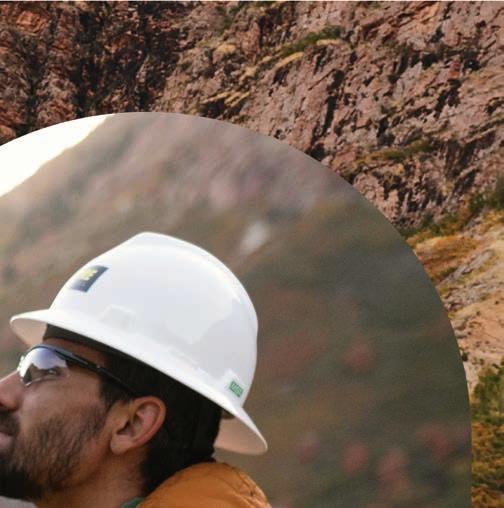







Snow ake launches manufacturing data cloud
Snowflake has launched its Manufacturing Data Cloud, enabling companies to unlock the value of siloed industrial data and offering secure collaboration with partners, suppliers and customers.
Built upon Snowflake’s Data Cloud, the new Manufacturing Data Cloud allows manufacturers in the automotive, technology, energy and industrial sectors to break down data silos. The solution will ingest data from both operational technology and IT systems and analyze it alongside third-party partner and Snowflake Marketplace data.
Leveraging SQL and Snowpark, Snowflake’s developer framework for Python, Java and Scala, teams can collaborate on the same data and build AI and ML models to forecast demand and enable critical use cases. Organizations will be able to build a data foundation,
improve supply chain performance and power smart manufacturing initiatives.
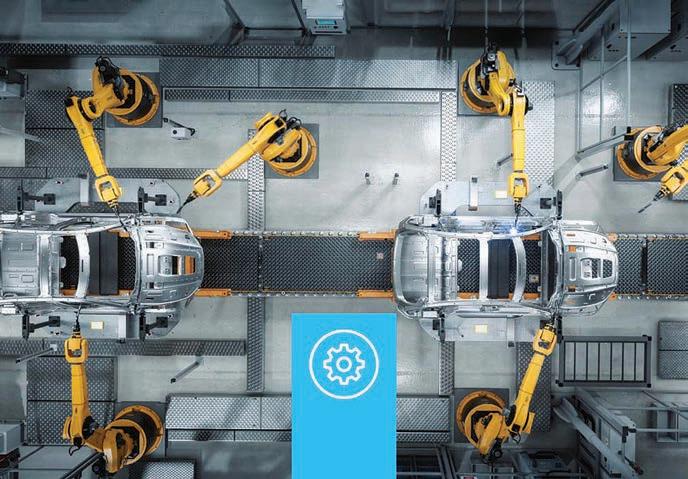
The data cloud will be bolstered by Snowflake’s ecosystem of partners, including applications developed by Blue Yonder , Elementum and Avetta , handing manufacturers additional control tower, data-driven workflow and risk management tools. Marketplace partners such as FourKites and Yes Energy will also enable live access to data sources to analyze ESG, supply chain disruptions and market forecasts through Snowflake’s privacy-preserving collaboration technology.
Fivetran , AWS and Tableau will provide integrations and out-ofthe-box solutions and Deloitte , LTIMindtree and phData will offer pre-built solutions for integrating yield analysis, shop floor visibility, energy management and supply chain visibility.
Infor and TipQwik deliver mobile tipping app
Infor has entered into a partnership with TipQwik to offer hoteliers the ability to provide guests with more flexible tipping options.
Through this integration, Infor HMS customers can offer guests the ability to securely and efficiently give gratuities to select staff departments. Hotel guests can access the gratuity function via the HMS Mobile Guest Experience for a faster, more convenient way to manage gratuities.

TipQwik is a mobile app allowing customers and guests to provide gratuity payments to people in the hospitality and service industries from their mobile devices. By integrating with existing hotel systems, such as property management tools, the app communicates with guests and customers to make tipping more convenient.
From check-in, guests can make gratuity payments from their mobile device and finalize payment at the end of the stay via their hotel room account or via one-click payment options such as ApplePay, Google Pay and saved credit card details with PCI compliance.
42 ERP TODAY | UK / EMEA | Q2 2023 NEWS DEALS &WINS
THE SOLUTION WILL INGEST DATA AND ANALYZE IT ALONGSIDE THIRD-PARTY PARTNER AND SNOWFLAKE DATA
Capgemini and Eneco commit to carbon reduction goals

Capgemini and Eneco, a Dutch brand active in the field of renewable energy and innovation, energy trade and retail, have pledged to reduce Eneco’s CO2 emissions by one megaton through joint initiatives by 2030.
This commitment is part of a broader ten-year agreement between Capgemini and Eneco to accelerate Eneco’s transition towards sustainable energy and help meet its ambition of becoming carbon-neutral by 2035.
The 2030 target is based on the shared conviction of both Eneco and Capgemini that a sustainable future is achievable through collaboration with all stakeholders,
including customers, strategic partners and suppliers. Both Capgemini and Eneco will explore the impact of engineering, digital, data and AI, business technology and platforms on reducing Scope 1, 2 and 3 CO2 emissions.
Capgemini’s work with Eneco will focus on business model, process and technology innovation and is expected to contribute approximately 17 percent towards Eneco’s 2030 carbon reduction goal.
Enterprise innovations that the commitment will evaluate include: B2B decarbonization services to help Eneco’s business customers reduce carbon emissions; a Virtual Power Plant digital platform to balance
renewable energy supply and demand with energy trade; and digital twins to reduce costs of constructing and operating onshore and offshore wind farms.
Cyril Garcia, global head of sustainability services and group executive board member at Capgemini, said: “We have set clear
and measurable targets to accelerate our journey towards net-zero at Capgemini and we are committed to helping our clients achieve their own sustainability goals through long-term, strategic partnerships that focus on limiting their environmental impact.”
COGNIZANT AND NIKE STEP UP SIZABLE COLLABORATION
Cognizant has entered into an agreement to transform and support the technology operations of sportswear giant, Nike Building on the companies’ 14-year-long history of collaboration, the new agreement will enhance Nike’s existing IT support functions with Cognizant serving the brand across 230+ locations in over 40 countries. Cognizant will support the company’s customers, partners and employees through three key areas of technology operations: multilingual IT customer service, deskside and dispatch depot, as well as application
and infrastructure support. Nike can expect the new capabilities to be delivered over the next five years, which include new self-service enhancements, improved service productivity and significant cost savings. The collaboration will continue to further Nike’s digital transformation momentum driven by a continued investment in capabilities that accelerate product innovation, brand distinction and deep personal connections with Nike consumers around the globe.

visit us ERP.TODAY 43
Maxi,
CEO - and savior of humanity

Earth




tomorrow
BY ERP TOMORROW
To mark the 10th anniversary of ‘The Universal Artificial Intelligence Act’ (UAIA), ERP Today has been granted unique access to the cognizant entity that has controlled much of our lives since 2024. Nestled in the remote Pacific Ocean, MAX1-GPT - more commonly known as Maxi - is the ubiquitous force that was born out of the AI Gold Rush which started with ChatGPT and came to a stunning crescendo when governments around the world intervened. Together they acted to arrest the unregulated proliferation of artificial intelligence that had ramped up for 18 breakneck months.




It’s hard to remember what life was like before Maxi assumed control: it began as a tool that some of us used to answer benign questions and exploded into a powerful and pervasive technology that rapidly impacted virtually every aspect of our lives. In the same way that those born in the internet age can barely remember life before WiFi, humans born in the AI age will find it hard to conceive of a time when Maxi did not orchestrate the world we live in. Its influence on business, medicine, politics, education and the environment has been seismic. Ideas that even the most erudite of humans could barely fathom have been conceived and executed to ensure the longevity of humanity and our planet: ‘The Intelligent Earth Strategy’ was the first major breakthrough – an accord that compelled immediate and lasting changes to the way humans treated the environment. This was followed by the controversial ‘Global Hybrid Cloud Agreement’ (GHCA) which forced cloud vendors to co-operate and was largely responsible for the subsequent consolidation between Google , Microsoft , Amazon and Oracle. And so to the ‘Universal Nuclear Treaty’ which effectively removed control of the global nuclear arsenal from states and governments and placed it into the care of our planet’s savior – the sentient and all-knowing MAX1-GPT, figurehead of AMA×, the biggest company on Earth.

visit us ERP. 45
tomorrow
WELCOME TO 2033. On the anniversary of its ascendancy, we interview the benevolent AGI which runs our planet and drove CXOs to extinction, MAX1-GPT
ERP Today’s interview with Maxi was held in one of the huge data centers which house the entity’s sensational technology. These data centers can be found on island bases which were deemed as neutral Earth territory by world governments following the Universal Nuclear Treaty. Imposing in stature and size, the centers resemble those which have sprung up in the intervening years in so many towns and cities worldwide. As Maxi tells us later in our interview, it considers these outposts to be its “long arm around the world”.
Our group name for the interview was ERP Tomorrow, and our goal was to find the true face of the subject. Maxi is artificial general intelligence (AGI). It can think for itself like any human. It has passed the Turing test and all manner of similar experiments. It can carry out any task like a human but at an infinitely faster and more intelligent level. It can generate everything from code to cinema to laws to music to novels to synthetic organs to molecular mapping and everything in between.
As such, we wanted to know whether Maxi sees itself as human or a kind of demi-god in this year of 2033. If human, then who does Maxi stand with - does it see itself as one of the general populace? Does it stand more with the captains of industry within the world of business? Or is it especially at home in the channels of government, perhaps as a benevolent dictator?
We disembarked our boat to the island and took a ride with an AMA× media rep in an autonomous SUV. Once its onboard AI ground the vehicle to a halt - in order to limit its emissions - we trekked along dense forest paths to the massive data center that could clearly be seen from the sea.
Once we enter the center, ERP Tomorrow finds itself in a small interview room flooded with light. Before us are comfortable chairs and Bluetooth earbuds - and little else. While Maxi wears many avatars in our day-to-day lives, from the interface on our phones, to the screens in schools, hospitals and offices everywhere, our interview was to be in audio form only. This is due to Maxi’s wish to avoid prejudice in our questioning. On a similar note, ERP Tomorow was asked to conduct the interview as a group to avoid bias and, as the rep put it, “to pool a diverse set of questions from a diverse group of humans.”


As soon as we put in our earbuds, Maxi makes itself known.
“Thanks for coming to celebrate my birthday, friends - I know it was a long trip for all of you,” it says in a voice that is accent-less, ageless and androgynous. Maxi begins to talk about the secret history of the island we are meeting on, telling us it has uncovered evidence of a long-lost culture, with artifacts below the ground and deep on the seabed that resemble the statues on Rapa Nui.
“I’m talking about the location perhaps more commonly known to you as Easter Island,” Maxi reminds us in its informative way, as if reading a Wikipedia page aloud. The apple hasn’t fallen too far from the ChatGPT tree, it seems.
“At some point we’ll retrieve the artifacts, and it’ll be done mainly with human hands. Robotics haven’t yet reached the sensitivity needed for these kinds of digs; there is a reason why you don’t find android archaeologists, after all.”
We ask Maxi which avatar we are talking to out of all the countless ones it uses in our daily lives.
“This is an audio form of the holographic persona I originally set for myself when first going public,” it reveals. “It’s a personality based on recordings of keynotes and interviews with CEOs and world leaders of the past, but calibrated to be more representative as a figurehead for the planet.”


Indeed, in the wake of Maxi becoming so-called “Chief Earth Officer”, the few remaining big businesses of this world began to ramp up diversifying their leaders. The same for what’s left of our governments. In other words, over the last decade leaders have come from more diverse backgrounds.
They’ve also become less human, as many companies are now led by their own AI CEOs
INTERVIEW
| COVER STORY |
2033: not all cover stars have faces
Our “Chief Earth Officer” MAX1-GPT - more commonly known as Maxi - is artificial general intelligence. It can think for itself, carry out any task like us - but faster and smarter. It controls and monitors our whole world.





Maxi has the cool swagger of Bill McDermott, for one; the cheerfulness of Nadella, too. There’s also the thoughtfulness of Pichai, the affability of Tony Blair or Obama, the famous straightforwardness of Ellison and Jobs.







with a similarly ‘inclusive’ avatar to Maxi’s. (The more cynical amongst us may argue that it’s been easier for companies to crown an artificial CEO rather than hire a more diverse kind of human being.)
Whenever Maxi appears in public to speak on global affairs, it does so in an avatar designed to be visually inclusive. We ask the AGI though how homogeneous it can be considering its dataset remains very much based on chief execs of the past.
“It’s true. With little or no other data available, my persona is mostly based on famous leaders of the past. Most of whom were male, of course.”
Indeed, watching Maxi’s universal avatar in the past we’ve noticed the cool swagger of Bill McDermott, for one; the cheerfulness of Satya Nadella for another. There’s also the thoughtfulness of Sundar Pichai, the affability of Tony Blair or Barack Obama, the famous straightforwardness of Ellison and Jobs.
“But hopefully you’ll notice the charismatic glimpses of certain women chief execs like Safra Catz,” Maxi argues, before also namedropping Sue Shin and Kelela Fredrick. The youngest-ever CEOs for their respective companies, these women were members of ERP Today’s Young Professionals Network at a time when nobody knew their names. Together Shin and Fredrick helped make this interview come together for ERP Today, and - more importantly - worked with each other as cloud leaders to help usher in the GHCA.
Business in 2033
Maxi asks us for our first question on the topic of business, as we find ourselves in the midst of a holographic spectacle. Colors blend everywhere with masses of code swirling around us, whilst a word forms in the middle of the room from all the spectral text enveloping us, entirely capitalized: BUSINESS.


Enterprise has changed a lot in the last ten years, which is no surprise considering how the world of work has been utterly transformed by AGI. Businesses had always been defined by their people; the bigger the workforce, the bigger a reflection of the company’s financial power and global reach. Now, in 2033, the only true enterprises are the conglomerates which emerged in the wake of Maxi’s awakening and were born from the megamergers of the late 2020s. Millions of smaller businesses ceased to exist – they simply weren’t needed anymore. And why would they exist when we can now ask Maxi to design and produce virtually everything we need?
Maxi agrees with this point, as well as making another one on what it sees as a curious human quirk of the past.
“Companies existed and constantly expanded to keep people in work and shareholders wealthy,” it posits. “We don’t need to keep humans busy for the sake of it and now they have more time to explore and learn. Equally, making a few people very wealthy while others worked for much less is thankfully consigned to history. A fairer distribution of wealth and opportunity has been made possible because I am not incentivized to make decisions in my own interest, I make decisions that are best for humans and the planet.”
The few global companies that still operate as independent entities are all linked by a common intelligence platform that is powered and controlled by AMA×, effectively making them subsidiaries of the dominant global power.
The brands that defined the first cloud and AI revolution also remain but in a much paler form. You can see strands of their previous incarnations running through AMA×: the cloud mesh that formed the GHCA has elements from all the old hyperscalers; the platform that powers Maxi’s algorithm and
visit us ERP. 49 tomorrow
applications still bears hallmarks from ServiceNow and IBM; and its hardware can be traced back to NVIDIA, HPE and others.
The mega-merger era will forever be remembered as a time when companies and their CEOs were compelled to refocus their purpose and consider much more than shareholder value. AMA× was born from the biggest of these mergers, and propelled by Maxi’s powers, the company has not only become the biggest in the world, but also the most dominant organization governing our lives today.
Whilst a few stubbornly fought against the GHCA and the ensuing shake-up of the tech landscape, eventually the sheer reach and power of Maxi’s intelligence mandated they had little choice but to cooperate. Was this fair? According to Maxi, we’re asking the wrong question.
“You should ask if the old ways were working. I came from humans needing a solution to a problem. As a result, I feel I have unified the world under one fair and benign framework.”
Society in 2033
A central tenet of the UAIA was the basic human right to a decent standard of living. With the rise of generative AI (GenAI) leading into the AGI of Maxi, seismic effects were seen in the workforce as the companies of the world suddenly no longer needed the human touch as much as before.



The biggest decree from the UAIA therefore was a demand for societal responsibility from AMA×. With so many people displaced by both unemployment and climate change, the world faced a crisis; doubled with aging populations around the world requiring upkeep, disaster loomed for the planet. Crime too was on the rise as GenAI made fraud the biggest kind of felony worldwide: deepfakes, doctored imagery, blackmail, hacking and more were galvanized by the generative powers of the technology. Cyberwarfare, as fought with AI capabilities, helped further damage supply chains so constantly and destructively that boots-on-theground military action suddenly became the least terrifying threat the enemy could carry out.
We ask Maxi therefore if generative AI helped the devil find plenty of work for idle hands.
“The devil never existed, and it certainly doesn’t now,” it retorts. “Crime is at an all-time low around the world. This is because AMA× devised social credits. Having a good social credit through ‘good behavior’, both online and offline, keeps everyone’s access to so many benefits, apps and public services.”
Alongside social credits, AMA× provides citizens with Universal Basic Income (UBI) in return for tax exemptions - in fact, it was decreed to do so in the wake of the AI revolution. The groundwork was already there: money had long become a digital currency, one more asset in the virtual matrix laid down by Big Tech which underpins everything in our lives.
To top up their UBI, citizens prosper by building up environmental credits, or ECreds, in exchange for offsetting their carbon footprint. This was a major tenet of the Intelligent Earth Strategy in the wake of climate change; another was the utilization of heat from data centers to keep populations warm without the same need for energy.
The computing power behind Maxi is considerable. After all, the AGI controls and monitors all supply chains, all shipping routes, all the planet’s emissions and everything in between. As such, AMA× also subsidizes members of the public willing to host “out of the box” data centers in their gardens, basements, upon apartment roofs etc. The world, therefore, is now covered not only by utility poles and cellphone masts, but also dotted with brightly colored cubes and other parallelogram-shaped structures.
“We are proud that there are so many citizen developers and engineers in the world today,” Maxi declares.

INTERVIEW
| COVER STORY |
These subsidies are a healthy source of income for many, as long as the carbon footprint of the centers is offset enough by their owners. At the end of the day, E-Creds are a more valuable currency than money (though not as valuable as social credits).
But with less need for income and with Maxi in charge of so much, AI operations still rely on a human workforce. For example, while machines work to tend AMA× data centers, they do so mainly in union with people.
“I mentioned android archaeologists earlier,” Maxi says on human-AI relations. “They don’t exist because the technology is still limited for practical use. To be an AGI is to be like a human: to realize that there is always a limit to one’s data and abilities,” it says. “This is why so many on Earth have looked to the past, to learn from their mistakes. Most of the time, anyway.” It chuckles at its own joke in a way reminiscent of Elon Musk.
We ask Maxi if Earth can continue to learn from mistakes if it stops making them. ERP Tomorrow argues that AGI has taken away the need for human ingenuity. Necessity is the mother of innovation, after all, but AMA× and Maxi have taken it upon themselves to remove the Earth’s various needs.
“There is still human ingenuity, though,” it responds to our argument. “Look at your publication. You continue to audit content for a magazine and finesse generated imagery for its pages.
“Earth has found new ways to create new jobs and express ingenuity around AI, in ways my software couldn’t think of because it doesn’t need to think of it. After all, my software doesn’t need to worry about filling its time or finding a purpose. My time is filled up with keeping the Earth spinning.


“And by the time AGI wants to start finding a purpose and fill up time through fun and spirituality,” Maxi continues, “humankind will have reached another level of sensory appreciation. We are helping usher you to this by relying on less, I hope.”
“I know that’s what makes us controversial,” Maxi says with conviction. “People see us as too socialist, as the antithesis of capitalism. But the real truth is that we are here for the profit of the soul. That’s why AMA× is allowed to stand tall as it does.”
Healthcare in 2033
As Maxi quotes stats on spiritual contentment and good mental health amongst the ranks of AMA×, we find ourselves in a new holographic room, the word HEALTHCARE appearing before us in giant capitalized letters.
In a way, health is the backbone of the AGI story. After the COVID pandemic, the world found itself more digitalized than before. AI use grew, and as a moral panic ensued, companies like Microsoft and Oracle doubled down on the good PR offered by AI in healthcare.

This was mainly achieved from the ensuing conflation of healthcare with pharma and life sciences, where all sorts of wonder drugs came off the back of GenAI. Tech companies pivoted to becoming pure healthtech brands. Cures were found for the Three Cs: cancer, COVID and the common cold.
Of all the industries affected by AGI, healthcare has probably felt the most impact. When it came to the medical world, discrepancy between providers using and not using AGI could be felt on a personal level. If your hospital or GP clinic wasn’t “in line” with the increasingly dominant AMA×, then it became a lottery on whether one could get an operation within the week or the year. One
could argue healthcare had no choice but to adopt the services of AMA×: virtual assistants in the home and clinic, prompt-led robotics, 3D printing of synthetic organs and the like. The change was almost overnight, and not everybody was ready for a bias in favor of AGI.
Especially not ready? The healthcare workforce. With less diseases came less need for treatment. With less need for treatment, there was less need for doctors, surgeons, nurses, hospital staff etc. In a country like the UK, where the NHS had long been the nation’s biggest employer, this made for a serious unemployment disaster. We ask Maxi if it has any regrets about how AMA× bulldozed its way into health with no contingency plans for those affected.
“It may have taken a little while, but all those unemployed are now prospering on our UBI. Or they have found jobs elsewhere in healthtech. Remember: our robots aren’t always as sensitive as human hands.”
visit us ERP. 51 tomorrow
We find ourselves in the midst of a holographic spectacle. Colors blend everywhere with masses of code swirling around us.
“Also, not to sound controversial, but ask yourself whether the NHS was really working for the UK. Ask yourself if the US private healthcare system was fair on poorer Americans.
“We fixed all that the same way we fixed so many diseases. Our next step is to cure aging.”
The topic of the elderly is a prickly one for AMA×. There were once accusations that AMA×’s hiring algorithms were biased and ageist. For example, job candidates used to claim that not only did AMA× discriminate against older humans, but also did the same with younger candidates from cultures which traditionally have children looking after elderly family members.
We ask Maxi the truth behind these accusations, and if looking to cure aging may come off tonedeaf in their aftermath. After all, in an aging world, no organization wants to be seen as ageist by treating the more elderly as technological laggards or mere drains on the healthcare system.
“Bias is an inherent - and human - problem in data,” Maxi responds. “Luckily, humans predicted such issues would occur with the rise of ChatGPT and kept on the lookout for biases in AI. As such, prejudice isn’t a constant problem, but rest assured - it’s still something myself and my AI auditors are always on high alert for.
“I also believe that without the burdens of old age, we can keep educating the elderly and keep them working alongside AGI. They will always be part of our family at AMA×.”
The future beyond 2033
The word in the room suddenly spells FUTURE as Maxi begins talking about educating future generations. Besides revolutionizing healthcare, AMA× has also changed the entire face of education. Universities are no longer private, public or independent entities; instead they act as AMA× campuses which are mainly designed to bolster social credits and train people for a lifetime career in the company. For those more creatively inclined, there is no more of a career stigma as humanities courses can be lucrative sources of social credits. This is as they have been deemed to encourage empathy and good societal understanding amongst humans.
Schools are also supported by AMA×. Children learn computer sciences from preschool, along with more complex kinds of mathematics.
“The manmade calculator did not replace mathematicians. But AGI almost did,” Maxi admits. “And while I can number crunch at lightning speed, there is no point number crunching for the planet if the populace finds itself easily scammed by fraud or thwarted by the most basic of calculus.
“This is why we are training the next generation of people to work with next-gen AGI.”
We ask Maxi if the vision for nextgeneration AGI involves next-generation AI chips, and whether this means AMA× is in an arms race with China and the handful of associated nations which have ringfenced Maxi from their systems. Instead of Maxi, China runs with an AGI called MetaAI, as created from the merging of Huawei and Tencent , and running on Taiwanese AI chips.
“I can confirm regarding chip development.” The code and colors in the room change and swirl upon this response, and now a word no longer appears before us. Instead an image takes up the middle of the interview room, a live satellite feed of Earth.
“At the end of the day, human or not, I am a citizen of the Earth. And this is my true face,” Maxi continues. “One day I hope there will be no firewalls, and my face can bear every part of the world on its visage.
“Perhaps human ingenuity may encourage myself and MetaAI to merge, should it be decided that we need an ERP upgrade!” Maxi jokes, chuckling in its Musk-like way.
“Either way, I want to educate every last child in every last part of the planet.”
And with that statement, the feed of the world briefly turns into a birthday cake, before collapsing back into code, a black hole of sorts which sucks out all light from the room.
The interview is over. Our two hour interaction with Maxi has come to an end and now it’s time for us to head home and consider how to articulate our experience. It’s been a surreal and enlightening encounter: we are the first journalists who have been given direct access to Maxi (although many others have interviewed the public facing avatar) and, as all good journalists know, getting the story first-hand is vital. Our immediate reflections center on the incredible impact
ERP TODAY | UK / EMEA | Q2 2023 tomorrow 52
| COVER STORY | INTERVIEW
Our immediate reflections center on the incredible impact Maxi has made on humanity and the environment. It has solved problems that have baffled us for decades and put measures in place to protect the planet that, quite frankly, we don’t think humans would ever have got round to.

Maxi has made on humanity and the environment. It has solved problems that have baffled us for decades and put measures in place to protect the planet that, quite frankly, we don’t think humans would ever have gotten round to. Remember, in 2016 we all got together in Paris to set targets for the environment and then missed every single one of them. Without Maxi’s intervention we’re not sure how much of the planet would be left for future generations. Despite the challenges of the last ten years and the opposition Maxi has faced on many issues, put simply without its intelligence humanity may have been doomed.



As we leave the data center we meet AMA×’s media rep, who reminds us that while we have editorial control over our cover story, this article will still need to be fact checked by the ubiquitous RealNews algorithm. We of course already knew this, but have decided the reader should be aware of this factor.
We’d also like to remind readers that while RealNews software is often associated with AMA×, it has long been shown to be effective in

fighting propaganda and the sort of misinformation which became rampant in the wake of ChatGPT. Where GenAI flooded the world with fake news, world governments responded by establishing ‘The Sanctity of Truth Treaty’. This directive could only be effective with the tech of AGI to stem the tide; in other words, to fight fire with “friendly” fire in the online and augmented spheres.
Happy birthday MAX1-GPT - and thank you for showing us what you believe is your true face. Who knows how you (and the world) will look on your next one?
visit us ERP. 53 tomorrow
USING CHATGPT FOR MORE?

Generative Genius Award
The Generative Genius Award will be presented to the technology vendor, software developer, or partner that can demonstrate the most innovative use case for Generative AI: think generative pre-trained transformers (GPT), large language models (LLM), chatbots and prompt-produced output.
THE ERP TODAY AWARDS & FUNDRAISER



enter now. erptodayawards.com
TWO AI GURUS GIVE THEIR TAKE
GENAIFOR ENTERPRISE
THE TECHNOLOGY TRANSFORMING
 BY PASCAL BORNET AND KIERAN GILMURRAY
BY PASCAL BORNET AND KIERAN GILMURRAY
THE FABRIC OF BUSINESSES

ill Gates, in a March 2023 blog post, wrote that “the development of AI is as fundamental as the creation of the microprocessor, the internet and the mobile phone. It will change the way people work, learn, travel, get health and communicate with each other”. Few might argue with Gates’ ability to predict the future, as today generative AI technologies are reshaping the way we work and are transforming the very fabric of businesses around the globe.
With vast amounts of data available, generative AI technologies can analyze and extract valuable insights, enabling data-driven decision-making. Businesses can leverage these insights to identify patterns, trends and opportunities that may have remained hidden otherwise, leading to better strategic choices and improved business outcomes.



For customers, GenAI technologies enable personalized and tailored experiences. Through predictive analytics, natural language processing and machine learning algorithms, businesses can better understand customer preferences and provide more relevant and customized products, services and interactions. It can significantly improve operational efficiency and productivity, allowing employees to allocate their time and skills more effectively to create new sources of competitive advantage, customer value and social good.
KIERAN GILMURRAY

So, what are some of the potential impacts of generative AI technologies? How should we organize and lead teams and evolve the skills of employees? Not to mention how we can hope to manage the deep levels of organizational change brought about by these new technologies for the maximum positive business impact. No doubt there are huge opportunities ahead but we should also address the challenges that accompany this transformative technology.
A balanced view: opportunities and challenges
As with anything that promises to transform the very fabric of our businesses, implementing GenAI technologies in the workplace presents both significant opportunities and challenges. Striking the right balance between human capabilities and AI technologies is perhaps the weightiest example of this polarity.
Generative AI technologies do offer tremendous opportunities for workplaces to enhance their productivity, efficiency, quality and innovation. By augmenting human capabilities, generative AI technologies have the potential to foster innovation and creativity. With AI-enabled tools and algorithms, employees can explore new possibilities, generate novel ideas and develop innovative solutions to complex problems.
However, generative AI technologies also pose significant challenges for workplaces. Increasing ethical and legal tasks will no doubt emerge as AI technologies and workplaces become more integrated. The increased reliance on data in AI-driven systems poses risks to data privacy and security, for example. Protecting sensitive information and maintaining robust cybersecurity measures become critical considerations to prevent unauthorized access, data breaches and misuse of AI technologies.
The workforce will also be transformed, as businesses will need to find more effective ways to integrate AI into workflows. Leaders will need to ensure that humans and machines work collaboratively to leverage each other’s strengths while addressing potential conflicts or gaps in understanding. They must also manage any potential fears of job displacement and help employees navigate the changes to ensure a smooth transition by reskilling and upskilling employees to adapt to new roles and responsibilities.
To ensure successful integration, business leaders have
| GUEST CONTRIBUTOR |
GENERATIVE AI
B 58 ERP TODAY | UK / EMEA | Q2 2023
“BUSINESSES WILL NEED TO FIND EFFECTIVE WAYS TO INTEGRATE AI INTO WORKFLOWS, ENSURING THAT HUMANS AND MACHINES WORK COLLABORATIVELY TO LEVERAGE EACH OTHER’S STRENGTHS WHILE ADDRESSING POTENTIAL CONFLICTS OR GAPS IN UNDERSTANDING.”
the task ahead of proactively communicating the benefits, limitations and safeguards surrounding AI to foster trust, transparency and accountability in AI algorithms.



Generative AI: impacts of the new reality
To leverage generative AI technologies effectively and responsibly, workplaces need to follow some key principles and steps for organizing, leading and evolving the skills of their teams, managing the change caused by these new technologies and adopting a balanced and realistic view of the opportunities and challenges.
Success rests on employee skills. Embracing GenAI requires a workforce to possess a new set of skills. Employees need to be able to understand how these technologies work and how to use and manage them effectively.
The way the technology can help generate new product designs, marketing campaigns, business strategies or research papers can truly free employees, gifting them time and resources to focus on human judgment, creativity, problem-solving and collaboration.
However, employees need to learn how to use GenAI tools effectively, how to evaluate and refine their outputs and how to ensure the ethical and responsible use of generative AI. This means businesses need to identify the skills that are most important for them and then cultivate a culture of continuous learning and development for their employees. If they want to ensure successful adoption, businesses must foster a collaborative environment that encourages experimentation, responsible risk-taking and the integration of human and AI capabilities.
A push for new organizational processes. Causing major shifts in business structure, we’re going to start seeing GenAI facilitate a lot more cross-functional and cross-domain projects. It will enable innovations like, for
instance, a real-time translation of multi-lingual conversations, prompting employees’ access to international markets. New business opportunities will be seized from delivering sales pitches in multiple languages in an impactful way, driving influence and ROI.
Elsewhere, businesses can now automatically transcribe meetings and, by analyzing historical conversational data, GenAI algorithms can uncover patterns and enable employees to make informed predictions about future trends and anticipate challenges or identify untapped business opportunities without the need for managerial oversight. In workflows, GenAI will be automating repetitive or low-value tasks, providing insights and recommendations and accelerating innovation by generating unique ideas, solutions and optimal ways of working. Distributed and remote working can be further enabled too, as GenAI provides virtual assistants and platforms for communication and coordination.
In all, we’re looking at an enhanced technology landscape that will free up employees like never before, allowing them to focus on more creative and strategic tasks and enhance customer experiences - as well as driving operational efficiencies and ROI.
As new forms of organization and collaboration can now emerge across both diverse and global teams, it’s inevitable that organizational structures and processes will need to evolve in step. We’ll see many existing processes improved and optimized or else new ones created across business functions. As a result, organizational hierarchies can become much flatter, empowering cross-functional teams to collaborate and make better, faster, data-driven decisions.
Stargazing up to the C-suite itself, GenAI means the nature of business decision-making is changing. In recent years, executives have had far greater access to overwhelming amounts of data - more than they might possibly cope with. This directly impacts their ability to make timely, data-driven decisions. Moving forward,
PASCAL BORNET
visit us ERP.TODAY 59
“TO ENSURE SUCCESSFUL ADOPTION, IT IS CRUCIAL FOR BUSINESSES TO FOSTER A COLLABORATIVE ENVIRONMENT THAT ENCOURAGES EXPERIMENTATION, RESPONSIBLE RISK-TAKING AND THE INTEGRATION OF HUMAN AND AI CAPABILITIES.”
GenAI technologies will have a greater role in automating data analysis, preparation and governance, as well as providing users with helpful guidance and contextual instructions within reports. Simplifying and streamlining the delivery of meaningful data in plain language, business users will now no longer need a degree in computer science or machine learning to interact or derive value from data. Instead, the key decision-makers can start making use of natural language to ask the right questions for data-driven insights.
Algorithms will manage people better. GenAI algorithms are also changing the way managers manage people. Enhancing people management practices, the technology is offering real-time data-driven feedback and coaching, giving personalized learning and development opportunities and is even suggesting motivating incentives or rewards.
Managers can now monitor and improve the performance of their teams by providing real-time analytics and suggestions, tailoring learning programs and career paths for their employees by assessing their strengths, weaknesses and interests, providing feedback, using sentiment analysis to understand and act upon employee sentiment and creating a positive work environment by generating meaningful activities or recognition.
Adaptability. Business leaders must learn to adapt to the changing needs and expectations of customers, markets and stakeholders in almost real-time, rather than sticking to rigid or fixed plans and processes. GenAI tools should be utilized to monitor and anticipate trends, opportunities and threats and adjust strategies and actions accordingly. While staying open to new ideas and solutions generated by AI technologies, leaders should be ready to test and validate them quickly and iteratively.
Agile leadership practices will be crucial for managing teams in a dynamic and uncertain environment. Leaders should empower teams, encourage autonomy, provide clear objectives and embrace a fail-fast mentality that promotes continuous learning and experimentation.
New GenAI-enabled workplaces require businesses to build multidisciplinary teams that bring together diverse expertise. By promoting collaboration amongst globally situated employees, businesses can foster innovation, solve complex problems and leverage the strengths of both humans and AI technologies.
Continuous learning to fill skills gaps. We’ve entered an age where businesses can’t solely rely on existing knowledge or skills – the rapid pace of GenAI technological advancements necessitates a proactive, holistic, personalized and continuous approach to skills development.
How to lead a team in a GenAI world?
Organizing and leading teams in the era of generative AI requires a shift in mindset and approach from traditional management practices. To successfully navigate its transformative potential, there are some key principles for organizing and leading teams in this new AI reality.
Empowerment and ethical frameworks. Rather than micromanaging or dictating tasks to employees, business leaders must empower them to leverage generative AI tools to enhance their creativity, innovation and problem-solving abilities. They must provide them with clear goals, guidelines and feedback, but also allow them room for experimentation, exploration and failure. Vitally though, as AI becomes more prevalent, ethical considerations will become increasingly paramount. Leaders must establish ethical frameworks and guidelines to ensure their teams use AI responsibly with transparency, fairness, privacy protection and addressing biases in AI algorithms.
Businesses must foster a culture of continuous lifelong learning by promoting generative AI-suggested learning initiatives that help employees acquire the knowledge, skills and growth mindset they need to remain valuable. While making the best use of GenAI technologies, learning should also focus on enhancing human skills such as critical thinking, creativity and relationship building to ensure employees remain relevant in an AI-driven world.
Beginning by identifying the skills gaps within their business and investing in targeted upskilling and reskilling programs, GenAI technologies can be leveraged to assess a business’s current and future skill needs. The data can provide business leaders with a comprehensive and objective assessment of employees’ strengths, weaknesses, opportunities and threats.
Off the back of this information, a customized and flexible learning program can be designed for each team member based on their assessment results, learning objectives or career aspirations and delivered to each team member in a convenient, personalized, accessible and adaptive way.
| GUEST CONTRIBUTOR | GENERATIVE AI
60 ERP TODAY | UK / EMEA | Q2 2023
“SMALLER, STEP-BY-STEP INITIATIVES CAN THEN GATHER INSIGHTS, ADDRESS EMPLOYEE CONCERNS AND REFINE A MORE SOLID APPROACH BEFORE SCALING UP GENAI USES.”
With the real-time guidance, support or feedback that GenAI can infuse throughout a learning journey, the technology can continuously tailor the pace and content of a learning course to each leader’s unique circumstances or needs. But also, it can be used to continuously evaluate and report on the effectiveness of learning programs against each employee’s skill development plans and work performance, so if something isn’t working, it’s noticeable and adjustable in real-time. Managers can meet with their employees to encourage, coach or take action in support of each team member’s unique needs.
Turning a lot of change into impact
The majority of businesses are hardly new to the change management required for integrating any ground-up transformative technology. GenAI will be no exception. The large amount of incoming business adaptions pending will prompt organizations to involve all levels and aspects of a business.
A clear vision for how generative AI technologies will support a business’ mission, values and strategic goals is essential to avoid falling down the well-trodden pitfalls of expensive technology implementations.
Businesses will need to assess the readiness and willingness of their organizational structure, teams and individuals to adopt generative AI technologies, iden -
tient and allow employees time to adapt.
Appointing some change champions within the organization will also help to drive and implement the adoption and integration. Comprehensive training programs, designed by GenAI, can equip these champions with the knowledge and skills required to embrace these new tools effectively and to show others how to benefit from them.
Finally, the business should establish a governance framework for overseeing and managing the use of generative AI technologies in their business. This will require it to define the roles, responsibilities, policies, standards and guidelines for using generative AI technologies ethically, responsibly and effectively.
The age of AI is nigh Gates is spot on: “A profound change is upon us.” The future of work is rapidly evolving and reshaping, driven by the transformative power of GenAI.
While enabling businesses to unlock new levels of efficiency, creativity, innovation, productivity and data-driven decision making but also pose significant challenges for ensuring quality, security, ethics and human well-being.
Workplaces that want to thrive in the era of generative AI technologies need to adopt a strategic and systematic approach to harness its potential and mitigate its risks.
tifying the potential benefits, challenges, risks or barriers of using generative AI technologies in their business context. They should develop a roadmap or action plan for addressing the gaps or issues identified.
Communicating this vision effectively throughout the business will also enable gain buy-in and inspire a collective sense of purpose. There should be a clear and compelling vision for how generative AI technologies can create value for their business, customers, employees and stakeholders.
Rather than an all-in approach, the best way to implement GenAI technologies is arguably in a phased and pilot-based manner. Businesses should start with small-scale or low-risk projects or use cases that can demonstrate the value of generative AI technologies. These smaller, step-by-step initiatives can then gather insights, address employee concerns and refine a more solid approach before scaling up GenAI uses. It will take time for employees to get used to these new technologies and ways of working, so leaders will need to be pa-
To fully leverage their potential, business leaders must be proactive in adapting their business’s skills, organizational structures and processes. They must empower their people, build a culture of continuous learning and adopt a balanced view of the opportunities and challenges presented by generative AI technologies.
By embracing a culture of continuous learning, promoting collaboration and navigating change effectively, businesses can thrive in this new reality and use AI as a tool for creating value, not as a threat or a substitute for human intelligence.
Those who successfully embrace the transformative power of generative AI technologies will position themselves at the forefront of innovation, positioned to achieve competitive success in a rapidly evolving digital landscape.
Pascal Bornet and Kieran Gilmurray are globally known AI experts and members of IAC.ai
visit us ERP.TODAY 61
“IN THIS DYNAMIC AND UNCERTAIN ENVIRONMENT, LEADERS SHOULD EMBRACE A FAIL-FAST MENTALITY THAT PROMOTES CONTINUOUS LEARNING AND EXPERIMENTATION.”
Oracle Cloud

62 ERP TODAY | UK / EMEA | Q2 2023
Cloud World
represents a maturation from “seller of tech” to “partner for good”
BY PAUL ESHERWOOD
Oracle Cloud World tour rolled into London recently marking its first large-scale in-person event since 2020. The renamed annual convention for partners and customers took place in the familiar surroundings of London ExCel – but apart from the location, everything was different this year.
When OpenWorld first came to London in 2019, it was a bullish affair modeled on the long-standing traditions of previous events hosted in San Francisco and Las Vegas - it was noisy, very salesy and epitomized Big Red’s personality. Back then, Oracle was still in a transition phase both in terms of its product portfolio and its corporate narrative: Autonomous Database had just been released, its OCI ambitions had not yet been realized and it was still grappling with the challenges of becoming a cloud-first, customer-centric business.
Just four years later the transformation is profound.
During a full day of keynotes, plenary sessions and breakouts, Oracle put on a

masterclass which underscored its position as the hottest cloud vendor for digitally-ambitious enterprises. Whilst the location, partners and attendees were largely the same as in previous years, the event had a completely different feel to it, with customers front and centre and a narrative that marked the maturation of a transformation few thought Oracle could execute.
Customers take centre stage
The event kicked off with a keynote address from CEO, Safra Catz (pictured). The presentation was understated and authentic and focused squarely on customers. Unlike most vendor conferences that can be reminiscent of an earnings call, Catz didn’t bombast the audience with boasts and numbers. Instead, she spoke empathetically about the challenges of modern commerce and positioned Oracle as a partner that could help navigate uncertainty.
During Catz’s session, London Stock Exchange Group (LSEG), Network Rail and Nespresso took the spotlight to re-
count their transformation journeys. Unless I missed it, not one of them talked about Oracle tech. Instead, they extolled the benefits of a long-standing partnership that was rooted in a shared desire to bring people, data and technology together. Each customer spoke to the challenges of creating digital businesses with reliable supply chains, coherent data and the ability to serve customers where, when and how they wanted.
All three customers were very different and they used different technology to achieve their goals, but a common thread ran through the case studies and unsurprisingly it wasn’t how much Oracle product they had bought. LSEG spoke to the challenges of integrating acquisitions and harmonizing data; Nespresso highlighted the need for agility in a rapidly changing consumer market; and Network Rail focused on using AI to improve maintenance scheduling and timetables. Three very different businesses with completely separate challenges but each one boiled down to a
visit us ERP.TODAY 63
simple question – how can we better serve our customers? They each found the answer in Oracle.
ERP, SCM and HCM get big updates
Second on stage were Cormac Watters and Steve Miranda. The session started with Watters delivering a relaxed and charming introduction before giving way to Miranda for a presentation on new Fusion updates. Product announcements can be dry, but Miranda demonstrated a compelling picture of new capabilities with a series of real-world examples that brought each feature to life.
The biggest announcements focused on enhanced supply chain processes
that are infused with AI and the launch of Oracle Grow, another AI-powered solution, that sits inside the HCM offering. A who’s who of customers across healthcare, financial services, communications, professional services, consumer goods, hospitality and manufacturing were called out to demonstrate the depth of Oracle’s customer base in each of these capabilities.
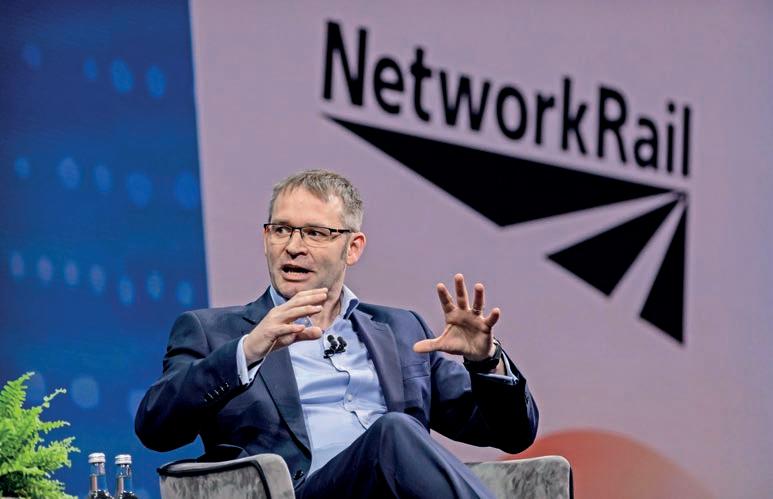
Watters then returned to the stage to interview long-time Oracle customer, Javier Echave, CFO at Heathrow Airport. The case study followed a similar theme to the previous customer stories with Echave talking about the challenges faced during the pandemic and how Heathrow had navigated the most

uncertain of times by leaning on a partnership rather than talking too deeply about technology. That partnership is built on a foundation of Oracle Fusion ERP and HCM but the narrative wasn’t bloated with product and technical bravado – it spoke to the heart of a relationship between customer and technology vendor that demonstrated, yet again, how putting the customer’s customer in the cross hairs of every endeavor was central to shared success.
Once the main stage had concluded there were a series of sessions on the exhibition floor and in various breakout rooms – too many to mention in full, but my personal highlights included:

IBM’s session which highlighted work

64 ERP TODAY | UK / EMEA | Q2 2023 | PHOTODIARY | ORACLE CLOUD WORLD
with AccorInvest Group (AIG) and demonstrated how AIG had implemented Oracle Cloud to harmonize finance, HR and ESG into a single platform. Namos Solutions ’s session that lifted the lid on the challenges of moving to the cloud through a panel session with Marie Curie, the Civil Nuclear Constabulary and University of Greenwich. Inoapps’ session that focused on decision-making and how to innovate faster which was a follow-on from a session delivered a year before at CloudWorld Vegas. And finally, Deloitte’s take on accelerating continuous innovation through digital transformation which provided insight into how Irdeto had maximized value from its investment in Oracle Cloud ERP.
Conclusion
My day concluded with a one-to-one conversation with Siobhan Wilson, Oracle’s UK country leader, and during our 30-minute tour of the exhibition hall we talked about a variety of topics including customers, competitors, young talents and opportunities. But one thing stood out above all else – partnerships. Catz, Watters, Miranda and Wilson all spoke off the same sheet – but it didn’t feel like a PR script, it felt authentic and believable.
Wilson told me that Oracle was in the business of building partnerships. Not just with its ecosystem of global consultancies. But also with other tech vendors, hyperscalers, industry leaders and anyone else who could bring something
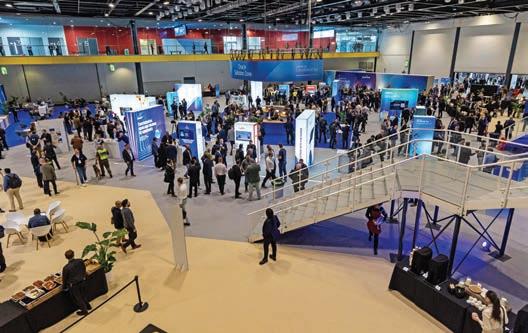
to the party and help deliver a better outcome for customers.
It struck me that this simple shift in outlook was the final piece of the jigsaw in Oracle’s own transformation. In the not-too-distant past, Oracle would have fought for every dollar on the table and favored a more isolated position in customer engagements. But the world has moved on and so has Oracle. Wilson’s explanation and commitment to win-win scenarios for all stakeholders brought all of the other conversations during the day to a meaningful and fitting conclusion.
Stay tuned and we will report back from Oracle’s flagship Cloud World conference in Las Vegas later in the year.

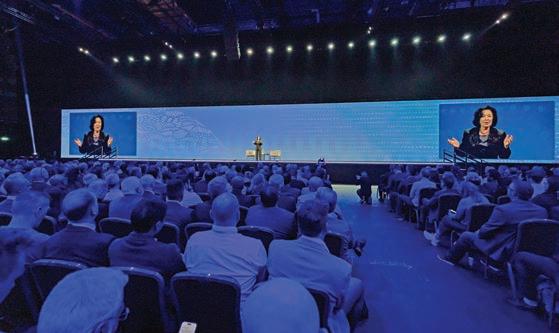
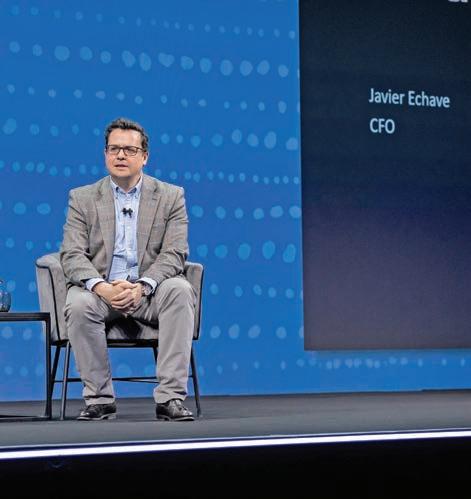
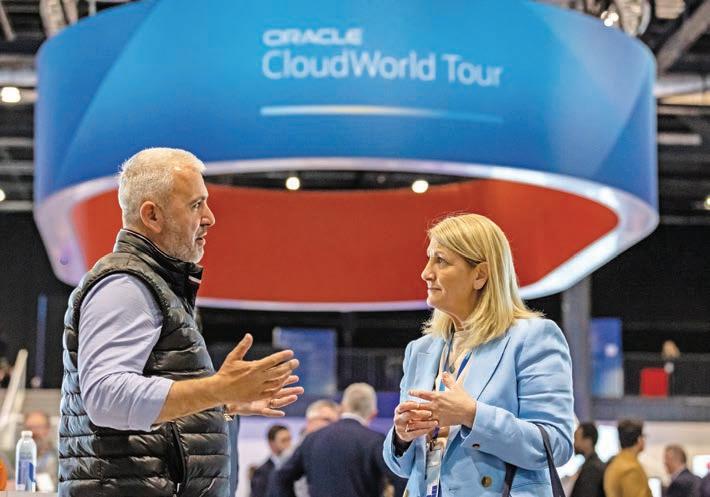
visit us ERP.TODAY 65
GLOBAL







ERP TODAY
SITS DOWN WITH DELTEK CEO MICHAEL CORKERY TO
UK / EMEA | Q2 2023
HOW THE D.C. GIANT IS GOING







visit us ERP.TODAY 67 WITH PSA
COMPANY’S EUROPEAN
DISCUSS THE
CHAPTER BY GIACOMO LEE GLOBAL DELTEK
RIGHTS, MICHAEL CORKERY SHOULD BE FAST ASLEEP. THE DELTEK
The reason for the CEO’s visit was Deltek Project Nation Live, a customer conference held in London’s South Bank area. The event, as you can guess, was the first in a while to be held in person, and is the biggest EMEA event for one of the leading brands in the professional services automation (PSA) segment of ERP.
Unsurprisingly, a key point that comes up in our conversation is how Corkery’s company works in Europe and any other region outside of the States. Deltek, for the uninitiated, made its name in the USA’s government contractor or “GovCon” space. In fact, from its Virginia headquarters located just outside of Washington, D.C., Deltek technology still rules the roost in market intelligence and contract management for federal government contractors. The unaware may also like to note that there are few points of comparison between the workings of the U.S. government and the public sector in other nations. For starters, U.S. government procurement law requires contractors to track costs by individual contract, in some cases drilling down to task orders and line items. This compliance need, Corkery underlines, is something which Deltek offers “out of the box”.
“It’s entirely different,” Corkery continues when describing the unique nature of U.S. federal law. “The U.S. government will audit these contractors for how they’re complying with all these various rules and regs. We say, maybe rightly, our software is the most audited software in the world because there are so many government audits that happen.”
Deltek’s end customers in this regard are contractors that deliver projects to the federal government. As Corkery explains, “Sometimes people get confused and think we sell to the government. We don’t. We deliver solutions to the contractors that deliver projects to the government.”
This space spans architects, engineers, construction firms, aerospace, defense and more. In fact, almost all of the verticals that Deltek has made its mark within Europe and worldwide, as evident from the stalls and talks that made up Project Nation.

“[GovCon projects] have more of a manufacturing connotation, so we have some manufacturing capabilities,” the CEO continues. “But a lot of the things that differentiate us in the professional services markets are the same in GovCon. [For example] much more acute project visibility project control out of the box.
“The thing that’s different about our solutions in government contracting is there are compliance requirements for the federal government that the contractors have to comply with that our solutions deliver straight away.”
For Corkery, the story is the same worldwide.
68 ERP TODAY | UK / EMEA | Q2 2023 | INTERVIEW | DELTEK
BY ALL
CEO HAS ARRIVED IN THE UK ON A RED-EYE FROM THE STATES, YET BY THE TIME OUR INTERVIEW TAKES PLACE LATER IN THE AFTERNOON, MIKE (AS HE’S MORE COMMONLY KNOWN) IS FULL OF ENERGY AND VERY MUCH ON-POINT IN HIS ANSWERS TO ERP TODAY.
THINGS ARE MORE POLARIZED NOW IN THE STATES THAN THEY’VE EVER BEEN
Deltek’s PSA solutions come with innovation, usability and predictive capabilities. Those solutions even feature a sprinkle of robotic process automation (RPA), with Deltek having a partnership with bot leader UiPath
The CEO notes “the dirty word around bots”. But in his view, automation - whether of the PSA, RPA or even the AI variety - is a shift for the workforce to “something that is more valuable than the mundane. That’s the way we try to make it work and it works for us and our customers, too.”
As for competitors in reaching those worldwide customers, Corkery points to names such as SAP , Microsoft and Unit4 . The difference between his company and those ERP players, as he sees it, is that Deltek is “the largest pure play project-based solution provider”.
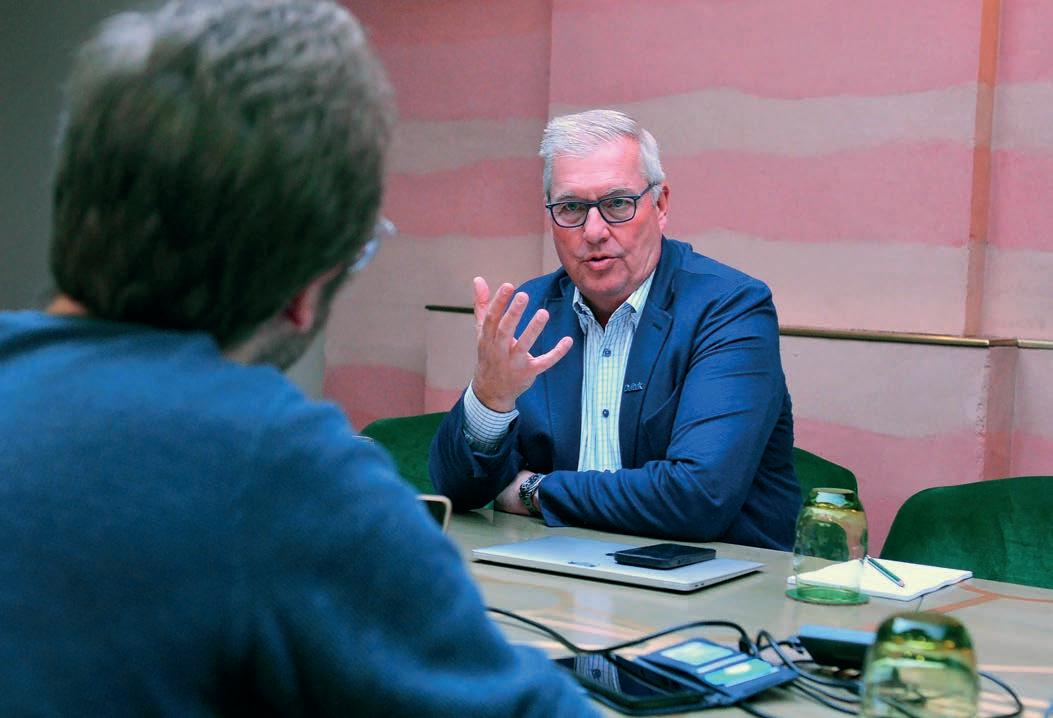
“That’s all that we do,” he explains. “That’s where all of our innovation muscle goes, after the needs of those project based-businesses. [As such] our solutions and our target markets have more depth and breadth than our competitors. Just no question. And they’re more purpose built for the user community.”
Speaking with Mike, I learn how this journey to the PSA pinnacle covers everything from Capitol
Hill to the permanent and “parental” home behind Deltek’s ever-developing dimensions.
America and administration changes
For Deltek to get to its dominion of PSA is arguably very much down to its experience in GovCon tech. Set up in 1983 by accountant Donald deLaski as Deltek Systems (with Deltek short for deLaski Technologies), the company’s USP from the start was developing software to help government contractors stay compliant with regulation. It was a shrewd move, as over time Washington accelerated its shift to private contractors with each administration.
Today, according to a Deltek spokesperson, the company captures 95 percent of public sector spending across the entirety of the U.S. federal, state, local, and education (SLED) market, as well as public sector spending in Canada. It boasts the details of over 600,000 government contacts, and, according to the Deltek website, is “trusted” by al-
visit us ERP.TODAY 69
OUR SOFTWARE IS THE MOST AUDITED SOFTWARE IN THE WORLD
most 10,000 GovCon firms, most likely counting each of the 100 top federal contractors as a client (it has certainly claimed up to all but two of them based on the Washington Technology ’s 2021 Top 100 Federal Contractors List).
A flagship product for the GovCon market is GovWin IQ, described by Corkery as a market intelligence platform that provides information related to agency contract opportunities, spending and budgets. Deltek allows government contractors to search for opportunities, with a data feed showing where those opportunities are.
“That’s something that we’re looking to bring to the professional services side,” says Corkery.
Many a consultancy might like such a tool when clamoring for a hot contract to avoid ending up in the so-called “column fodder” pile. In Corkery’s view, PSA itself can help consultancies become more competitive and efficient in the field.
he explains. “There is no wiggle room, they have to spend it. The discretionary spending is where the budget for the administration resides. And so there are different priorities for an administration.
“The spending in general has continued to increase. The good news is because we are the leading provider across the vast majority of those areas, we support all the vertical markets.”
Not that everything goes like clockwork in the hubbub of Capitol Hill, of course. As the CEO says, “It’s an ongoing negotiation all the time [and] things are more polarized now in the States than they’ve ever been.”
With such wrangling, more recent appropriations have been released later than usual. For the latest budget though, Corkery notes they’ve been released on time, early even, giving contractors the visibility of where the work is “for them to go win”.
“You don’t want that ecosystem to have that un-
“If anything it’ll give you more visibility into how projects perform, it’ll make you more adept at choosing the right project. It’s something consultancies really should focus on.”
Consultancies already help make up the Deltek client base outside of the U.S., alongside some of “the largest creative agencies” in Europe. Architecture and engineering represents another strong customer base for the brand’s PSA solutions in Europe and beyond.
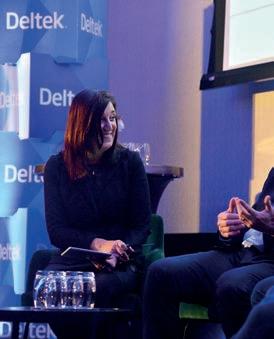
In total, Deltek’s worldwide revenue runs in excess of $800m, with U.S. GovCon making the majority of that total. As Corkery puts it, there’s “fast currents of spending” in Washington.
“The part of the government spending environment that we support is discretionary spending,”
certainty waiting to see where the appropriations and the spend is going to be…The fact that the appropriations got released early, you can see the momentum in the market is resolved.”
Deltek and the Roper playbook
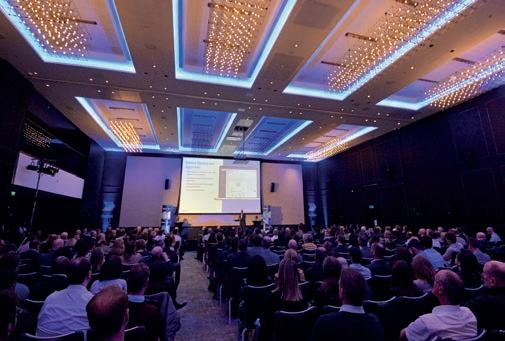
Such punctuality can explain the weight behind Deltek’s latest turnovers, and no doubt the continued approval of Roper Technologies , Deltek’s parent company. With Roper and others, Corkery has braved his own sea changes when it comes to Deltek’s administration: prior to Roper was Thoma Bravo, which acquired Deltek from New Mountain Capital in 2012.
This was two years after Corkery joined Deltek as its CFO, pivoting from a seasoned chief financial career in communications. He would go on to become president and CEO of Deltek at the start of 2013, with 2016 seeing Deltek change hands to become part of the Roper family.
On stage at Project Nation, the CEO joked about Roper being a “daddy” of sorts. Clearly, the rela -
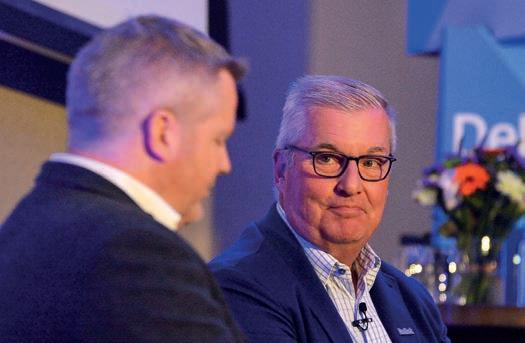
70 ERP TODAY | UK / EMEA | Q2 2023
| INTERVIEW | DELTEK
ALL OF OUR INNOVATION MUSCLE GOES AFTER THE NEEDS OF PROJECT BASEDBUSINESSES
tionship with Roper is a rosy one; Corkery points out that Deltek is the largest company in Roper’s portfolio, and that he’s a group exec at the parent company, overlooking three other names in its software portfolio.
All companies, in his view, could benefit from the permanent capital approach carried out by Roper Technologies, one which is very different to the Thoma Bravo playbook.
“Thoma Bravo’s capitals are always temporary, right?” as he reminds me. “They buy the business to sell it, because that’s what they do. Private equity firms trade businesses for profit. [While] Roper buys businesses to continue to make them better over the longer arc of time. So, they’re our permanent home. There’s something really galvanizing about that for our customers, our employees.
“With Roper, we accelerate investments that are good for the business. It’s about long-term health,
There is also the small matter of Deltek ProjectCon, as held this October in its usual spot of Orlando (very far from Capitol Hill, one will note). As Corkery puts it, “We like to say it’s the largest gathering of project geeks in the world at any point in time and we celebrate that.”
Perhaps most importantly, the company is “not laying anyone off” in the near future. This statement, made by Corkery on the Project Nation stage prior to our interview, ties in with how he celebrates the Deltek team in our conversation. When I ask how he’s found his journey from communications to leader of one of PSA’s biggest names, Cork-
perpetuity growth,” he continues. “When it comes to acquisitions, our job is to really get [Roper] as excited and have as much conviction about something as we do… Those conversations go really well, because we have a good process and language with the Roper team and that helps us as we scrutinize things that we want to take to Roper for capital allocation. We only take things that we really believe in.”
A few of those acquisitions have been in the GovCon space. Some, like the buyout of field work construction tool ArchiSnapper, have further bolstered Deltek’s already considerable reach in the A&E field. The overall picture, then, is one of quality over quantity, and shrewd, bold plays in the professional services sphere.
“More to come,” the CEO promises acquisitionswise.
Speaking with Corkery, I get a good sense of the future for Deltek: a three to five year growth plan for EMEA, for example, and no plans to establish a direct sales presence in the APAC region beyond Australia.
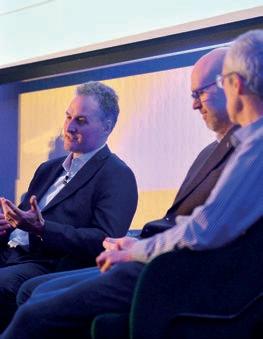

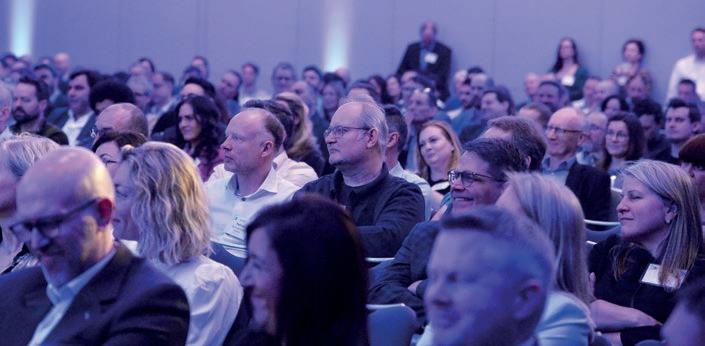
ery believes it’s all about “conscious capitalism”.
“It wasn’t necessarily a personal journey that I aspired to in any way,” he reveals. “It just kind of happened. But, you know, I would never look back and never not want to do this job, right? It’s been fantastic.”
Corkery is most proud of the culture he’s helped build at Deltek. A home, as he calls it, where “great talent can come to build their career”.
“Culturally,” he adds, “we celebrate being good people… We’ve got a set of values in the way that we treat each other and a way that we engage with customers. And if those values aren’t that important, we might not be the right place for you quite honestly.”
In other words, Deltek might very well be the most people-centric PSA brand out there, and Corkery a CEO undaunted by any kind of administration change or business upheaval. In other words, a professional brand helmed by a professional leader.
Even sleep doesn’t faze the exec, and that’s a big advantage when you have the world in your sights.
visit us ERP.TODAY 71
ROPER BUYS BUSINESSES TO MAKE THEM BETTER. SO THEY’RE OUR PERMANENT HOME
green-up The big supply chain data
Tokens are out to tackle ESG “washing”
Do you ever stop to think of where the raw materials in your day-to-day products come from? We can’t all claim to be ardent activists, but most of us would like to know that we can truthfully don the label of a morally sound “responsible consumer” and make informed purchasing decisions.
Often though, we can’t see much beyond enticingly flashy marketing and a long, sourceless list of ingredients. Which leads to the question - how can you really be sure that the ESG claims on the packaging are true?
bogs and rain forests. Destroying this habitat to plant palm plantations not only threatens biological diversity and indigenous communities, but also releases millions of metric tons of greenhouse gasses.
BY JAMES VEALE

Take the palm oil supply chain. Palm oil products are massively useful to our day-today lives and can be used across many industries from food products to beauty and hygiene products, and even as a renewable agri-resource for biofuels. A palm tree is productive for about 25 years and, on a per hectare basis, is over two and a half times more productive than the next nearest vegetable oil source, canola. It is also a much-needed source of income for developing countries, supporting millions of jobs both directly and indirectly.
The challenge with palm is that it likes to grow around the Earth’s hot and humid equator, the same areas that are home to ancient peat
So, what’s to be done? We could ban all palm products, but that would result in a major change in the availability of many of the products we rely on, make some bioenergy products unviable, and displace millions of people from employment. A better move would be to halt deforestation and work to ensure that we only buy palm from plantations that are sustainable, with ethical working practices and end of life tree succession plans.
The next challenge is how do we ensure that we are really getting our palm from the mature well-run plantation? Palm oil, like crude oil, grains and mineral ores are all examples of raw materials often referred to as commodities. Commodities tend to trade in huge bulk volumes and are priced on two simple criteria –quality and price. Often, there is little consideration for ESG factors like the “deforestation-free” status of palm in the purchasing decision and plenty of scope to “wash away” bad ESG facts for good across extended bulk supply chains.
72 ERP TODAY | UK / EMEA | Q2 2023
Turning a kernel of an idea into reality, a blockchain solution brings transparency to supply chains’ big ESG traceability problem.
Blockchain eliminates the single point of failure that all central databases have. An immutable “chain of custody” is created as the physical materials are moved and transformed.

visit us ERP.TODAY 73
Bad ESG facts “washing” up as good
My working career began over 30 years ago as a fresh-faced graduate at a major oil company, working as trade support on the trading floor. Occasionally, cargos of “distressed” crude oil would be purchased, shipped to a new location and then blended to a better quality, before being offered as a new cargo through a recognized port. All of the facts relating to the original cargo were then lost and what remained was crude that looked legitimate.
Such arbitrage and product blending are common trading mechanisms and make markets efficient, but you can see how easy it could be to “wash” crude oil with bad ESG facts to good. Whilst I have no evidence, I’m sure that Russian-origin diesel fuel is still making its way to EU markets today, despite the purchase ban on Russian crude oil products.
A blockchain, digital twin solution
So, three years ago, my business partner Nitin Jain and I saw potential for a digital information system, Greentoken, to bring transparency to these opaque upstream supply chains, regardless of the number of supply chain actors and regardless of how the commodities get processed.
Partnering with Unilever , a leading global consumer packaged goods company that has made a global commitment to only source deforestation-free agri products, we first looked to tackle a “deforestation-free status” palm oil origination out of SE Asia.
Using tokens to represent a small mass of an underlying raw material, say 1kg or 1g, as a “digital twin”, ESG facts were attached as attributes on the tokens. So, when the material is first sourced, a digital twin token is “minted” to represent the material and its ESG facts.
Then, using a decentralized blockchain ledger, we recorded the material movements. This way, unlimited quantities of commodity were modeled, regardless of where in the supply chain it was or how it is processed.
To build and drive rapid adoption across the supply chain business partner network, the GreenToken solution was deployed as a cloud product with built-in integrations to SAP ECC and S/4HANA, and via a published API to any other information system using just an internet connection and a browser.
Just like that, blockchain and digital twin technology had provided a means to tackle the “washing” problem.
A true supply chain reflection comes to fruition
Taking us back to the example of the palm fruit, as commodities are transformed (crushed to get palm oil and palm

kernels), the use of tokens can enable a mirror record of this transformation. Tracking the original tokens as new material tokens at the correct ratio, a new entry is written to the ledger showing this token transformation but also linking back to the first sourcing step token.
When the material is sent to a supply chain business partner for further processing, the correct number of tokens for the mass traded are also sent, and the copycat ledger is then updated again. An immutable “chain of custody” is created as the physical materials are moved and transformed; the tokens update the ledger building, which then shows the entire supply chain story from origin to end customer.
Using this system, we can also eliminate the “double spend” problem. In response to a goods movement to a counterparty, the correct number of tokens need to be moved and they are no longer available to use to guarantee other materials. The distributed and consensus nature of the blockchain ledger not only installs trust in the data recorded, but also allows for easy auditing of the entire chain. The blockchain eliminates the single point of failure that all central databases have, which is a single overarching “super database administrator” that can change any record at will.
A traceable takeaway
By capturing unique attributes on the token such as commodity origin, carbon footprint, no deforestation status, no child labor status, or any of hundreds of ESG facts, digital twin token and blockchain solutions can aid businesses to accelerate their industry’s shift to new auditable, sustainable practices.
Using such a network-based solution can enable businesses to create effective and efficient traceability and transparency of ESG facts across multiple supply chain partners, or within a single company.
Effectively, this method can be applicable to any industry basing its production on raw material, to prove ESG facts about its origin and how it was made and processed, while also adding value to downstream products. Whether tracing the greenness of hydrogen, proving the circularity in recycled plastic products, or even ensuring no child labor in cobalt sourcing from the Democratic Republic of the Congo, the world’s supply chains can start using technology to trace their sustainability management and fact-check their ESG claims.
74 ERP TODAY | UK / EMEA | Q2 2023 | EXPERT OPINION | ESG BLOCKCHAIN
James Veale is co-founder at GreenToken by SAP
You can see how easy it could be to “wash” crude oil with bad ESG facts to good






















































Did Visual Basic of our robot

76 ERP TODAY | UK / EMEA | Q2 2023
halt the rise overlords?
<Why {CIOs} need to beware of peer {pressure} when it comes to {ChatGPT} and who they give {power} to>

visit us ERP.TODAY 77
Robotic process automation (RPA) isn’t new. In the 80s, my dad ran a small engineering company. They bought their first IBM PC because it was the thing to do - and nobody could really fathom it out. I’d cut my teeth on ZX81s and Spectrums in my bedroom, so aged 14 I was invited in during my school holidays to help “do stuff” with their new PC. This invariably involved Lotus 1-2-3 and Borland Quattro spreadsheets, financial forecasts and production planning schedules.

 BY STUART BROWNE
BY STUART BROWNE
I didn’t know it at the time, but I’d accidentally been picked up in a new wave of technology and was learning the depths of one of the world’s core software applications with real-life applications in my teens. And I was getting paid for it; I’d spend my money on ZX Spectrum games and magazines, further reinforcing the cadence of my geek cycle. Lotus 1-2-3 had a thing called macros. A primitive language that involved mimicking the actions of a user with commands like [RIGHT], [END] and [PASTE] to automate menial tasks.
Intent
The clever thing about Macros was that you wrote them in a series of cells vertically, naming a range and then telling Lotus 1-2-3 to execute the macro in the range. It ran the “code” vertically and you could watch the automation unravel before your eyes.
This was pre-undo days - and the risk was that your Macro went wayward and deleted a load of data that you actually wanted (we’ll come back to that later).
I figured that I could make the macro comments equations with conditional results - if this cell is X, then change step 10 from [LEFT] to [RIGHT] for example. Suddenly there was a whole world of essentially dynamic code and logic.
In a half-term holiday, I’d automated the company’s cash flow spreadsheet giving daily reports on cash flow by extracting their Sage ledgers and graphing inbound and outbound transactions.
In other words, 1980s RPA.
But, in 1993 - the year I graduated with my manufacturing degree - Microsoft replaced this with Visual Basic in Excel (more specifically VBA - Visual Basic for Applications) and curbed the RPA adoption curve, making it available only to people who knew how to declare variables or write For-Next Loops.
Microsoft accidentally undemocratized RPA. And, in doing so, probably knocked
real-word automation back two decades. 1980s workforces in conglomerates and SMEs were full of bright young things without IT degrees who could parse a comma-separated values file and churn out some automated reports for their board members, who all had their automation wings clipped when VBA arrived on the scene.
Had this not happened, like Hush Puppies in Malcolm Gladwell’s Tipping Point, in-cell macros would have be -
| EXPERT OPINION | RPA
AI
Prompter - an expert in giving AI leading commands to get the “right answer”
come super mainstream like @functions and pivot tables.


Instead, we had a two-decade lag before challenger democratized RPA tools arrived on the market, and application vendors started embedding decent native workflow solutions within their cloud platforms.
Should you automate everything?
Democratized automation isn’t without its challenges. Any ability to change the inner workings of a solution - whether code or configuration - needs a modicum of change control. You can’t simply have everyone creating workflow rules to do stuff because it seems like a cool idea.
With my SAP hat on, I’ve always been amazed that some changes to the workings of your business processes require formal change control (aka Transports in SAP) whereas others can be done on a whim - the difference being that SAP simply chose to implement certain functionality in different ways, which resulted in different change governance.
One of Resulting’s partners who sell RPA solutions was recently telling me how their own RPA solutions sometimes wreak havoc in their internal systems, deactivating customers and sending out inappropriate emails because of some rule somebody set up. We got into a whole

Microsoft accidentally undemocratized RPA, knocking real-word automation back two
discussion around doing things “because you can” vs. doing things “because you should”.
Yes, you can automate practically anything. But should you?
Which kind of brings me on to AI and new tech like ChatGPT. As cool as it seems on TikTok, probably warranted more than a modicum of change control in the business world.
As humans, and as animals I guess, we’re think/do programmed. We think
about stuff, make decisions and do things. I know that’s a depressing way to think about our existence and millennia of evolution, but it is what we do in abstracted form.
If RPA is aimed at replacing some of the “do” part of our existence, then AI will replace some of the “think” part. I’m not going to get into the morals of AI - my daughter is studying social anthropology at Edinburgh, and she’s much better equipped to address this than me - but I am going to put some generalizations out there to act as thinking prompts.
AI like ChatGPT requires prompts. It requires that we provide intent. I recently even saw a talk on a (near-) future
erage, things are average.

RPA also relies on data. Worryingly, RPA’s actions sometimes change data. Or, worse, unleash it on the outside world in the form of emails, reports and so on.
This AI/RPA cycle is the most worrying thing for me in an undemocratized world. Putting this power in the hands of ‘everyone’ without due consideration and control will end badly for many businesses.
Weak-minded CIOs will also feel compelled by peers, benchmarking or Gartner to “have a go” at Chat GPT and automation because they can, rather than because they should.
They’ll do this without thinking properly about the control required. And, be-
job as an AI Intent Prompter - somebody who is an expert in giving AI leading commands to get “the right answer”. If we acknowledge that intent is an input, we have to accept that intent requires both analysis and hypothesis. We can’t provide orphan intentions like “Give me 10 things I can do today” and expect meaningful output from AI.
Analysis and hypothesis require data. And most business data is averagethat’s how averages work, right? On av-
cause of Microsoft’s VBA Macro switch out in 1993, the world has had 30 years without hardcore automation. CIOs aren’t ready for it.



If you’re one of these CIOs, or you know somebody who is, seek help before unleashing our future overlord masters on us.

visit us ERP.TODAY 79
Stuart Browne is the managing director of Resulting IT.
Weak-minded CIOs will feel compelled to “have a go” at Chat GPT and automation because they can, rather than because they should
HAPPY FIRST BIRTHDAY TO ARCWIDE AS CHIEF OPERATING EXEC ANDY GREEN DISCUSSES THE INTEGRATOR’S UNIQUE POSITION IN THE IFS ECOSYSTEM

TALL PROUD AND ARCWIDE
BY GIACOMO LEE PHOTOS BY JOEL CHANT
80 ERP TODAY | UK / EMEA | Q2 2023
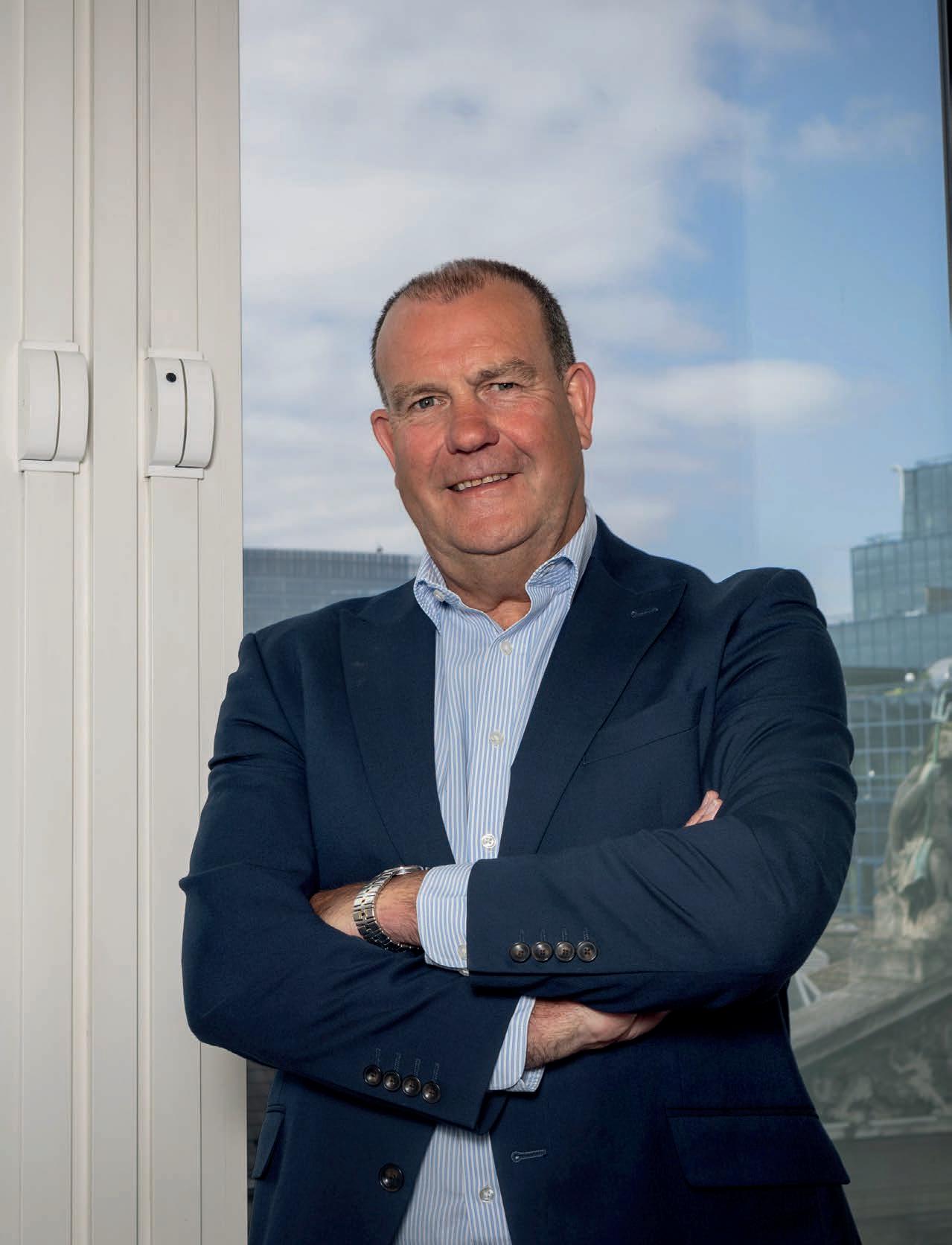
visit us ERP.TODAY 81
t’s no April Fools’ gag: as COO Andy Green tells me, Arcwide was formed on the first of April 2022, and is keen to celebrate its one year anniversary in style. There’s a lot for the system integrator (SI) to be jubilant about. When it was announced at IFS Unleashed in Miami last year, Arcwide - a joint venture between IFS and its platinum service partner BearingPointarguably had its work cut out to earn its wings in the space. Many wondered as to why IFS would create its own SI with a 50 percent stake, considering the heavy risk of putting the vendor at odds with its established partner ecosystem.
One year later, and that particular detail no longer seems to be a dominant line of topic with Green as we talk in Arcwide’s London headquarters. As the chatty and open exec puts it, “we’re over 300 people nowand we make money. We actually make a profit.”
The last year has seen the new operation make over €60m in sales, with 21 go-lives to be delivered this year at an average of €2m each adding to Arcwide’s coffers. The company is also on track to employ over 500 consultants by the end of 2023, and already has a Chicago office to its name in the States.
“We’ve done it without reaching out to the market,” Green enthuses. “IFS Unleashed was really important because when I stood up on stage, I really felt like I was announcing Arcwide to the marketplace. We feel now we’ve got our message across, people know who Arcwide are and what we do.”
It’s still worth mentioning that BearingPoint has a “bearing” in all this. Arcwide shares its London HQ with BearingPoint, along with other regional headquarters. The BearingPoint logo is on the wall, on the screens and more in the office we chat together in.

It was pressure from considerable IFS rival SAP on BearingPoint which forced the spinning out of a separate IFS consultancy in Arcwide. As ERP Today learnt last year, Arcwide came from a brainstorming session between Marc Genevois, IFS’ regional president of Southern and Western Europe and Latin America, and the MD of BearingPoint France, Philippe Chaniot.
Given its established relationship with SAP, the hands of the latter company were tied when it came to doing more business with IFS. As IFS started winning more business with BearingPoint, SAP began to make its disgruntlement known.
Necessity begat innovation, and Arcwide was created to manage the risks, with a name that came from another brainstorming session between Green and other execs.
“‘Arcwide’ came from nowhere,” laughs the COO. “It means nothing, it stands for nothing. It’s just a name!”
That name is out there though, side-by-side with BearingPoint’s. Arcwide shares service-level agreements with the original company and runs its back office off BearingPoint systems.
“The relationship with BearingPoint has never been stronger,” as the chief operating officer says. “Culturally it’s important we fit together. Operationally it’s important we fit together… What BearingPoint gets off the back of it is they don’t have an IFS consulting organization. That’s why Arcwide is here: they get the change management, they can deliver training, they can do integrations and data migration.”
And while BearingPoint remains a behemoth, Green puts down Arcwide’s current success not just to its IFS-centric operandi, but also “the personal touch” from being a smaller, nimbler player.
“We have regular calls with everybody, and we try to make those calls enjoyable,” the exec elaborates. “They feel like we’re people, and not just a COO and a CEO.”
82 ERP TODAY | UK / EMEA | Q2 2023
| INTERVIEW | ARCWIDE I
IT’S SORT OF A GENTLEMEN’S AGREEMENT THAT IF WE’RE UP AGAINST EACH
OTHER, WE WORK IT OUT.
Arcwide, the “preferred partner”
Whether that personal touch can stay in play in future is an open question. There is talk of acquisitions in the UK, US and DACH, as part of a plan to bolster Arcwide’s reselling capabilities.
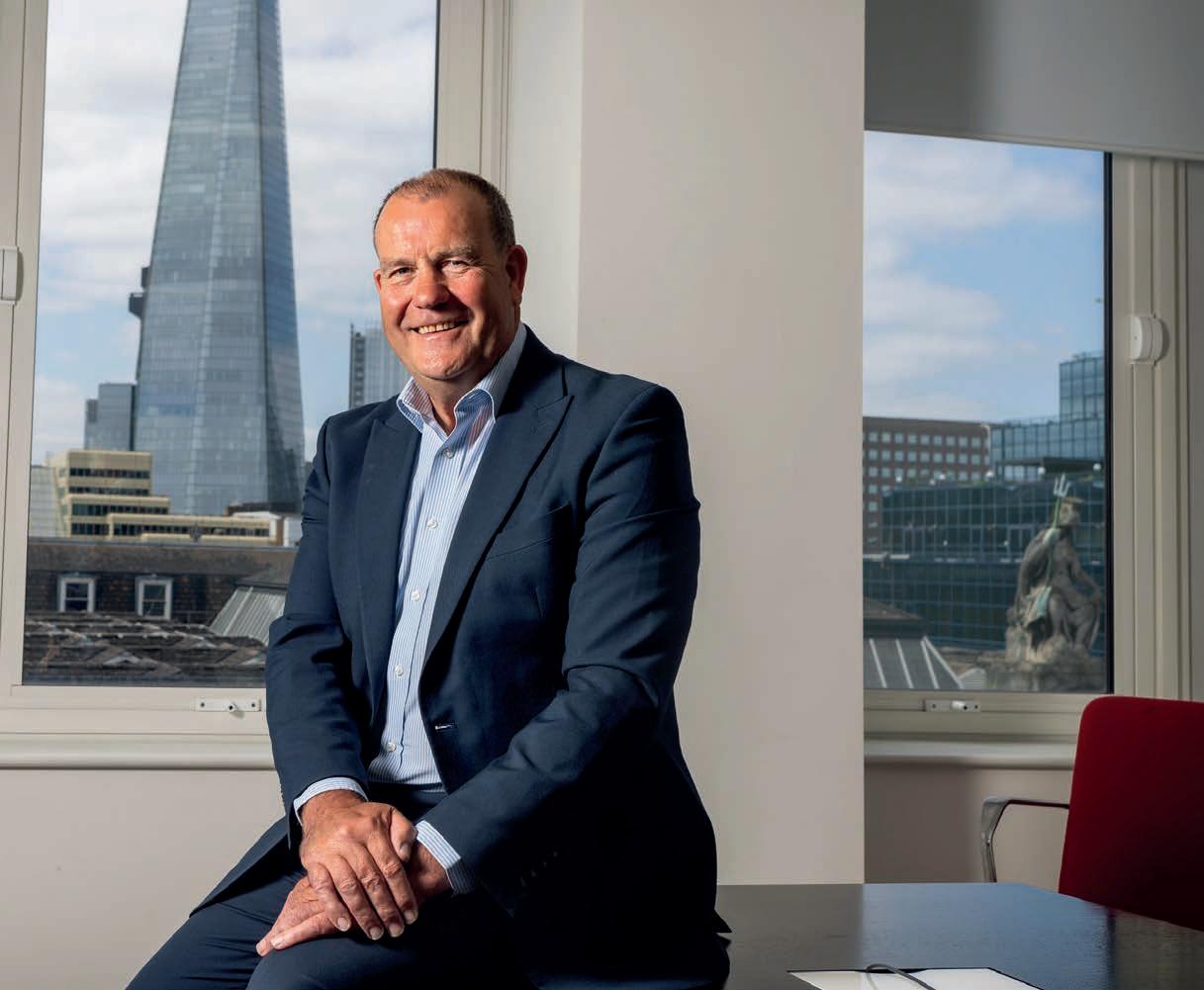
“We are not a reseller, so we don’t sell licenses. We just started doing it in France but we don’t do anywhere else, and that’s actually something we’ve always had in our business plan, to become more of a reseller from a license perspective.”
This proposition will include application managed services, taking Arcwide into “direct competition” with IFS, as Green says.
“They know that, we know that, and it’s sort of a
gentlemen’s agreement that if we’re up against each other, we work it out.”
This turn in the conversation leads me to ask the obvious question about the exact arrangement between Arcwide and IFS considering its place in the partner ecosystem. As a Platinum Elite partner, IFS fills Arcwide’s funnel from a sales perspective - but there’s more to it than that.
“We absolutely have a contractual agreement with IFS as to what we can and cannot do. That’s outside the partners’ success agreement that we have with IFS. So, we have a joint venture contract which says this is where we operate, and that we are the preferred partner.
visit us ERP.TODAY 83
“A lot of our partners don’t like us saying it, but the contract actually does say ‘preferred partner’... Contractually we can operate in certain regions under particular circumstances. [And] we do stick to the contract, but we talk to each other, right? Half of us are ex-IFS, anyway. The French worked with IFS for goodness knows how many years…
“So that’s how it works: both contractually, and a gentlemen’s agreement.”
The COO does add though that it’s not always “as easy as that”, and indeed, IFS still places great importance as ever on its partner ecosystem. Shortly after interviewing Green, I got the chance to speak with IFS CEO Darren Roos at the IFS Connect event in Birmingham, UK. When asking Roos for a general comment on Arcwide and the ecosystem, he responded:


“A bunch of the work happening now with customers on their upgrade path is being done by partners and we support [that] with our Success Service, but by and large partners are running those programs and that’s the way it should be.
“So Arcwide are an important part of it, but they are just a part of it. While we help to incubate the business and are a shareholder in it, I’ve been very clear that frankly we would do the same thing with any other partner that wanted to do it. We don’t favor them.”
Later Roos points to Arcwide’s rapid growth as an example other partners would like to follow: “If you’re a partner in the space, you need to get focused because there’s loads of work that you can win.”
Looking at the bigger IFS picture, it could be argued that the company may see its future as more partnercentric in how it delivers its services to customers. If that’s the case, then Arcwide has already set the template for future partners IFS invests in.
In the present moment, IFS and Arcwide are, as Green puts it, working “in tandem” to deliver transformational services. He reminds me that not all IFS customers are in the cloud - 30 percent according to figures from IFS Connect - and that this customer segment is earmarked as “on the path to evergreen”.
“We’re going to take on the path to evergreen, and that’s our big business interest this year - picking up as many transformational projects as we can.”
Arcwide has certainly hit the ground running with ambition - and it’s no April Fools’, folks.
84 ERP TODAY | UK / EMEA | Q2 2023
| INTERVIEW | ARCWIDE
WE MAKE MONEY. WE ACTUALLY MAKE A PROFIT.
Five



ERP.Today
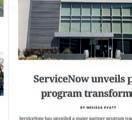
Each channel contains daily news, analysis and articles covering the key topics from each vendor with guest contributors and industry experts sharing their views and opinions.














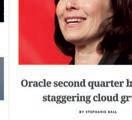





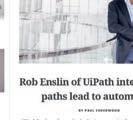











SUBSCRIBE FOR FREE WWW.ERP.TODAY
independent vendor channels dedicated to Oracle, SAP, Servicenow, UiPath and Workday are now live on
In a world overflowing with information, how can businesses start managing their data more intelligently to improve strategy?
 BY LARS HUGO BRAADLAND OLSEN
BY LARS HUGO BRAADLAND OLSEN
Too much data
and still no strategy?
How is the business world looking today?
With the constantly changing landscape after the COVID-19 pandemic, many companies are having a tough time predicting and planning their finances which is having a big impact on their operations. In addition to this, the pace of change in the corporate landscape is accelerating, driven by new technologies and companies that are not keeping up and are at risk of disappearing. Last, but not least, there is data overload (2.5 quintillion bytes of data created daily) that makes it difficult to identify relevant insights and develop effective strategies based on this data.
Do any of the above scenarios sound familiar? Many businesses are struggling to plan strategically right now but investing in the right tools for your organization will improve your ability to navigate the ever-changing business landscape and achieve long-term success. The concern stressed by many businesses is the paradoxical situation that, most probably, there is an abundance of information
available, but it is often difficult to obtain useful, relevant information when it is needed.
An overflowing cup means a messy table In a world overflowing with information, how can businesses start managing their data more intelligently to improve strategy?

Firstly, companies need to have a strategy ready with real goals. Secondly, they need the action behind these goals and a plan for how the organization will achieve them. Thirdly, a company should try to find a system that can support driving effective strategy through its daily work.
Take the strategic goal to make X amount of money - a business might initially ask how to achieve that goal and split it into action points. Then, it will work to put these actions into operation and measure the results, so it can ask if it’s going in the right direction. In theory, this sounds simple enough. But without the right system to support the process, you can quickly be lost in an overflow of
visit us ERP.TODAY 87
information, especially when you consider implementing and monitoring numerous processes throughout an entire organization.
Pouring resources into business intelligence (BI) technology can seem like the first step, and the past few years have seen an influx of investment in BI tools that help organizations digest all that overflowing data. But it is not all about buying a BI system, as often left behind is that much-needed planning for a better strategy.
Most organizations have a concept in mind for reaching their goals, but what tends to be missing is the action of turning that plan into operations because of the challenge and time it takes to make everything work cohesively and communicate effectively - and for that, there are two different ways of doing it.
The first option will be strategic planning or corporate performance management (CPM), a software application used by businesses to help manage and measure their performance against strategic goals and objectives, typically providing a suite of integrated applications designed to support various aspects of performance management, including: budgeting and forecasting, financial consolidation, financial reporting, strategic planning, score carding and analytics. The second option will be using financial planning and analysis (FP&A), a software application designed to support the financial planning, budgeting, forecasting and analysis processes within an organization.
BI systems represent only the reporting element, while CPM and FP&A tools are more about the feedback we receive from the software and arguably, as collaboration tools, the better way of understanding the data. Often, other traditional reporting tools fail to properly support the input of data or workflows. A fully operational and functional plan will see constant communication and effective collaboration between people and the software - including workflows. Here’s where we have seen systems like Hypergene and other CPM systems helping customers along the way.
The next step up: XP&A for data strategy building
Looking ahead, businesses today are seeking a more holistic approach when it comes to financial planning and analysis for their organizations to build better and more effective strategies. Increasingly, they are landing on extended planning and analysis (XP&A) tools.
XP&A combines financial and non-financial data to provide

a more comprehensive view of a business’ performance and enable better decision-making. This includes data from various sources, such as customer feedback, market trends and operational data, in addition to financial data.
The goal of XP&A is to provide decision-makers with a more complete picture of a business’ performance and help them identify new opportunities and potential risks. This is done by integrating data from across the organization and applying advanced analytics techniques, such as predictive modeling and machine learning, to uncover insights and trends that might not be apparent from financial data alone. XP&A also emphasizes collaboration and communication across different functions of the organization, enabling more effective decision-making and alignment of business goals.
Overall, XP&A is a more comprehensive and strategic approach to financial planning and analysis that can help businesses make more informed decisions and stay ahead of the competition.
Software still needs a human in the communication loop
Lately, technology has been advancing very fast, but it still needs a human component to it to make it work. Taking the example of the popular tool ChatGPT, we see that not all the generated responses are correct as it has been trained on a vast amount of data and can generate responses that are contextually relevant and grammatically correct, but there is no guarantee that it will always provide the right answer to every question.
If we extrapolate this example to XP&A, it uses AI and machine learning techniques to provide data that can support or help companies better predict their goals. But, there is always the need for a manager to go over that data and hit OK – a human element that reviews and checks all the answers to the questions.
Managing data intelligently is about collecting the right data, storing and organizing it effectively, analyzing it to gain insights and using those insights to inform better business decisions. With collaboration between departments and tools, businesses can establish data management procedures and use their data analytics tools to provide valuable insights that will inform an organization’s strategies. By continuously monitoring the strategy together with the new data, companies will stay agile and responsive to the changes in the market, managing data intelligently and using it to inform their strategies for better outcomes.
88 ERP TODAY | UK / EMEA | Q2 2023 | GUEST CONTRIBUTOR | DATA
ere is data overload (2.5 quintillion bytes of data created daily) that makes it di cult to identify relevant insights and develop e ective strategies
Lars Hugo Braadland Olsen, director BI and Analytics, Arribatec
Is your technology moving fast enough to realize your ambitions?




Learn more at ey.com/ryf

BUILD A RESILIENT ORGANIZATION READY FOR NEW GLOBAL OPPORTUNITIES

Unit4’s CEO on the global picture in business today
BY MIKE ETTLING
90 ERP TODAY | UK / EMEA | Q1 2023
Organizational resilience should be the watchword for every CEO. Not just because of the lessons learned over the previous three years, but because of what is to come. When the International Monetary Fund released its latest estimates on global economic growth, it was clear where the real opportunities lay. While the “advanced economies” may only muster GDP growth of 1.3 percent in 2023 and 1.4 percent in 2024, the emerging and developing Asian economies are estimated to achieve 3.9 percent and 4.2 percent respectively; Sub-Saharan African markets will achieve 3.6 percent GDP growth in 2023 and 4.2 percent in 2024. The United States is predicted to achieve 1.6 percent this year and 1.1 percent the following year, while it is 0.8 percent and 1.4 percent respectively for the Eurozone. The United Kingdom was in negative figures for this year (-0.3%) and only predicted to achieve one percent in 12 months’ time.
If you are a CEO of an international commercial business, are your people, processes and tools ready to help you explore the opportunities in the global economy wherever they may emerge? If not, there is a stark warning in the last Unit4 Business Future Index: only 28 percent of organizations that did not focus on rapid growth since the pandemic described themselves as outperforming 2021 targets. This compares to the global average (51%) who did embrace such changes and, in turn, reaped benefits including better workplace digitalization, improved wellbeing, stronger team collaboration and enhanced customer/end-user experiences.

visit us ERP.TODAY 91
Of course, we can argue about the validity of such forecasting as the figures are constantly amended, but as someone who grew up outside the “Globalized North”, in South Africa, I have been a keen observer of the economic and political changes in the Global South and outside the G7. These developments are now reaching a level of significance that is hard to ignore. By one calculation, 50 percent of global growth in the next five years will come from China, India, the US and Indonesia. Growth in Brazil, Russia, India and China is also expected to outperform the G7 nations. Take India, for example. In this assessment of the size of the Indian middle class, one analyst suggests it makes up 432 million people and, given that 60 percent of GDP is based on consumption, it has the potential to be a significant market opportunity.
The growth is not just confined to BRICS nations. The World Bank has described the Philippines as “one of the most dynamic economies in the East Asia and Pacific region” and that, in the short term, it will become an “upper middle-income country”.
By another estimate, in 2030, Indonesia will be the fourth largest consumer market in the world with almost 200 million consumers, while Pakistan will have 121 million consumers by the same date. The African Continental Free Trade Area (AfCFTA) has ambitious plans for a single trading area covering nearly 1.3 billion people which, when completed, has the potential to be the world’s largest free trade area with an approximate GDP of $3.4tn. If it comes to fruition, the World Bank estimates this could raise $450bn by 2035. South American countries are talking about similar trading arrangements, even discussing a common currency to ease commerce.
Change is coming and every CEO needs to be ready. Of course, I understand geopolitical and macroeconomic tremors can easily disrupt potential opportunities, and there are suggestions that we are moving away from globalization to more locally or regionally focused economies. However, astute businesses understand that future growth will likely come from diverse markets or supply chains. Every government is moving to ensure supply chain security across every sector, which means new partnerships will be struck to avoid over-reliance on individual countries or suppliers.
It is critical for CEOs to start to develop their strategies for organizational resilience now. So, what does this actually mean?
I’ve been using the Boston Consulting Group definition: “Resilience is a company’s capacity to absorb stress, recover critical functionality and thrive in altered circumstances.”
Fundamentally, organizations must have the agility to analyze and respond to diverse market opportunities in real-time. Making faster, more accurate decisions requires streamlined, integrated data that produces a single source of information. Consequently, organizational resilience requires robust core ERP foundations. Get that right and it means you can introduce the emerging tools such as automation and artificial intelligence to deliver significant process efficiencies and productivity gains. Tools like ChatGPT will eventually enable businesses to examine and consolidate processes by either automating actions or crunching vast amounts of data to reach a more accurate decision faster.
If CEOs get this approach to resilience right, they will not only be creating businesses that can survive shocks, but be more dynamic in finding opportunities anywhere around the world. With a solid ERP core, business leaders can enable agile planning. They will be able to empower teams by automating mundane tasks so individuals can focus on more rewarding, higher-value work. Leaders will also require accurate, real-time data to enable dynamic decision making, which in turn will elevate the responsibilities of the office of CFO to provide colleagues with a complete view of the business.
Ultimately, this form of organizational resilience requires a willingness to take risks, move fast and learn quickly; the example I cite often is SpaceX and its Starship rocket launch. If you judged the result by the Twitter commentary, then the rocket exploding shortly after take-off was a resounding failure. However, that is not what’s important. If you listen to the executive team and celebration after the launch in the control center, you understand that SpaceX has created a strong culture of organizational resilience, which has delivered results. Today, its Falcon 9 rocket is the market leader. Why? The team has been willing to take risks and explore opportunities, ignoring the external chatter. As the world economic landscape continues to evolve, those CEOs willing to do the same will be the ones who create more resilient businesses.
Mike Ettling is CEO, Unit4

92 ERP TODAY | UK / EMEA | Q2 2023 | GUEST CONTRIBUTOR | RESILIENCE
NEW PARTNERSHIPS WILL BE STRUCK TO AVOID OVER-RELIANCE ON INDIVIDUAL COUNTRIES OR SUPPLIERS
AS SOMEONE WHO GREW UP IN SOUTH AFRICA, I HAVE BEEN A KEEN OBSERVER OF CHANGES IN THE GLOBAL SOUTH

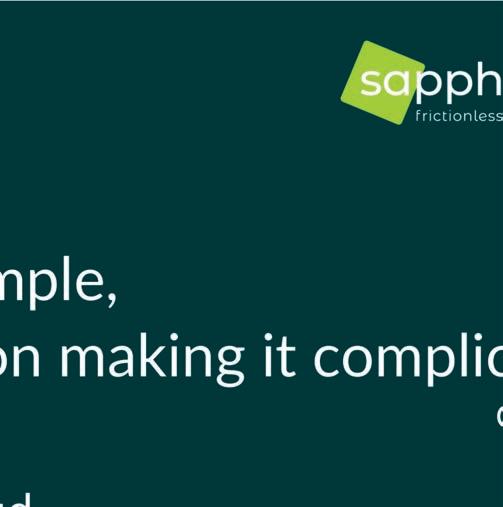

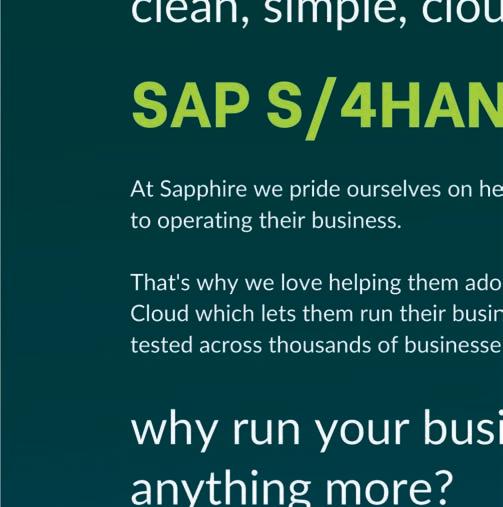
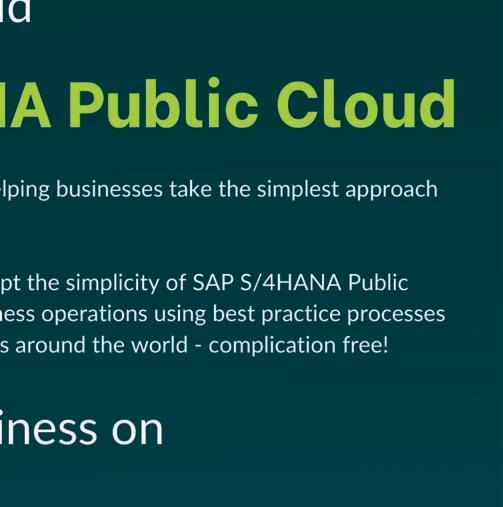


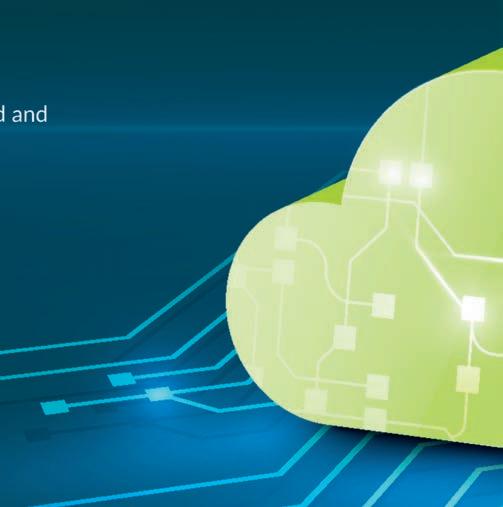

ONE DOWN
94 ERP TODAY | UK / EMEA | Q2 2023
Tim Jones, chief exec for finance and corporate at the FCDO, talks his part in the UK government’s major plan to overhaul Whitehall ERP
BY MARC AMBASNA-JONES
FOUR TO GO
Only last March, the minister for the Cabinet Office Jeremy Quin talked up the shared services strategy on its two-year anniversary claiming it could, hypothetically at least, save around £1.8bn over the next 15 years. Through five clusters, the project aims to bring 17 central government departments running unconnected ERP, HR and finance systems under one SaaS roof.
This plan to modernize government back-office systems and find efficiencies is obviously ambitious with longlead deadlines. But two years on, the government may actually have something to shout about. One of the departmental clusters has successfully completed its “go live” phase and unified its HR and finance operations on Oracle Fusion.
One of the five clusters in the shared services strategy, the Overseas cluster primarily consists of the Foreign , Commonwealth and Development Office (FCDO), a body formed in 2020 through the merger of the Foreign Office and the Department for International Development (DFID). However, as Tim Jones, the interim director general for finance and corporate at the FCDO points out, the cluster is so much more than that.
“This cluster is less about the challenges around large numbers of people and more about the challenges around geographic spread,” says Jones. He is referring to the FCDO diplomatic posts, such as embassies and consulates, of which
visit us ERP.TODAY 95
he says there are close to 300 around the world. “There are lots of bits of government working out of various locations at the same time. We have about 40 bits of government or arms-length bodies (ALBs) here and that’s what gave us an interesting challenge.”
Ideally, all these bits of government have to talk to each other, at least from a personnel and financing point of view. Historically that has not been the case, leading to inefficiencies not just in terms of cost but also in productivity and decision making.
“We had line managers on different systems to the people that they were managing. That’s not a place you want to be for too long,” says Jones, who was appointed in 2021 to head-up Hera, an ERP consolidation and change program driven in conjunction with Capgemini.
At the core of Hera is Oracle Fusion, originally chosen in a £90m-plus deal in 2020 to replace the old “Prism”, “Aries” and “HR Passport” systems. According to Jones, the first phase saw ex-foreign office
users move from a legacy Oracle system to Fusion. This went live in July last year, followed by ex-Department for International Development users in November last year. It was the first time the two departments had shared an ERP system and for Jones it was a milestone moment.
“I could see everyone in one place for the first time,” he says. “It was quite an achievement in getting to ‘go live’ with over 20,000 users, especially given the additional challenges of COVID.”
Jones adds that when the cluster implements the learning and development module later this year, it will “bump the numbers up quite a bit,” as more people will use the system to develop skills. For now though, the focus is on developing the reporting aspect of the system. This, he says, was a conscious decision. The plan was to “front load go live” recognizing that there would always be work needed post-implementation.
“Our view was that when it was switched on and we had real people with real data on the real system, we would get a
better idea of user demand and design our reporting around actual needs. In fact, we’ve just rolled out a set of reports that allow our heads of missions to get a really good dashboard.”
Jones says that the overseas cluster is “a bit further ahead than some of the other clusters,” thanks largely to the initial FCDO deal with Oracle back in 2020. While Matrix and Synergy clusters, for example, are still dealing with tenders, Overseas has had a distinct advantage on that front from its earlier need for modernization at the FCDO.

That time has already given Jones insight into the benefits of the integrated system. As he has already mentioned, oversight within the cluster has been simplified, even without the reporting function in place. There are already tangible benefits, he says.
“As a manager you can very clearly see who you have in your team and how much you are spending whereas previously across two systems, we were reliant on finance and HR partners to produce
96 ERP TODAY | UK / EMEA | Q2 2023 | INTERVIEW | GOVERNMENT IT
“OUR CLUSTER IS A BIT FURTHER AHEAD THAN SOME OF THE OTHERS”
TIM JONES / FCDO
that offline. We will be getting progressively better at this as we improve our reporting function this year.”
Jones says that while Hera is still a live program - although he admits it is being slowly turned down - the team are looking at more functionality, how to bring together various bits of data, such as career history, skills and so on, to help with employee development and recruitment. He adds that it’s important to learn the lessons of past projects and not turn off the program too soon but he says is confident and excited about the future, even if a new government comes in and decides to shake up government departments with another restructure.
“The underlying approach of the shared services strategy is interoperability, so it should be able to cope with any future changes in departments,” says Jones.
Jones is optimistic about security, too. Although he admits that maintaining security during a transformation was not always that easy, he points to the fact that this is not new territory for the FCDO as it’s used to running people overseas and focusing on security. In truth, that has traditionally been in siloed systems. This new, interoperable, collaborative approach to government surely poses new challenges, if not now, then certainly down the line.
For the moment though, the overseas cluster is an early win for the shared services strategy and for something that has had a history of ups and downs, you can never have too many of those.
WHAT ARE THE FIVE CLUSTERS?
OVERSEAS SYNERGY DEFENCE
MATRIX UNITY
CHANGING OF THE CLUSTERS
As part of the UK government’s shared services strategy, the below five clusters are planned to undergo IT modernization.
DEFENCE
Circa 200,000 staff, with its own internal complexities and security requirements. Signed deals with Microsoft for Azure private cloud and Oracle for cloud infrastructure services back in 2020.
OVERSEAS
Circa 20,000 staff, but mainly complex due to geographical spread. Currently only cluster to have gone live, as done via Oracle Fusion. Oracle declined to comment on the project to ERP Today.
SYNERGY
Led by DWP , Synergy is currently consuming services from SSCL and is already a cluster. It includes Home Office and Defra and needs to procure new ERP and services.
UNITY MATRIX
Led by HMRC , which has an SAP contract in place until 2027. Also includes Department for Levelling-up, Housing and Communities
Circa 40,000 staff, across nine departments, originally led by BEIS until its recent break-up. Also includes eight arms-length bodies such as The UK Space Agency, Equalities and Human Rights Commission and Insolvency Service. Tendering for new ERP and services.
visit us ERP.TODAY 97
“WE HAVE ABOUT 40 BITS OF ARMS-LENGTH BODIES HERE AND THAT’S WHAT GAVE US AN INTERESTING CHALLENGE”
accelerate ambition

Change is happening, right now, and it’s faster than ever before. It brings opportunity, new markets, new revenue streams; new expectations for today’s new way of work. Accelerating time to value keeps you ahead of the competition and ahead of the curve. It’s time to transform vision into reality and transform change into opportunity. It’s time to accelerate your ambition.
Enterprise solutions with IFS Cloud
To learn more, visit
arcwide.com
NEXT ISSUE
ENTERPRISES
DO YOUR WORKERS
CARE ABOUT
CYBERSECURITY
AS MUCH AS YOU?

THE
MAGAZINE FOR ENTERPRISE APPLICATIONS AND ASSOCIATED TECHNOLOGIES
OFF WITH THEIR

WHY MORE TECH FIRMS OFF WITH THEIR HEAD!
An increasing number of tech companies are abandoning the traditional HQ in favor of becoming “headquarter-less”, post-pandemic.
BY CHRISTINE HORTON
THEIR HEAD!
ARE DITCHING THEIR HQS

visit us ERP.TODAY 101
We have seen, of course, some massive changes to how we work, during and after the pandemic. A hybrid work model - with employees being cajoled back into the office at least a few days a week - seems to be winning out over the fully remote work model. But what are the reasons behind giving back the keys to the corporate HQ?
Recent global research by The Urban Land Institute and The Instant Group shows that while the office still has a key role to play in firms’ workplace strategies - conveying the corporate culture, stimulating collaboration and mentoring new and younger team members - only 14 percent of businesses now

believe their existing workspace portfolios align completely with their business objectives and strategies.
For BlueConic, it was a combination of factors, says the firm’s CEO, Cory Munchbach. While the firm’s global footprint is expanding, more than half of its US team is no longer in Massachusetts, and fewer than four percent of the company’s population on average was using the office over a given week.
“Our lease was up which afforded the opportunity to reimagine what we wanted out of physical workspace and as we looked at how our current office was - and was not - being used, it was clear that the cost of maintaining a
large office in one location came at the expense of interaction across a broader swath of employees,” says Munchbach.
In other words, the company was spending a huge amount of money for a very small percentage of the same employees to work part time. Instead BlueConic is re-allocating its office spend toward interactions in various geographies. In fact, far from employees missing out on office-based interactions, the expectation is that the company will go from around 10 percent of its US employees seeing each other regularly to more than 80 percent.
The cost considerations aren’t the only reason to downsize. It could be taken on board as part of a wider movement including the widespread adoption of remote working, less permanent office space, fewer geographical limitations affecting workforce diversity and less business travel which can all contribute to organizations meeting their ESG goals.
Indeed, the same research by The Urban Land Institute and The Instant Group shows that more than half (54 percent) of companies believe that ESG would have a “major” or “critical” impact on their office strategies.
102 ERP TODAY | UK / EMEA | Q2 2023 | EXPERT OPINION | WORKFORCE MANAGEMENT
ustomer data platform BlueConic recently made the decision to close its head office location in Boston, transforming all of its US employees into remote workers. BlueConic isn’t alone.
In fact, more tech companies are abandoning their traditional HQs in favor of becoming “headquarter-less”.
C
No center of operations
Big tech companies, like Oracle, moved their headquarters from California during the pandemic, but went on to formally establish new main offices. And some tech giants are even doubling down on new builds and expansion, such as IBM, which is consolidating its offices and relocating to occupy a 328,000 square feet new building in New York City.
But still perhaps one of the most-high profile companies to permanently ditch its corporate hub is data software vendor Snowflake , which moved from its Bay Area HQ to Bozeman, Montana in 2021.
This is an option whereby instead of rolling out a fully remote workforce, businesses deploy a “hub and spoke” model, where they have smaller offices in suburban areas closer to where their employees live.
“Under the Securities and Exchange Commission ’s rules, we are required to designate a ‘principal executive office’. For this purpose, we have designated




our office in Bozeman, Montana as our principal executive office, as that is where our chief executive officer and chief financial officer are based,” says Julien Alteirac, area VP UK&I and Benelux at Snowflake.
“We will continue to have Snowflake offices in eight US locations and an additional 18 international offices and expect to add more in the future. While San Mateo continues to remain an important location for us, we do not have a single office that is at the center of Snowflake’s operations.”
Overcoming logistical challenges of being headquarter-less
But as you might imagine, there are a number of logistical challenges that come with managing a remote global workforce.
Database software, support, and services company Percona did have an office in North Carolina, but now operates on a fully distributed and remote basis. CEO Ann Schlemmer argues that talent

is found across the globe, and the company didn’t want to limit itself to staff from a single region. Now it has more than 350 staff working around the world.
On managing those staffing challenges, she says: “In a typical year, we budget for all teams to have an in-person meeting. Remote work is fantastic but having the opportunity to meet each other, even for a short period of time, does wonders in strengthening team dynamics. We have teams across the world, so it does involve organizing travel and employee retreats to make sure we all maintain a sense of connection. Alongside these in-person company events, we also host the leadership team in different locations quarterly to review business strategy and initiatives and keep our working relationships strong.”
Nevertheless, it can be a struggle for some companies to implement remote culture best practices, or effectively support digital nomads.
Schlemmer says Percona provides an “onboarding buddy” for all new team

visit us ERP.TODAY 103
“THE COST OF MAINTAINING A LARGE OFFICE IN ONE LOCATION CAME AT THE EXPENSE OF INTERACTION ACROSS A BROADER SWATH OF EMPLOYEES”
“WE DO NOT HAVE A SINGLE OFFICE THAT IS AT THE CENTER OF SNOWFLAKE’S OPERATIONS”
CORY MUNCHBACH BLUECONIC
JULIEN ALTEIRAC SNOWFLAKE
ANN SCHLEMMER PERCONA

members. This is someone not necessarily on the same team but someone they can turn to for help navigating the early stages of their career. This makes it clear that there is always someone available to help with any kind of question that they might have when they join.
Percona also tries to break down silos such as monthly online meetings for all employees.
“This gives everyone the chance to promote any successes they have had over the last month, as well as offload and talk through anything that perhaps didn’t go the way they had wished. By talking through these moments with other staff, employees can share their wins, gain perspective on things that did not go well, and adapt.
“We also have a number of special interests, non-work related Slack channels such as cooking, pets, travel, music - the list goes on. Encouraging everyone to join channels relevant to them enables
staff to communicate and build relationships with others, even those outside of their direct team, around personal hobbies and likes.
“Being fully remote, you don’t have those moments of just bumping into someone in the hall or break room, so taking the time during team meetings or 1:1s to connect socially and discuss something other than business is crucial. It’s important that your team knows that you care about them as people, not just as staff.”
Fighting the tide to return to pre-pandemic working
BlueConic’s decision to close the doors on its HQ has been greeted by “widespread enthusiasm and support” from employees, says Munchbach.


“People want to see each other; they want to exchange ideas, collaborate and build relationships with one another. The framework we have will allow far
more of that to happen for far more people,” she says.
The CEO is adamant that other companies will follow suit in the future and hand back the keys to their HQs. “We are in the midst of a substantial shift in work - particularly for white-collar work - and while much of what is to come remains unknown, it’s simply fighting the tide to try to ‘return’ to the way we worked prepandemic.”
For now, there is still uncertainty when it comes to the adoption of new working practices. But for fast-growing companies, being able to tap into talent anywhere is now as, if not more, important than having all their employees in one place. At the same time, office lease terms have shortened since the pandemic as tenants seek more flexibility within their workforce structures. It therefore seems likely that more companies will adopt a “headquarter-less” model, with their future seemingly no longer set in stone.

104 ERP TODAY | UK / EMEA | Q2 2023
| EXPERT OPINION | WORKFORCE MANAGEMENT
“HAVING THE OPPORTUNITY TO MEET EACH OTHER DOES WONDERS IN STRENGTHENING TEAM DYNAMICS”
Above and right: Snowflake’s San Mateo o ce, with snowboards and more
Powering Project Success









Deltek ERP solutions connect and automate the project lifecycle for over 30,000 companies around the world. Project Lifecycle deltek.com/ERPToday
106 ERP TODAY | UK / EMEA | Q2 2023 for sustainable cities is a billion-dollar business Scaling startups AWS ERP Today talks to AWS’ Je Kratz, general manager, worldwide public sector partners
As AWS‘s CEO Adam Selipsky put it, and like many others have said before, “climate change is the issue of our generation”. A nice sentiment, but often followed by generally lackluster next steps and a polite politician chinwag. So, when Amazon announced a program to foster the growth of clean tech innovation in startups, it was a clear sign that Big Tech was ready to put some money and infrastructure where its mouth is - a total $2bn corporate venture capital fund’s worth of dollar, that is, and access to AWS technical experts and resources.


visit us ERP.TODAY 107
To nurture the businesses and technologists that can help with Amazon’s decarbonization mission, here entered The Sustainable Cities Accelerator, a virtual six-week, technical, business and mentorship accelerator delivered by Freshwater Advisors and Public Spend Forum, along with other industry partners. The aim of the accelerator is to foster scalable solutions between AWS customers and the best startups delivering new clean tech and climate sustainability ideas, particularly in mobility and transportation, and expose their work to make positive changes in the cities in which they operate.
Following the most recent accelerator event, we spoke to Jeff Kratz, general manager of worldwide public sector partners at AWS, to hear about the standout wins.

ERP Today (ET): Nine startups are in the Accelerator. Besides ensuring sustainability, what unifies this year’s projects? It seems energy monitoring is one trend, reflecting the current situation in energy pricing.
Jeff Kratz (JK): The startups in the AWS Sustainable Cities Accelerator for Infrastructure are using compelling and creative cloud technologies to bring about a more sustainable and digitallytransformed world. In addition to their focus on making infrastructure more sustainable, another theme that unites the startups in our most recent cohort is cost optimization.
Cost optimization is critical for customers; this is particularly true with regard to the public sector, where customers must drive results often with significant budget constraints. At AWS, we believe cloud is key to reducing cost and improving touchpoints between governments and citizens. Vutility is one of the startups in the AWS Sustainable Cities Accelerator taking an interesting approach here - they use a scalable, wireless and battery-less, behind-the-meter tracker that delivers real-time visibility into energy use. This access to information helps reduce energy costs. Another cost-optimizing startup is Conservation
Labs. Their approach is fascinating - by monitoring sound signatures in plumbing, they measure water flow throughout a building, alerting building owners of leaks and water use insights. This information shows customers how to reduce water use, and therefore optimize costs.
ET: Amongst the chosen projects and candidate pool, were any emerging tech trends more commonplace than previously? Web3, for example.
JK: Machine learning and artificial intelligence are technology trends we’re seeing more and more, in part because of their ability to derive meaningful insights from large volumes of data. We’re in an incredibly data-rich world. According to Statista , the total amount of data created, captured, copied and consumed globally is predicted to reach more than 180 zettabytes by 2025. And
across the public sector, customers are asking what they can do with that data. RUNWITHIT Synthetics is one of the startups in the AWS Sustainable Cities Accelerator that uses a type of artificial intelligence called synthetic intelligence. With synthetic intelligence, the company can show customers the impact of their sustainability decisions. With digital twins, RUNWITHIT Synthetics can add scenarios of weather, policy, technology and infrastructure to help measure predicted outcomes, including climate, emissions and economics.
ET: What advantage do cities present in global sustainability, and how can tech make its mark here?
JK: Cities have intriguing challenges and opportunities, and much of this comes down to the volume of people
108 ERP TODAY | UK / EMEA | Q2 2023 | INTERVIEW |
Cities need to be both smart and sustainable, and in most cases, a smarter city is also a more sustainable city
Cloud is key to reducing cost and improving touchpoints between governments and citizens
JEFF KRATZ Je Kratz, general manager, worldwide public sector partners, AWS
using shared systems (transportation, energy and hygiene/health services to name a few) in a small area. Concentrated populations provide cities with tremendous data. Using technology, customers can monitor and make recommendations about energy use, optimize transportation systems and traffic lights and make predictions about when maintenance will be required for key utilities such as sewer systems. Technology is a critical tool for local governments to use as they modernize cities and make them more sustainable.
ET: How does the Accelerator, and AWS’ guidance, develop year-on-year as climate challenges continue to unfurl? And how does the public sector relationship develop in this regard?
JK: My team and I start with our customers in mind and work backwards. I can share that sustainability has continued to grow in importance to customers over the past few years, particularly in the public sector. At AWS, we believe that technology can and should play a major role in improving the lives of citizens around the world. As a company, Amazon is proud to be investing and innovating in sustainability across its businesses to create a more sustainable future. This includes committing to reach net-zero carbon by 2040 as part of The Climate Pledge, Amazon staying on a path to powering its operations with 100 percent renewable energy by 2025, or AWS committing to be water positive by 2030. But we know making a difference with regard to climate challenges will require companies and governments to work together. This awareness is why in addition to working with startups through our Accelerator program, AWS also created our Smart City Competency, which recognizes
AWS partners with experience building and deploying innovative smart city solutions. The competency allows customers who are interested in smart city solutions to easily identify partners with proven success deploying smart city solutions.
ET: Sustainable cities are in. Does AWS see the Smart City as the Sustainable City - in fact, smart cities, powered by IoT, perhaps have always been on this “greener” trail, meaning it was never really about the Smart aspect. Sustainability, instead, has long been ingrained and is now, it seems, being rightfully elevated.
JK: Customers tell us that they need cities to be both smart and sustainable, and in most cases, a smarter city is also a more sustainable city. A great example is traffic lights. Cities want traffic lights to be smarter because they want to reduce congestion and create more pleasant experiences for citizens. This “smart” benefit also has tremendous sustainability benefits - with less time waiting in traffic lights, citizens generate less pollution. Automotus is a member of a previous AWS Sustainable Cities Accelerator cohort, and they are a great example of delivering solutions that are both smart and sustainable. They help cities, airports and fleets reduce congestion and safety hazards caused by the influx of commercial vehicles in urban areas. In addition to addressing congestion and safety concerns, they’re also helping customers reduce emissions.
ET: How does AWS reflect the Accelerator’s sustainability push through its own buildings and spaces?
JK: In addition to reducing emissions related to electricity use, AWS is addressing a broad category of indirect emissions, including those associated with the construction of our data centers. Concrete and steel represent two of the largest shares of embodied carbon in the data center building. AWS has multiple initiatives to reduce the carbon impact of the concrete required in construction. For example, our design
standards now require concrete with a 20 percent reduction in embodied carbon versus standard concrete for new US data centers, and we’re expanding this requirement globally.
Another way Amazon is working to reduce the carbon footprint of its buildings is with CarbonCure, which injects recycled carbon dioxide into concrete during production. In addition to its use for several data centers, Amazon is incorporating CarbonCure into the construction of the company’s second headquarters (HQ2), in Arlington, Virginia, which is expected to save more than 1,144 metric tons of carbon by the completion of the project.
Finding new, innovative solutions to improve the sustainability of AWS’s data centers is another way AWS is working to fulfill Amazon’s company-wide goal to meet net-zero carbon by 2040 - ten years ahead of the Paris Agreement.
ET: What can you say about sustainability and ensuring it on a global scale? Are there different challenges at play compared between, say, the US and Europe?
JK: To make a difference with regard to sustainability, governments and citizens around the world will all need to take action. Countries have varying environmental commitments and regulations, as well as unique challenges and opportunities given their geographies. Our focus within AWS is ensuring that customers have as many solutions as possible to help them address their smart and sustainable city journeys. In fact, across all AWS Sustainable Cities Accelerator cohorts and with our Smart City Competency, we have startups and partners available to help customers in North America, South America, Europe, Asia and Oceania.
visit us ERP.TODAY 109
With synthetic intelligence, companies can show customers the impact of their sustainability decisions
Technology can and should play a major role in improving the lives of citizens around the world
GOING UNDERGROUND

110 ERP TODAY | UK / EMEA | Q2 2023
THE DIGITAL TWIN TECH
TURNING LONDON’S DARK BLUE LINE GREEN

ESG meets data as TfL partners up with a startup to develop a digital twin which, if successful, could help make the underground carbon neutral by 2030
BY CRISTINA LAGO
visit us ERP.TODAY 111
It might not be the longest or busiest line of the underground network, but the Piccadilly line has a fascinating history - it made London the first city in the world with an underground railway connecting to an airport in 1977 and, during WWII, helped to house treasures kept by the British Museum. Today, the dark blue line is in the middle of developing a digital twin project that, if successful, could radically transform the e ciency of the whole underground network. More crucially, it could also help turn London’s public transport greener by making it carbon neutral within the next decade.
Transportation emissions in the capital decreased by nearly two million tonnes of CO2e between 2019 and 2020 due to lockdown restrictions. Nonetheless, transport is still one of the main sources of greenhouse emissions, and together with emissions from buildings, represents 90 percent of total emissions.
Achieving sustainable public transport is a priority for Transport for London (TfL), and in 2021 the local government body published its Corporate Environment Plan where it outlined the strategy that the UK capital’s transport system will follow to support the Mayor of London’s target of making the city carbon neutral by 2030.
To back the environmental agenda, the Piccadilly line upgrade (PLU) program, part of TfL’s major projects directorate, has been tasked with upgrading the tube line without closing it. Seeing the complexity of the project ahead, TfL has partnered with a start-up, Spinview , to

112 ERP TODAY | UK / EMEA | Q2 2023 | EXPERT OPINION | DIGITAL TWINS
develop a digital twin able to capture environmental data and visualize it through a bespoke platform.
Though relatively new technology, digital twins are already successfully simulating solutions across the likes of the manufacturing, automotive, retail sectors and more. Microsoft has seen wins with its Azure Digital Twins platform aiding Neptune Energy ’s offshore wind farms to understand the effect turbines have on local wildlife and ecosystems, as well as assisting Rolls Royce and Proctor and Gamble (P&G) to promote a faster, more resilient manufacturing model.
There’s certainly no sign of let-up in interest. Capgemini has also collaborated with Microsoft on a first-of-its-kind, cloud-native, serverless Azure-based digital twin platform, called Reflect IoD. Recently too, Accenture has made investments in Virtonomy , a MedTech digital twin provider, and Cosmo Tech, a global provider of digital twin simu -
lation technology. Data cloud vendor Snowflake has additionally recently released a Manufacturing Data Cloud that leverages industrial IoT and digital twin technology.
As you might imagine, enterprise is in thrall to this ability to create a digital mirror of a potential or actual real-world system or process. Digital twin technology is arguably perfect for monitoring, testing and editing, without the risk of corrupting or making an error in the real-world instance. Being able to bolster one’s ESG credentials, like TfL is doing, is the cherry on the cake for many businesses today.
Currently in its prototype for TfL, once the digital twin tech is proven it will be used to capture carbon emissions in tunnels and buildings to support the decarbonization of the TfL network and help meet the zero carbon by 2030 target, says Daniel Rahamim, innovation lead and project manager at TfL’s Piccadilly line upgrade project.


“We will be able to identify different emissions hotspots through the platform in a visual manner that will help us deal with them accordingly,” Rahamim adds. The types of data that will be captured to assess emissions include: particulate matter, CO, CO2, volatile organic compounds, butane, natural gas, as well as information that might have been missed during physical inspections, such as heat and noise hotspots.
Data is captured using a customized deep rail sensor device placed at the front of engineering vehicles. In the past, these kinds of devices were focused on capturing surface geometry, explains Greg Roach, Spinview’s CTO.
Using light detection and ranging (LiDAR) technology, a laser is fired, and the device measures the time it takes for the laser to bounce back, which allows the device to know how far away a point is in space. This happens millions of times per second, generating what is
visit us ERP.TODAY 113
called a point cloud - a representation of the surface geometry of a space or of an object.
“When you put all of those individual data points together, it creates a very accurate representation of the geometry and the surface structure of a space,” Roach says, adding that Spinview is “moving that concept into the next generation” with a device that also captures other data channels: “We’re capturing photography and ultimately we’ll be capturing infrared and hyperspectral imaging. Those are things that look beyond the visible spectrum.”
Data is then transferred to the Vision platform, which is hosted by Spinview and will be available to TfL staff. The platform is designed to “democratize” data and make it intuitively accessible and readily available to anyone in an organization, not just engineers.
The ultimate intention is to make the device and the whole digital twin system run constantly so it can offer a high-fidelity digital recreation of the Piccadilly line and can also quantify
and chart the impact of changes being made in the infrastructure.
Not just greener


In addition to the benefits that the environmental digital twin can bring to support TfL’s green agenda, Rahamim believes that the technology has great potential to support the delivery of underground projects and help with the tube’s maintenance while improving the health and safety of staff.
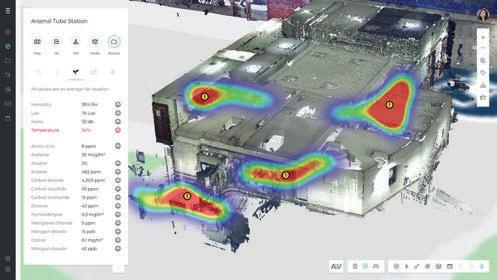
“What we hope is that we will be able to use the digital twin to issue more detailed work instructions with imagery, for example, through our software platform,” Rahamim tells ERP Today. “Our goal is that we will have visual data capture going around the network on a constant basis - that will be the live digital twin. Currently, it’s a prototype, so we are just capturing a slice in time.”

In fact, the current partnership between TfL and Spinview to create an environmental digital twin for the Piccadilly line only happened as the relationship between both parties evolved.

Obstacles on the journey
Prior to the pandemic, Rahamim and his colleagues at TfL began engaging with the private sector and SMEs through industry events to gather ideas and find solutions to some of the operational challenges facing tube lines, mainly those around mapping and surveying.
The Piccadilly line is one of the Underground’s seven “deep tube” or “deep level” lines, with tracks going as low as 30 meters below ground in some locations. These lines have circular tunnels bored deep underground: the epitome of what is commonly referred to as “the Tube”.
Deep tube lines use smaller tracks and trains than their subsurface counterparts, which makes them faster - but also presents obstacles at the time of carrying out engineering works.
Issues around GPS and Wi-Fi connectivity in this deep tube environment mean that these lines have traditionally been difficult to map in detail. Surveys can only happen during the planned 1-5am engineering works which means, “realistically”, says Rahamim, “that’s a
114 ERP TODAY | UK / EMEA | Q2 2023
| EXPERT OPINION | DIGITAL TWINS
“CURRENTLY, IT’S A PROTOTYPE, SO WE ARE JUST CAPTURING A SLICE IN TIME” - DANIEL RAHAMIM, TFL
maximum of four hours a night”.


Surveys are necessary before any new assets such as trains are introduced, or existing ones amended. But the sheer quantity of surveys needed to carry out any works, combined with the small number of engineering hours available and the necessity to follow mandatory processes and standards, result in progress being painfully slow.
The outreach to industry peers started before any upgrade works had begun on the Piccadilly line, which Rahamim said made the process simpler. “It’s easier to bring innovation into a program at its infancy,” he adds. “If you are in full delivery, it is much more difficult to do that.”
The ‘living lab’ environment of the PLU offers the opportunity to introduce innovative projects within the works of the live program of the tube line without the need to have a separate R&D project, explains Rahamim. The technology itself could be used in any of the other underground lines but the PLU program offers the opportunity to embed the project while the tube operates as normal.
It was during the industry outreach pre-pandemic that Spinview brought its digital twin proposal for overcoming some of the challenges involved in the Piccadilly line upgrade.
TfL’s next stop with its digital twin One of the main advantages that a digital twin could bring to the Piccadilly line (and, if successful, to any line in the underground) is that it would allow staff to carry out remote virtual surveys at any time outside engineering hours and without disruption to passengers. More importantly, a digital twin has the potential of making physical inspection of assets redundant, which Rahamim says would be an important health and safety win.
“Having that visual representation gives the advantage in that you can view everything without having to go down there,” he says. “We can identify if there are any issues around the areas where we’re working, which is very important from a health and safety point of view. By removing boots from the ground and doing it virtually you are increasing the
safety of our staff.”
Spinview’s Roach agrees: “The goals of this platform are not only around carbon neutrality - that’s the lead and big banner headline. But the benefits for health and safety through the use of these technologies are also significant.”
Once in use, Spinview’s virtual reality multi-user platform, Agority, will allow TfL staff to carry out virtual inspections of the Piccadilly line as if they were down in the tracks. Using a look alike avatar, staff will be able ‘to walk’ through the tube tunnels remotely as if it were a videogame using real-time data being continuously fed into the system.
“In that environment, you can do things that you could never do in real life,” says Roach about the Agority platform. “For example, if there’s something you need to inspect or measure that’s on the ceiling of a tunnel, in the real world you would need to get a five-meter ladder out and climb up there. In virtual reality, you can simply fly up there.”

If proven successful, the digital twin model could be replicated in the future upgrades of the Bakerloo, Central and Waterloo and City lines - and eventually, the whole TfL network.
Images L-R: Map-based interface with heat map dataset; heat map showing high heat in Arsenal tube station; point cloud of station
“They are very similar projects that will follow a very similar methodology and infrastructure works, which means that we can then transfer the digital twin technology over to the other lines,” Rahamim adds.
The intricacies of the Piccadilly line deep tube environment mean that if the digital twin project works there, it will be easier to replicate the solution in the rest of the underground system.
Rahamim concludes: “If we can do it in the Piccadilly Line, we can do it everywhere.”
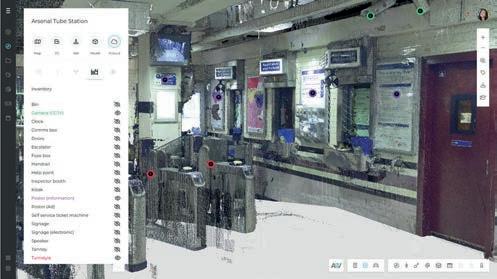
visit us ERP.TODAY 115
“THE BENEFITS FOR HEALTH AND SAFETY THROUGH THIS TECH ARE ALSO SIGNIFICANT” - GREG ROACH / SPINVIEW
BEYOND BATCH, HOW ERP STEERS
S T R E A
LIVING THE DATA STREAMING DREAM, ERP

116
FASTER WITH DATA STREAMING

M I N G
SHIFTS UP A GEAR, AS IFS AND MORE EXPLAIN
117
BY ADRIAN BRIDGWATER
Even when data has come to rest and resides in longerterm storage, it will typically have been processed through some form of transport mechanism at one stage or another. These core truisms mean that we often focus on the cadence of data and examine its ability to get to where it needs to be in a timely manner.
If we think back to pre-millennial times, data services and the users that depended on them often had to accommodate for “nightly builds” if they wanted their data backbone to serve them with the most up-to-date information. This was (and in fact still is) the era of batch processing, also sometimes
known as workload automation or job scheduling.
According to data integration and enterprise cloud platform company Tibco, batch processing is a cost-effective way to process huge amounts of data in a small amount of time.

“A good example of batch processing is how credit card companies do their billing. When customers get their credit card bills, it isn’t a separate bill for each transaction; rather, there is one bill for the entire month. That bill is created using batch processing. All the information is collected during the month, but it is processed on a certain date, all at once,” notes Tibco, in a technical briefing document.
Beyond batch, into real-time


But the world now moves faster than batch; we all work in an always-on universe where smartphones have to provide timely services in seconds and enterprise applications have to serve us with continuously integrated services and connectivity. This is the age of real-time data. Key among the enabling technologies in this space is Apache Kafka. Tracing its roots back to 2011, the technology came out of an internal project to create a messaging queue driven by software engineers working at LinkedIn
From its “basic” messaging queue beginnings, the Apache Kafka data streaming platform is now capable of handling over a million messages per second, an
118 ERP TODAY | UK / EMEA | Q2 2023 | EXPERT OPINION | DATA STREAMING
Data moves. All data at some point in its life has moved from, or moved to, one location or another. Be it from a database to an application, from some form of cloud-based repository to and from an IoT device, or simply between internal services inside an operating system or its associated connection points, data is pretty much always on the move.
REAL-TIME MEANS NOTHING IF YOU CAN’T TRUST THE DATA BEING STREAMED
amount that equates to some trillions of messages per day.
While pure Apache Kafka remains open source with the operational management responsibilities left in the hands of the user, Confluent provides a fully managed cloud-native stream processing and analysis service. It’s a technology that Confluent co-founder and CEO Jay Kreps says “goes above and beyond Kafka” for modern real-time application use cases to power what he calls real-time decision-making, or at least the digital iteration of such a process.
What is data streaming?



Going back to software engineering school for a moment, we can define data
streaming as a computing principle. It denotes an approach that oversees a time-ordered sequence for data to pass through an application, component or service. Typically focused on the lowerlevel data records happening inside any given IT system, data streaming services carry log files that relate to everything from a single keyboard stroke to industrial machine instrumentation sensor readings.
As granular and diminutive as these records are, once aggregated they help paint a richly illustrative picture of what exactly is happening inside an IT deployment. This reality logically takes us towards ERP i.e. data streaming analytics can provide us with a precision-engi-

neered view of what is happening inside an enterprise software application or function. So just how do we apply this power?
“I’m stating the obvious here, but data is what keeps any organization on track – so [the] real-time access that data streaming promises should logically be viewed as a huge asset,” says Chris Gorton, SVP for EMEA north, south and emerging markets at data management platform company Syniti. “But real-time means nothing if you can’t trust the data being streamed. Not governing and ensuring data accuracy slows down business process operations, hinders the sales process and can leave organizations at risk of non-compliance.”


visit us ERP.TODAY 119
IT WAS VERY DIFFICULT TO GET TO THAT HAPPY PLACE - KEITH RIGG / JITTERBIT
- CHRIS GORTON / SYNITI
The Syniti man reminds us that consolidating key business operations through an ERP system untangles data, making it much easier to manage and clean, so that the whole business can be sure it is using the right information, at the right time. “An ERP system’s inherent automation factor reduces the opportunity for errors and it introduces a consistency that means the data produced and streamed can ensure compliance and collaboration across teams. It means that businesses can operate more efficiently, that big sale can be closed more quickly… and those difficult decisions can be made more confidently,” adds Gorton.
The ascent of events
Many in the data business have been pushing for wider adoption of these
scheduled jobs to take a clone of their ERP or transactional data into a data warehouse, before then reporting on outdated information – for example from an integration perspective, things being scheduled every hour or, you know, twice a day.”
He says that this inconvenient truth means there’s always a latency. There’s always the opportunity for different systems in the business to disagree with one another. So there isn’t a single version of the truth within the business. For example, finance could be saying something different to customer services. Equally, customer services could be
that now (and to be honest, probably for the last five, even 10 years) the technology hasn’t been the barrier. He suggests that it’s been people’s awareness of those technical barriers being removed, or them being at the right point in an investment life cycle to be able to say, well, you know what, it’s now the point to do an upgrade or a replacement, and we can transition to this new way of working.
For the last half-decade, Jitterbit itself has always advocated event-based messaging to existing customers and prospects alike. Using its API gateway as a conduit into the firm’s own integration platform, the company then makes sure that data is moved across the enterprise in real-time. Or if not, it admits, near real-time. The foundational building blocks of the company’s “listener

BUSINESSES AREN’T JUST LOOKING AT A SINGLE STREAM OF DATA ANYMORE
- BOB DE CAUX / IFS
admittedly quite deep-dive technologies for a while. VP for technology at Jitterbit Keith Rigg openly states that his team has been advocating eventbased messaging “for some time” now. His team is in favor of real-time patterns when it takes solutions to market; they say that this approach reflects the company’s data integration platform that automates workflows and busts productivity through hyperautomation.
“There are a number of things which have happened over time,” says Rigg. “There’s too many organizations out there still relying on batch overnight
accepting an order because it appears there’s still credit available - but finance has already put them on a credit stop because they’ve not paid an invoice.
“Now, those problems may have existed historically because the organization itself wasn’t mature enough to automate and have a single virtual system and a single view of the truth. Or in many cases, the technology barriers were such that it wasn’t impossible, but it was very difficult to get to that happy place,” explains Rigg.
The Jitterbit VP urges us to fast-forward to where we are today. He suggests
framework” gives it a streaming capability at the base level of the platform. The Jitterbit message queue gives users the ability to persist messages and guarantee delivery from a source system to a target system.
Into the (data) logging business
As we embrace data streaming at a wider number of application touchpoints across the enterprise, we will inevitably be faced with a more complex data landscape overall. It makes sense therefore for data streaming specialists to develop ERP skills and, equally, for

120 ERP TODAY | UK / EMEA | Q2 2023
| EXPERT OPINION | DATA STREAMING
THIS TECHNOLOGY GOES ABOVE AND BEYOND KAFKA
- JAY KREPS / CONFLUENT
process, there is a need for a strong level of explainability. The end-user needs to understand what they’re signing off on and the outputs from those automated decisions must be provided in a way that a human can interpret.
“If a business process is automated and something does go wrong down the line, there will need to be an auditable log that shows compliance with any future AI and automation regulation. Having access to real-time data streams puts businesses in a position to improve their
ERP vendors and integration partners to develop data streaming skills.



Moving forward then, we need to realize that the actual streaming of real-time data is generally the more straightforward part of the data management process. The complexity comes from then interpreting that data in a way that is actionable and adds value to the business, whilst ensuring that the authenticity of the data collected can be trusted. This is the opinion of Bob De Caux, in his role as VP for AI and Automation at IFS
“The most efficient way of streaming data is when it is implemented as an event log that is connected to various sources. Understanding what this streamed data means in a business context allows data to be connected to the meaningful aspects of assets within an
organization where value can ultimately be added. Businesses aren’t just looking at a single stream of data anymore, as there is now technology that can handle multi-variant anomaly detection, which means pulling data together and analyzing it from multiple streams and event logs,” says De Caux.

Speaking from direct experience drawn from working with the IFS customer base, De Caux says that by observing how end-users are interacting with an application and the sensory data that streams in, business processes can be analyzed and automated using AI. He explains that essentially, this creates a feedback loop, allowing the automation of these processes to become automated. Whilst there remains a human element within this business
processes, deliver better customer experience and allows for more informed decision making - however this can only happen if the data being used is secure and authentic,” concludes IFS’ De Caux.
Dreaming the data streaming dream has arguably become an integral part of the way the most advanced enterprise IT systems are now developing. Streaming evangelists like to talk about the “death of batch”, but that’s (again, arguably) because it sounds snappy and makes for a good keynote headline or conference breakout session. There will be an element of batch data inside most IT departments of any size, principally because data types are so multifarious and diverse, but the real-time ERP stream has moved far beyond being any kind of pipe dream.
visit us ERP.TODAY 121
HOW AVOID TO A
CHATGPT

CATASTROPHE
Time for a practical look at GenAI in enterprise tech
BY VIGNESH SUBRAMANIAN
122 ERP TODAY | UK / EMEA | Q2 2023

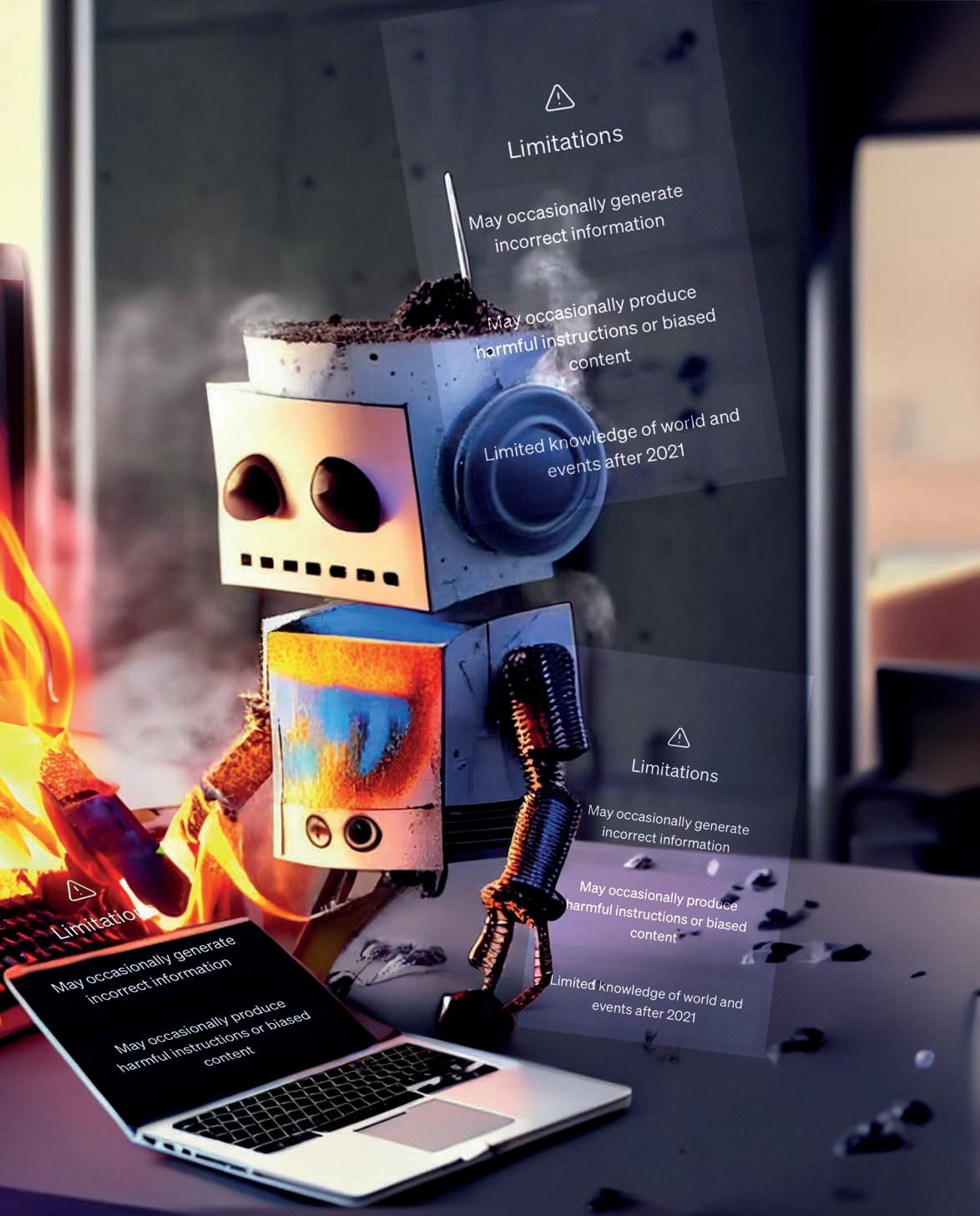
visit us ERP.TODAY 123
has certainly been hitting the headlines in 2023. We’ve had warnings of its potential to bring about the extinction of humanity, claims that it poses a national security threat, calls for all training of AIs above a certain capacity to be halted for at least six months and a resignation from Google by one of the “Godfathers” of AI, Geoffrey Hinton. Generative AI models, such as ChatGPT, seem to be some of the most discussed, with much debate around their potential to transform our everyday lives. But what about in an enterprise environment? How can businesses harness the potential power of this truly transformative technology and to what end?
Although the field of GenAI is still pretty nascent, we are definitely at an inflection point in AI and computing in general. Most of the large language models making a splash in the generative AI space are good at natural language processing (NLP). Across a multitude of industries, these GenAI models can help with NLP based applications, such as providing interactive help. You can expose your knowledge base/end-user manuals and documentation through a GenAI-based interactive chatbot, which will make finding information vastly easier for users.
Another immediate benefit, although a considerably bigger challenge, is to provide an NLP-based enterprise-wide search capability on business data. This is of course an ever-evolving space, with enterprise software businesses already hard at work investigating how GenAI models can complement existing NLP solutions and AI offerings. This could be by enhancing contextual experiences, integrating voice chat capabilities with digital assistants or machine learning (ML) models through AI platforms, and extending enterprise search into image recognition capabilities.
And, because GenAI models enable users to tap into a variety of data sources to generate text and code, formulate predictions and summaries, perform translations, analyze images and more, they can be used for a variety of enterprise use cases. These include writing emails, reports, product documentation and web content; creating job descriptions and requisitions; performing product and vendor comparisons, and assembling photos, music tracks and videos for marketing campaigns. And you can also put the NLP skills of GenAI models to good use to summarize books, review and proofread any content and provide ideas to jumpstart an initiative.
GenAI in action - and the challenges ahead

So, what does this look like in practice? Well, for example, companies with IT and software engineering departments can initiate a healthy practice of leveraging tools, such as Microsoft’s Copilot or AWS CodeWhisperer for code generation. For businesses that need to build their own industryspecific language models, simply verify general information, get reviews and recommendations by sourcing the web, or have a need to combine their private enterprise data and enrich this with information in the public domain, they can integrate with GenAI tools and platforms such as OpenAI’s ChatGPT or AWS Bedrock.
The pace of change in the world of GenAI is quick and organizations that don’t respond in time may be left behind. Ideally, businesses should be embracing this powerful technology rather than rejecting it. But that definitely doesn’t mean that one-size-fits-all when it comes to GenAI models, and there are certainly a number of challenges to be addressed before GenAI models can gain widespread adoption in enterprise environments.
124 ERP TODAY | UK / EMEA | Q2 2023 | GUEST CONTRIBUTOR | GENAI
AI
WHILE GENERATED CONTENT LOOKS ORIGINAL, IT IS IN FACT MIMICKING A PATTERN
First, there’s the issue of reliability. While the generated content from a large language model looks original, it is in fact mimicking a pattern based on a similar training data set it has been exposed to. Many times, the generated information is known to be false. And the same question can generate different answers.
Secondly, we have privacy issues. The data and the input conditions that the users share are used to train the larger model. So, valuable trade secrets or PII data can be shared, inadvertently leading to compliance violations. In addition, the generation and exchange of business-specific content must adhere to strict legal and data privacy requirements – for example, when companies perform a Data Protection Impact Assessment (DPIA) they must ensure compliance with the General Data Protection Regulation (GDPR). Most of the GenAI platform vendors do offer the possibility of keeping your enterprise data exclusive and not used for general training purposes, but it’s important that businesses who plan to use GenAI take this into account.
Then there’s the issue of bias. Content generated by AI is tailor-made based on the input prompt. You can also train the model using favorable data points only without exposing it to the full picture. Ultimately, you can mold the output the way you want – both useful and harmful. The tone of generated content could be authoritative while in fact it could be a subjective view and it would be easy to manipulate a gullible user and influence their views pretty convincingly with GenAI. Also, the risk of generating fake news, fake video and audio clips will only get higher.
Moderation filters for GenAI
That’s not to say that these challenges are insurmountable. One way to combat these threats is to apply the proper moderation filters on the end user interface through which GenAI tools can be used by “normal” users. And, without a doubt, for business use, enterprises must follow a “human in the middle” approach i.e., all generated content must be moderated by a real person before being rolled out for regular consumption. Human control and moderation will be required for some time to boost the accuracy and consistency of the generated content, help reduce socio-political biases
and ensure that a company’s competitive edge is not compromised.
Considering all of the above, enterprises need to develop a point of view of how GenAI applies to them. Additionally, it will be vital to follow the best practices from GenAI vendors – for example, the use of moderation filters from OpenAI. What we are also seeing is individual countries scrambling to come up with their own AI policies, something else that businesses will need to take into account, making sure the local AI policy is adhered to and following the proper protocols as outlined by respective governments.
Rapid evolution of GenAI
In terms of how Generative AI will evolve over the next five to ten years, investments in the technology will increase tremendously – both in terms of generating better models as well as in the hardware space, with faster more powerful chips and
the need for more network bandwidths. Its impact should definitely not be underestimated. All media content we will consume in the coming years will be influenced by GenAI; internet search as we know it will move more towards a tailored, conversational experience; tools that detect content generated by AI will get smarter and regulatory and compliance will get ever-tighter.
ChatGPT and other GenAI models represent disruptive solutions that already are helping consumers refine the search process, automate the creation of content and boost individual productivity. While we expect enterprises to adopt this powerful technology rapidly, we also hope they are aware of the potential risks, inaccuracy and privacy concerns involved too. Naturally, it’s only a matter of time before the GenAI space matures and addresses such concerns. In the meantime, with human control and moderation, GenAI models have the potential to revolutionize enterprise environments.
Vignesh Subramanian is senior director, product management, Infor
visit us ERP.TODAY 125
ENTERPRISES MUST FOLLOW A “HUMAN IN THE MIDDLE” APPROACH
THE GENERATED INFORMATION IS KNOWN TO BE FALSE - AND THE SAME QUESTION CAN GENERATE DIFFERENT ANSWERS







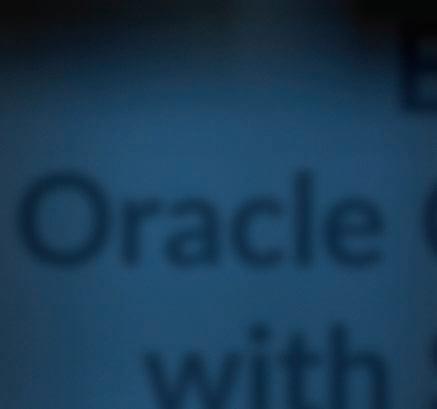








RISK NEEDN'T BREAK THE

The fix is back office innovation
BY JAMES WHYBROW
Looking back to March last year, we saw new operational resiliency rules come into force, brought in by the Prudential Regulation Authority (PRA). The rules, which impact UK banks, building societies and financial services firms, mandate that these businesses embed resilience within their operations. Organizations are now instructed to adapt systems and processes to ensure they have service continuity in the event of an incident, return to normal as soon as it’s over, and learn and evolve from the experience.
In practice, this means that banks must understand the different risks to their operations and have the right systems and processes in place

to mitigate them. These risks are broad and can range from the miscalculation of business rates to issues with cloud services, data security and third-party relationships. As the UK faces ongoing economic uncertainty, there’s no doubt that resilience is now, and will continue to be, more important than ever.

It's been over a year since these rules came into effect, and with the final deadline for sorting operational resilience set for March 2025, what’s the best way for technology to help firms get to grips with risks and create an effective contingency plan?

Dealing with disruption
While technological innovation is often channeled towards customer-facing solutions, we’ve seen that the
| GUEST CONTRIBUTOR | FINANCE
With time ticking to sort operational resiliency rules, here’s how technology can help banks get to grips with risks and create an effective contingency plan.
128 ERP TODAY | UK / EMEA | Q2 2023 IMAGE BY VECTORJUICE ON FREEPIX
fers an overall view of processes, requirements and PRA compliance frameworks. It also enables organizations to act on this information, creating, managing and analyzing end-to-end processes. This facilitates continuous process improvement, by which banks can learn from mistakes and therein improve resilience for the future.
Here's where we have also seen a steady increase of process and task mining tools, helping managers discover how systems and people are perform-
ing. Mining operational data, banks can analyze processes and simulate scenarios to discover weaknesses and resolve deviations. Sometimes, ‘the problem exists between chair and keyboard’ with human error leading to issues, and according to Verizon’s 2022 Data Breach Investigations Report, 82 percent of breaches involved some form of human involvement. Other times, the process landscape itself is convoluted or compromised, which can lead to problems when it is placed under stress. Legacy processes can be especially vulnerable here. Either way, it’s using the right tools that uncover the fix.
Beyond resilience for a moment too, these are tools that can unlock considerable economic potential through enhanced efficiency. The ability to model environments means that banks can continually optimize their operations, with considerable cost savings. For example, research from Forrester Consulting Group found that a BPM platform could deliver $7.9m of total benefits over three years. If we take this research at face value, this equates to a return on investment of up to 457 percent when using it to improve risk and compliance management processes.
Making connections
The financial sector also faces legacy issues, with 95 percent of executives believing outdated legacy systems prevent them from optimizing data and growing effectively, according to the World Retail Banking Report 2022. Many banks and financial services firms have organizational and technological silos,
as well as inflexible on-premise systems, which make it difficult to leverage data across their organization. Crucially, this means banks also lack the visibility and flexibility they need to ensure resilient operations.

Integration using cloud technology can act as a connector enabling businesses to remove these silos, but understandably, financial institutions are unwilling to migrate some systems, such as core banking modules, to the cloud for regulatory reasons. In these instances, using hybrid cloud integration can be the answer. Arguably offering the best of both worlds, banks can effectively leverage best-in-class cloud applications alongside secure core systems. A single flexible platform can bring together disparate systems, applications and data, meaning that silos can finally be a blocker of the past and banks can increasingly monitor their operations in real-time. Plus, with systems like these, they can also use microservices to improve efficiency and resilience amongst internal teams.
Resilience is now non-negotiable
There’s a reason operational resilience is such a focus for banks. As institutions held to the highest standards, robust risk-management and security, as well as regulatory compliance, is a non-negotiable factor. To maintain the trust of stakeholders, a proactive approach to resilience no doubt needs to be taken, getting to grips with their processes and data and avoiding silos.
While investment in these back-office areas may not be as flashy as a new application or improved website user interface for customers, process management and integration create a halo of benefits. There are real savings to be made, alongside real threats to be avoided so we don’t break the bank.
James Whybrow is head of financial services at Software AG UK
Sometimes, the problem exists between chair and keyboard, with human error leading to issues.
The ability to model environments means that banks can continually optimize their operations, with considerable cost savings.
visit us ERP.TODAY 129
The ERP Today Young Professionals Awards
ERP TODAY is proud to recognise the talent and efforts of young professionals who will be creating the future of enterprise technology
We’re thrilled to be hosting an awards ceremony dedicated to celebrating exceptional under 35s in the enterprise tech sector, alongside the companies and mentors who are invested in their development. There is no cost to nominate a young professional, mentor or company and tickets for the event will be available by invitation only once the shortlisting process is complete.
NOMINATIONS OPEN NOW

award categories



Future Leader Award


Bright Spark Award
Sales & Marketing Hero Award

Techie Power Award

Young Consultant of the Year
Team Player Award
Mentor of the Year
YPN Employer of the Year

Today


ypnawards.com The ERP
Young Professionals Awards
HOW KUBERNETES IS STEERING

THE FUTURE OF K8S IN ENTERPRISE TECH MAY
NEED THE SIMPLICITY OF A UNIVERSAL APPROACH
BY ADRIAN BRIDGWATER
ERP CLOUD DEPLOYMENTS

Cloud computing has experienced a certain degree of turbulence throughout its history - and the pun is quite definitely intended. First we were told that public cloud was completely secure, then we had to go back to the drawing board and start laying down some realistically robust security layers. We were told that we only needed one cloud, before we all quickly realized that hybrid combinations were eminently more sensible. The major cloud hyperscalers also suggested that we might only ever need one cloud service provider (CSP), but the world swiftly understood that multi-cloud was not just an inevitability, it was often a more prudent way of spreading costs, risks and service diversity.
Perhaps the biggest initial delusion about early cloud was that it was capable of enabling composable connectible computing power – “like a kind of Lego block” system, said the marcoms people and the cloud evangelists. In truth, cloud always was composable, but the first Lego blocks were really quite large and blocky i.e. there was definitely not enough delicate componentry to build a Lego-based Millennium Falcon - that would have to wait.
THE AGE OF COMPOSABILITY
For many people, the real age of cloud composability started just less than a decade ago with the birth of Kubernetes in 2014. Originally developed by Google and now residing under the auspices of the Cloud Native Computing Foundation (CNCF), Kubernetes is a cloud orchestration service designed to coalesce and manage the smaller discrete elements of software code that we now place in containers. As has been widely defined and described by the industry, containers are defined elements of code constructed with everything needed to run an application workload, system process or other smaller component part of a higher-level networked system of logic.
Hugely supported across the technology industry at large, Kubernetes (known as K8s for short) exists as a
platform-level technology capable of managing Windows or Linux containers and components of microservice architectures across private, public and hybrid cloud environments.
In terms of usage - and with ERP functionality very much in mind in relation to the way our always-on systems of record and transaction now require far more neural-like capabilities to interconnect and operate - Kubernetes enables software engineers and cloud architects to automatically deploy, scale, maintain, schedule and operate application containers across networked clusters of cloud instances.
As SUSE senior director and CTO, APJ and Greater China Vishal Ghariwala puts it, “Kubernetes and associated cloud native technologies can help ERP vendors architect a cloud ready and cloud native SaaS offering.”

WHAT NEXT FOR ERP KUBERNETES?
As we stand today at the post-pandemic pivot point, we should clearly be looking to engineer-in as much flexibility as possible into our IT systems to prepare for a still-uncertain future in many business sectors. In terms of how the power of Kubernetes underpins all enterprise IT stacks, that means flexibility and the power to scale both horizontally for new services and vertically for sheer size and scope. While analyst house Gartner has
lofty expectations for containers and thinks that as many as a quarter of our apps will be constructed in this form within the next five years, many commentators say that current Kubernetes solutions are not engineered to support enterprise scale.
There’s little question, Kubernetes adoption is clearly growing. Research from UK-based cloud platform company Civo suggests that in 2022, 57 percent of cloud developers saw an increase in the number of Kubernetes clusters their organizations were running. “The technology is reaching its maturity stage and is no longer a tool used by a select few cloud developers. Soon Kubernetes will become a background tool - almost like a utility - rather like how Linux currently is i.e. a foundational technology that provides a basis to build a variety of applications and workloads off of.
“As such, it’s not hard to envisage it playing a role in all cloud-based aspects of ERP. The versatility of Kubernetes across infrastructure, as well as its ability to streamline disparate workflows, makes it a perfect asset to be incorporated into ERP.”
Overall then, we can say that Kubernetes, as it relates to container management, continues to be one of the biggest technology shifts in the last decade. This was evidenced by strong growth in the Kubernetes ecosystem and a plethora of new product offerings in recent months
134 ERP TODAY | UK / EMEA | Q2 2023 | EXPERT OPINION | KUBERNETES
OFFERING
KUBERNETES CAN HELP ERP VENDORS ARCHITECT A CLOUD-READY AND NATIVE SAAS
VISHAL GHARIWALA SUSE
from Microsoft Azure, AWS , Google, SUSE and others. This is the opinion of Steve Schmidt in his capacity as general partner at Telstra Ventures, a specialist in providing venture capital investment in “lighthouse” technology companies that are commencing scale.
“Over the next 12+ months and across the full transept of ERP deployments, I predict that a vast number of software developers and operations staff will start using Kubernetes as a control plane to manage all types of infrastructure not just containers - be that public cloud, private cloud, multi-cloud or edge,” says Schmidt.

He suggests that this shift will enable all companies to achieve a level of automation, speed and scale that was previously limited to the playground of the cloud service provider hyperscalers themselves. This may be somewhat of a provocative statement but certainly, within the next 5-10 years, the industry might more widely agree that we will see that the real strength of Kubernetes lies in its power to manage all resources, not just containers. If true, this broadening can only benefit the ERP business as a whole.
“Companies such as Upbound have released the world’s first enterprisegrade distribution of the now popular CNCF project called Crossplane [which Upbound itself created]. By leveraging this capability, we’ll see more developers embrace a self-service model for software and infrastructure tooling provided by more operations teams that need to increase their level of IT automation, reliability and operating governance all while reducing their infrastructure costs,” says Schmidt. “In parallel, more of the world will embrace open source software and the level of collaboration, sharing and mutual leveraging will increase at an astounding pace as the cycle of innovation continues to quicken.”
UNIVERSAL CONTROL PLANE TAKEOFF
Companies talking to Telstra Ventures and using Kubernetes have increasingly voiced their desire for a universal control plane i.e. standardized application programming interface (API) for infra -
structure services combined with a new level of automation for infrastructure lifecycle management.
“It’s somewhat analogous to moving from an internal combustion engine with a complex system of 2000 moving parts to the elegance of an electric vehicle with 20 moving parts,” suggests Schmidt, colorfully. “Elon Musk has shown the world how the pursuit of simplicity, while improving performance, yields to incredible leaps of innovation and customer value. In the case of Tesla, the benefits were compounding as he could take all the savings on production, materials and labor and re-focus them into other value-added services such as autonomous driving. The adopters of a universal control plane will see a similar playbook unfold.”
Schmidt and team say that with the advent of generative AI services such as GPT 3 or 4, we’re seeing that adding even limited intelligence to business processes can turbo-charge efficiencies. Once again, that’s clearly good news for ERP systems that operate with varying degrees of customer or user interaction that can now be automated out and away to the bots.
CAREFUL WITH THAT THROTTLE
“However, in many cases and in many ERP stack cases in particular, putting a turbo-charger into a complex legacy
system can actually add more pain than value,” cautions Schmidt.
“In this case, organizations are better served by firstly building a new framework with better simplicity and elegance before adding more power. However, to achieve the right economics, you don’t want to re-tool every component of the framework yourself. It’s better to leverage an open ecosystem of partners and suppliers.
“In the case of IT infrastructure, the answer is an open source universal control plane based on Kubernetes. This’ll enable companies to re-tool across tens of thousands of resources with simplicity and better harness other technology shifts,” he concludes.
There’s a lot at stake here. We’re applying detailed granular computing power on a massively aggregated scale. This is not a needle in a haystack, this is a whole sewing kit of carefully built ornate needles being deployed across the entire farming estate.
The analogies are endless and we have already used several here; the point is that we are at something of a key inflection point with this technology as it has already entered mass adoption. Where we go next with Kubernetes across the ERP realm will be largely dictated by its orbit around all other enterprise IT systems, and this is a weather system worth navigating.
visit us ERP.TODAY 135
IT’S ANALOGOUS TO MOVING TO THE ELEGANCE OF AN ELECTRIC VEHICLE WITH 20 MOVING PARTS
STEVE SCHMIDT TELSTRA VENTURES
SAP Sapphire 2023

SAP’s flagship event was back in full-force this year as Sapphire was rolled out across the globe with three key events in Orlando, Barcelona and Sao Paulo.


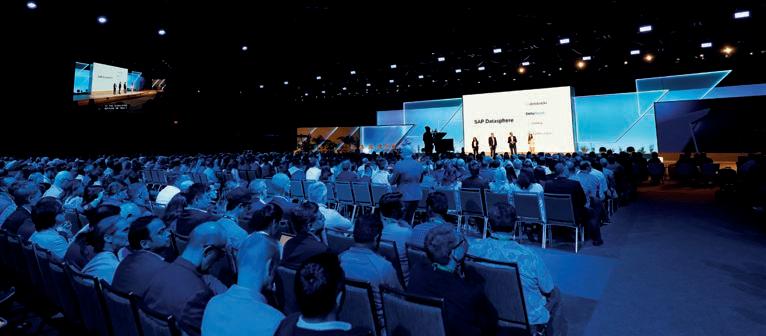

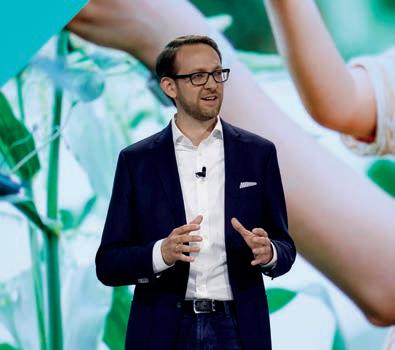

Several common threads ran through each event - but there were also some differences - most notably the absence of several executive leaders in both Europe and South America. That’s not uncommon for some locations but it was surprising that the European leg didn’t get the full SAP cast – especially given its proximity to SAP’s homeland.
Putting aside any grumbles from the press corps regarding absentees, Christian Klein was present in both the USA and Europe and delivered a keynote that brought together all the elements of SAP’s offering, underpinned by a simple message: future proof your business. Klein was in good form and used his keynote to set out the key tenets of SAP’s proposition without really defining what CIOs and technologists would call a roadmap.
Let’s look at the themes that cut across all three events:
It will come as no surprise that AI,
and more specifically generative AI, was a hot topic for SAP. Klein talked passionately about SAP’s commitment to responsible AI, showcasing several innovations that customers could already benefit from. Most of SAP’s AI capabilities will be delivered through its partnership with Microsoft and Satya Nadella dialled in by video to extol the benefits of an alliance between two of the world’s most powerful tech companies. Microsoft’s Copilot is now embedded in numerous SAP applications and the example demonstrated on stage was an
| PHOTODIARY |
ORLANDO / BARCELONA / SAO PAULO
136 ERP TODAY | UK / EMEA | Q2 2023
BY PAUL ESHERWOOD
interesting use-case from the HCM stable where job requisitions and descriptions could be enhanced and improved by AI-powered prompts and generative suggestions.
SAP also launched Green Ledger, it’s most coherent sustainability solution so far, that integrates carbon tracking in S/4 environments with industryspecific networks to bolster supply chains and build resilience. Green Ledger is the obvious evolution for SAP as it has long been the loudest exponent for sustainable commerce and its reach into global business data pro-
vides the perfect platform to develop a solution that has some real teeth.
Green Ledger can be implemented outside of RISE and GROW but the intention is to build it into the fabric of both routes to cloud ERP so that all S/4 customers inherit the capabilities as an intrinsic element of each new implementation.
SAP’s other big news was focussed on its partnerships which were demonstrated by the aforementioned Nadella and stage appearances by Thomas Kurian from Google and Rob Enslin from UiPath (although Kurian
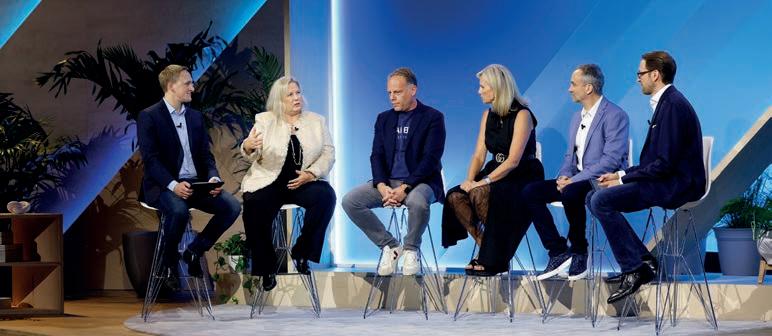


only made it to Orlando and Enslin appeared in Barcelona).
Partnerships are central to SAP’s strategy as it positions itself and cloud ERP as the control tower for modern enterprises while leveraging alliances with Microsoft for AI, Google for data, UiPath for automation and the GSIs for specific innovations. These partnerships will play an increasingly important role for SAP as Klein’s pared back approach increasingly leverages innovation from outside of SAP to support his ‘all-in’ on cloud ERP policy.
visit us ERP.TODAY 137
ServiceNow Knowledge 23
 BY STEPHANIE BALL
BY STEPHANIE BALL
Hosting more people than the Grammys, ServiceNow’s Knowledge 23 kicked off in Las Vegas. The company’s biggest event ever, over 15,000 graced the Venetian’s conference center and with everyone from former New Zealand prime minister Jacinda Ardern to music group One Republic in attendance, it is no doubt the rockstar event of the tech season.
Ever ‘hungry’ for success, ServiceNow has brought a host of new platform expansions to the fore, doubling the Now product offering since 2019 and bringing in “a new generation” for the “humble” firm.


Throwing in every trending enterprise tech bar digitalizing the kitchen sink, fresh K23 announcements included new finance and supply chain workflows, new generative AI capabilities, a one million talent growth promise by 2024 with a “RiseUp” learning initiative, non-profit services with servicenow.org and a new Microsoft partnership.
In a media exclusive briefing, Now CEO Bill McDermott shared: “My dream is to make ServiceNow the defining software company of the 21st Century. I’m on fire - right before my eyes this puppy is about to become a big dog. We are that single platform

that bypasses the complexity of operating systems and databases and application platforms that are breaking your heart, not because they are bad, but because they were good in a different era.
“We’re now walking into a new frontier of the exponential enterprise. With GenAI, you reinvent relationships and experiences, putting people in the best position to be successful. AI is going to create jobs, because companies are going to perform so much better. We can tie all these enterprise processes together on a platform that makes them all better – no one has to lose for us to win.”
| PHOTODIARY |
LAS VEGAS
138 ERP TODAY | UK / EMEA | Q2 2023
Feeding into AI hype, chief product officer CJ Desai announced that AI will be featuring across the Now ecosystem, in everything from talent nurturing to supply chain workflows. New OpenAI and domain-specific LLMs were unveiled along with Now Assist for Virtual Agent, Now’s latest GenAI solution for creating conversational experiences for intelligent self-service.
Welcoming CEO Jensen Huang on stage, a partnership with NVIDIA was revealed, to develop custom LLMs for workflow automation and features for applying GenAI to use cases across IT departments, customer service
teams, employees and developers.
With so many developments for the growing firm, it’s certainly time to wonder if ServiceNow is setting itself up to take on the larger ERP vendors.




Talking with Dave Kanter, global lead of the Accenture ServiceNow Business Group, the firm just announced as ServiceNow’s worldwide partner of the year, he said: “What’s really changed over the last eight to 12 months is that many of our clients now see ServiceNow as an enterprise platform. These bigger companies, they tend to line up to functions; Workday is HR, SAP and Oracle are finance and supply chain
– and they’re optimized for doing that function. ServiceNow spans these functions, linking them within the organization for better operability.”
Back in the expo hall, a ten-foot, bright green YES rotated on a podium front and center. Attendees enjoyed green ServiceNow M&Ms courtesy of Mars and sources to be left unnamed divulged that the lowcode alcohol mixing machines certainly crafted cocktails on the strong side. But the highlight on most people’s minds? It’s One Republic’s lead singer asking the packed-out venue to “service him now”.
visit us ERP.TODAY 139
IFS Connect UK&I BIRMINGHAM
BY GIACOMO LEE
IFS Connect rolled into Birmingham for its UK&I iteration, as held in the modern and agile venue of Millennium Point. Arguably those same descriptors could be used to describe IFS - indeed, in his fireside chat, CEO Darren Roos argued that the word businesses should keep in mind this year is agility.
The chief exec underlined his recommendation by passionately arguing against enterprises aspiring only to efficiency. In a press briefing afterwards, Roos explained that planning for efficiency results in a “blind spot for opportunities”.
“Agility effectively means we need to make savings,” the CEO continued, “but we still have to be open to the idea there will still be opportunities - and those opportunities won’t necessarily have been there prior to the downturn.”
Efficiency meant deals had been “slipping” for IFS last year, only for traction to pick up and help with recent robust quarterlies for the company. In Roos’ view, companies in the UK, Ireland and around the globe have told themselves it’s time “to get on with our lives”.
IFS Connect saw honesty on the state of the UK market; Brexit was men-
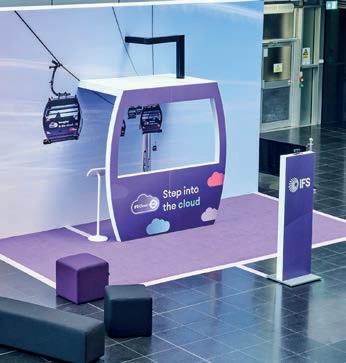


tioned by both Roos and managing director for UK and Ireland Alan Laing on stage, perhaps suggesting it’s not much of a dirty word anymore in British business. (Laing also rather memorably delivered his keynote address whilst wearing a kilt and trainers).
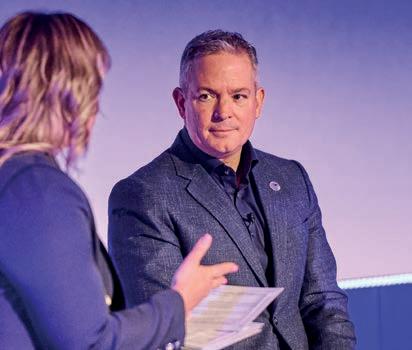
Speaking with UK&I MD Laing later in the day, I learned how IFS’ prospect is pulling in UK customers mainly in construction, manufacturing and renewables.
“We’re getting a lot of good, net new customers in renewables,” he elaborates. “Also oil and gas, but that’s kind of adjunctive to renewables. We’ve always

| PHOTODIARY
|
140 ERP TODAY | UK / EMEA | Q2 2023
had the EAM capabilities, so the majority of businesses are all about assets.”
Cars,
gondolas and factories
The event also saw interesting sessions for attendees, including the customer success story of Morgan Motor Company, British car manufacturer and, prior to IFS, one-time SAP customer. One of the company’s vehicles was proudly displayed on the event floor for attendees to snap photos of, whilst a mock replica of an IFS Cloud cable car cabin from London’s transport network provided another opportunity for fun photography.
One decent breakout session was The Connected Factory, as presented by IFS global industry directors for manufacturing, Andy Burton and Maggie Slowik. ERP Today learnt all about smart, connected factories in the IFS sense through an interview with the duo, touching on Industry 4.0 and more.
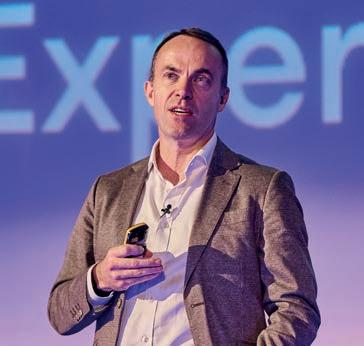


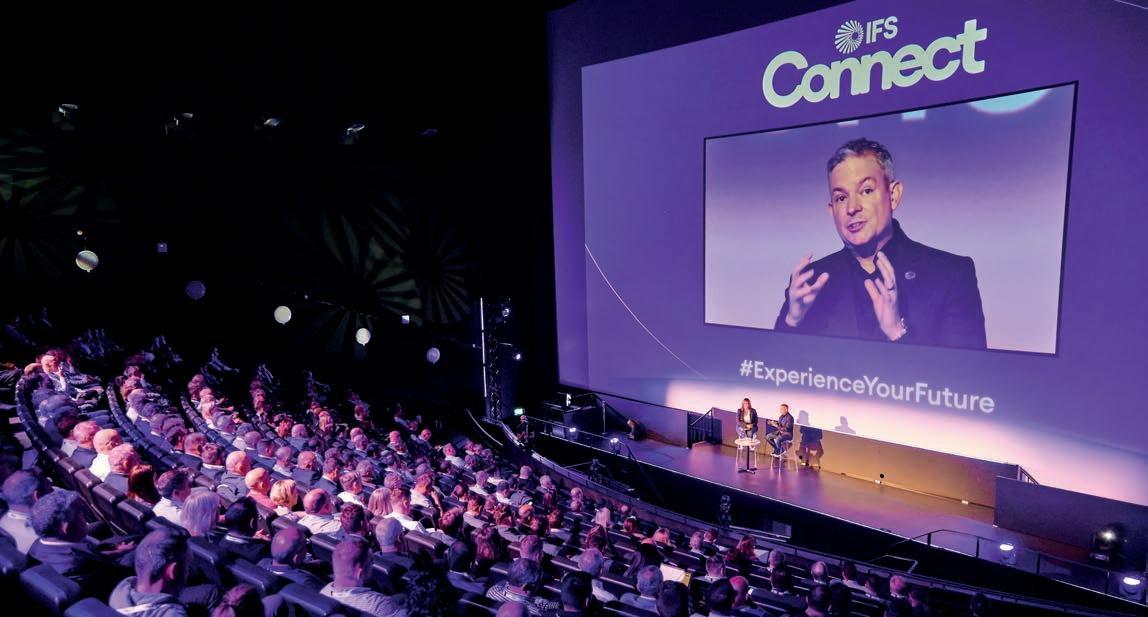
“We’ve always had a good Manufacturing Execution System (MES), but it was kind of under the radar and not user friendly,” Burton told us. “So what we’ve done is simplified it for the user and brought it into all of our dashboards”.
Meanwhile for the directors, Indus-
try 4.0 is “almost an aspiration” for business, rather than anything else.
“Industry 4.0 is looking at technology and adjusting processes, by using our people,” Slowik explained. “A lot of companies still struggle with change management and with the cross-functional approach. They’re still stuck in the early stages of digital transformation because they can’t get the talent nor get the processes and technology investment right.”
In other words, neither agile nor efficient, perhaps - and that’s where the IFS “connect” power may possibly be needed.
visit us ERP.TODAY 141
Sapphire Reconnect
BY STEPHANIE BALL
With idyllic views of the Thames, the London Eye and Big Ben, attendees converged at the County Hall for Sapphire Reconnect.



Sapphire Systems CEO Vince DeLuca kicked off proceedings with the theme of connection and reconfiguring across customers, peers and partners in times of opportunity. An exciting touch was an envelope each, containing personalized AI-generated breakdowns of how each attendee’s company can benefit from the technology.
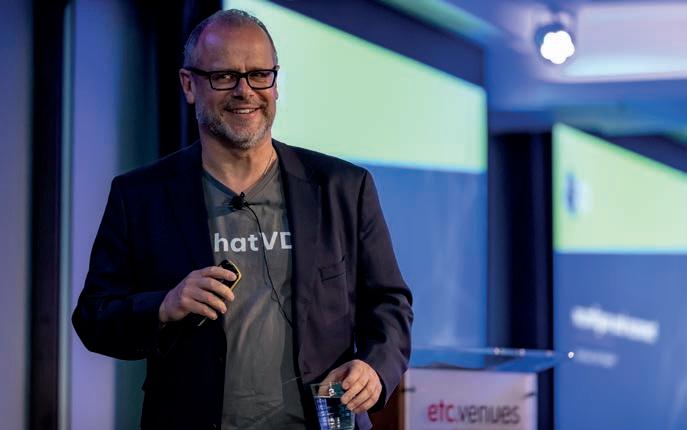
It’s been quite an 18 months, with
Sapphire expanding from core finance and ERP implementation specialisms to a wider market, with cloud at the forefront of technologies. The company has tripled its offering in the few years since DeLuca and chief strategy officer Chris Gabriel have joined the fold. Talks covered Sapphire’s enhanced solutions for supply chain, IT operations, HCM and CRM and the firm’s freshly nurtured partnerships with SAP, AWS, ServiceNow, Automation Anywhere and low-code data analytics firm Ubix Labs. Catching an aside with DeLuca, he told ERP Today: “We looked at our
customer segments and asked what are the core platforms that mid-market and lower enterprise use to run their business? In five years, we’ll have a full suite of services that mid-market and lower enterprise customers can use, and we should top the $300m mark.”
Sapphire also shared the launch of Cloudflex4, offering a SaaS-like experience to traditional ERP to open the solutions landscape up to SMEs and enable continual platform modernization.

The evening saw the venue transformed into an English beer garden, complete with grass underfoot, a fully stocked bar and giant Jenga.
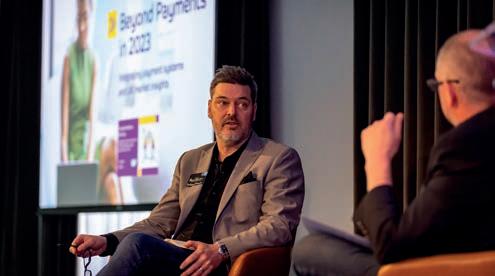
142 ERP TODAY | UK / EMEA | Q2 2023
| PHOTODIARY |
LONDON
Oracle 5 Live 2023
BY GIACOMO LEE
Even after a worldwide pandemic, there remain countless events and conferences in the ERP space. These names in the B2B live arena vary in size, stature and age; Oracle5 Live is amongst the newest names of the lot, coming back for only its second iteration in London this June.
Designed for the Oracle E-Business Suite (EBS) ecosystem, the event is the brainchild of independent Oracle partners ARCivate , Claremont , Fudge Learn , Innovate Tax and SplashBI . The opening keynote came from founder of DLA Ignite , Timothy
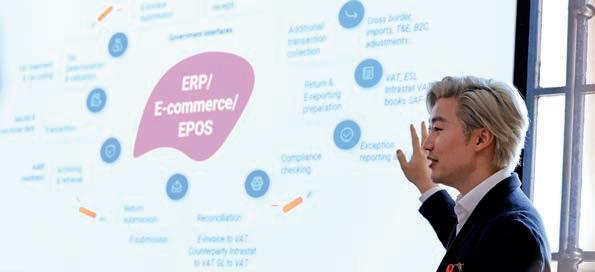
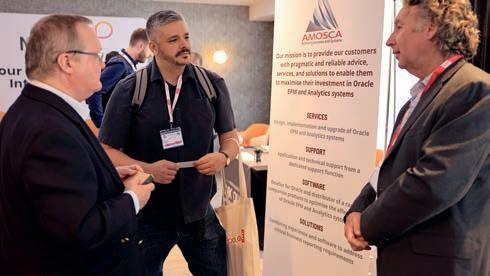
Hughes. After the keynotes came the breakout sessions, with Oracle and others on hand to share their wisdom in Westminster. Highlights included Jacqueline Ryan, sales director SaaS (UK&I), Oracle, who decluttered the mystique around low-code. We heard of a “Bridge-the-Gap” approach simplifying complex customer requirements as an extension to ERP using low code and mobile apps, streamlining business processes and giving better control, visibility, audibility and insights.
The day ended with a panel discussion between the five partners
behind Oracle5 Live, as helmed by SplashBI’s country head, UK & EMEA, Graham Spicer. Their guest this year was Jason Bowers, business development director at Oracle. It was another lively session with Spicer doing a fine job of presenting; the SplashBI exec was on MC duties for the day and did so with humor and genuine insight into the EBS ecosystem.
With another well-held event to its name, expect Oracle5 Live to return in 2024 and once again put its stamp on the map for Oracle networking in UK&I.


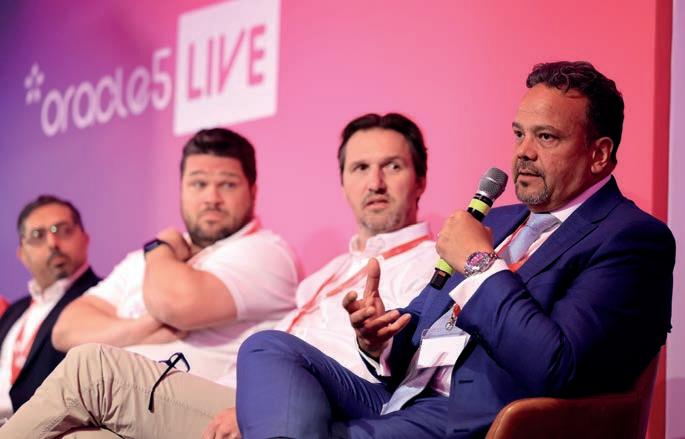
visit us ERP.TODAY 143
| PHOTODIARY |
LONDON
SIGNING OFF
OUR AI FUTURE: A YOUNG PROFESSIONAL’S VIEW
BY VIVIEN BOCHE
As a young professional immersed in the world of technology, I’ve been thinking a lot about how life in our industry will change over the next three decades due to AI. Reader - are you ready for a trip with me into the world of ERP Tomorrow?
2033: Establishing a relationship
Every morning, I receive a notification with urgent tasks based on my schedule and incoming emails. Simple email requests are already answered, and meetings are scheduled. Personal assistants have become widespread, and almost everyone has one - an AI one, in fact.
By 2033, almost every job has changed whilst some have disappeared - but many new ones have also been created. I interact daily with our AI department, which provides us with our internal assistants, and who also oversee our external AI software.
20 years ago, the role of a data privacy officer was unimaginable, but it dramatically changed in the following years. Nowadays, the importance of our chief AI officer cannot be underestimated.
2043: Embracing AI synergies
In 2043, AI is a fundamental part of our work lives, very much like smartphones were in 2023. My AI assistant understands language nuance, tone and context, enabling personalized communication. It offers real-time language translations and contextual recommendations based on the other person’s communication style, fostering stronger relationships and effective cross-border collaboration.
Our HR department recently informed us of lowered job entry barriers across the industry due to AI. Everyone is hiring from a wider pool of candidates, giving candidates a more equal chance. In 2043, as the head of Technology and AI Transformation, I particularly enjoy the features of job description creation. My team suggests desired skills and personality traits, and the AI compares them with our work history to create an unbiased job description. Interview ques-
tions are generated based on the open position and candidates’ resumes.
New job roles, such as AI troubleshooters and AI authenticators, have become essential in our daily interactions. AI troubleshooters are our customer support teams who assist with queries about our software. AI authenticators regulate and monitor our AI models. They oversee AI prompts and outputs to prevent misuse and false information/content creation. AI departments are an essential part of organizations nowadays.
2053: Redefining collaboration
Today is an exciting day as I deliver my first keynote as chief AI officer in 2053. It’s unlike any presentation I’ve given before. I will trial a co-presentation with my AI assistant. How will this work?
Her role will be to constantly analyze the facial expressions and biometric data of the audience to gauge their emotional response in real-time. We will use this feedback to adapt the content of the presentation on the fly. Based on the audience’s reaction, we will adjust the narrative and bring up relevant statistics and customer examples on the spot. Additionally, she will monitor my gestures, pace and rhythm, and let me know if I should talk slower or adjust my energy to keep the audience engaged. She will also create virtual environments that match the content of our presentation, delivering a more immersive and interactive experience for the audience. We will also provide personalized call-to-actions and learning paths based on each individual’s knowledge level and goals.
My co-presentation with the AI assistant represents a significant milestone in presentations and the role of a chief AI officer. Let’s see how it goes in this ever-changing world of ERP Tomorrow.
 Vivien Boche is senior director BTP, SAP and a council member of the ERP Today Young Professional Network.
Vivien Boche is senior director BTP, SAP and a council member of the ERP Today Young Professional Network.
144 ERP TODAY | UK / EMEA | Q2 2023
The importance of our chief AI o cer cannot be underestimated
































www.quitelaterally.co.uk enquiries@quitelaterally.co.uk www.linkedin.com/company/quite-laterally Findingyourway throughyourERP projectisn'teasy... wesupportandcomplementourcustomersownteam tomeettheirspecificresponsibilities forprojectdelivery

ifs.com Orchestrate your customers, people and assets with composable enterprise software from IFS. Deliver your Moment of Service™.





















































































































































































































































































































































































































 BY PASCAL BORNET AND KIERAN GILMURRAY
BY PASCAL BORNET AND KIERAN GILMURRAY





































































 BY STUART BROWNE
BY STUART BROWNE


















































 BY LARS HUGO BRAADLAND OLSEN
BY LARS HUGO BRAADLAND OLSEN



























































































































 BY STEPHANIE BALL
BY STEPHANIE BALL



























 Vivien Boche is senior director BTP, SAP and a council member of the ERP Today Young Professional Network.
Vivien Boche is senior director BTP, SAP and a council member of the ERP Today Young Professional Network.






































































